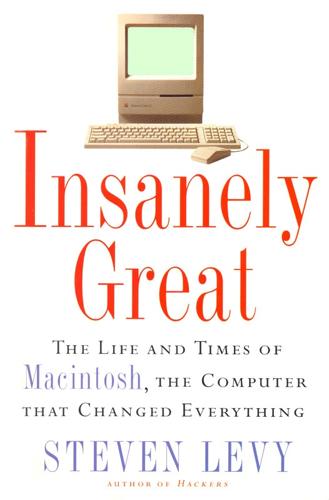
Insanely Great: The Life and Times of Macintosh, the Computer That Changed Everything
by
Steven Levy
Published 2 Feb 1994
A young woman in bright red shorts and a T-shirt with the Macintosh "Picasso" logo. She carries a sledgehammer. At the end of the speech she bursts into the room, races down the aisle, and flings the sledgehammer into the screen. The Big Brother image evaporates in a white-hot explosion. Apocalypse! The inmates are stunned in slackjawed amazement. And on the screen-not the screen just destroyed, but the television screens of 43 million people watching the Super Bowl-appeared the followingwords: On January 24th, Apple Computer will introduce Macintosh. And you'll see why 1984 won't be like "1984." This was the notorious "1984" spot.
…
Only at the last minute, when its advertising agency couldn't resell the time slot, did the company finally draw in its gut and give the okay to air the" 1984" spot. It turned out to be one of the most famous commercials ever aired-the network news shows even did reports on it. (Later, Apple's John Sculley would speak of the advertisement, as if he had known its power all along, as an example of "event marketing.") Long after people forgot who played in that Super Bowl, they remembered the commercial. It was Apple's first official public acknowledgment that Macintosh existed. Real Artists Ship. Those words must have been ringing in the ears of Mac team designers, in Jobs's mocking whiny cadence, for weeks before the scheduled launch.
…
In the entire (admittedly brief) history of the industry, the only machines surviving to old age have been the Apple II, the IBM PC and its clones, and Macintosh. In order to keep Macintosh fresh and competitive, Apple had to extend its abilities while not pricing itself out of the marketplace. Through the magic of Moore's Law, this was easily accomplished: the 1984 original Macintosh cost $2,500 and was all but unusable without a $400 external Boppy drive. In exchange for that $2,900, Apple provided the buyer with 128K of internal memory and a total of eight-tenths of a megabyte of Boppy disk storage. Nine years later, the lowest-powered Macintosh was called a Mac Classic II.
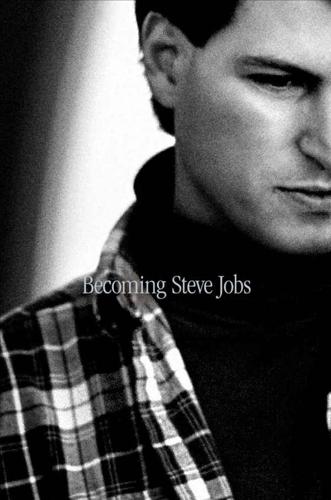
Becoming Steve Jobs: The Evolution of a Reckless Upstart Into a Visionary Leader
by
Brent Schlender
and
Rick Tetzeli
Published 24 Mar 2015
As the ad nears its end, the woman hurls the large hammer she’s been carrying and smashes the screen. A simple line follows: “On January 24th, Apple Computer will introduce Macintosh. And you’ll see why 1984 won’t be like ‘1984.’ ” Sculley got cold feet and told Chiat\Day to sell off the expensive Super Bowl ad space it had purchased. The agency unloaded a thirty-second spot, but lied to Sculley and told him they couldn’t sell the longer one. Marketing chief Bill Campbell decided to air the ad despite the worries of Sculley and the board. Hayden, who was as talented in his own right as Clow, later drew a cartoon that summed up his feelings about Sculley.
…
“We used to say that the Mac people had God on their side,” said one only half jokingly. THE DEBUT OF the Macintosh established Steve as a master showman. Between the famous “1984” ad, which played just once, during the Super Bowl broadcast on January 22, 1984, and the Mac’s official presentation at the Flint Auditorium on the campus of Cupertino’s De Anza College on January 24, 1984, Steve transformed expectations of what a product introduction could be. “Steve was P. T. Barnum incarnate,” says Lee Clow, a plain-spoken man who sports a wizardly beard and sprangly white hair. “He loved the ta-da! He was always like, ‘I want you to see the Smallest Man in the World!’
…
NOW STEVE FACED the challenge of delivering on this promise within the gnawing confines of Apple. It would be a staggeringly ambitious project—one that no one at Apple but Steve could have imagined, and one that no one but he could have made so maddeningly complicated. The long road had many detours and would be pockmarked with collateral damage, but it would eventually lead to the introduction of the Macintosh computer in 1984. After that visit to Xerox PARC, Steve completed what had been a slow abandonment of the Apple III development. The more he realized that the machine was simply a modest renovation of the Apple II, the more his attention wandered.
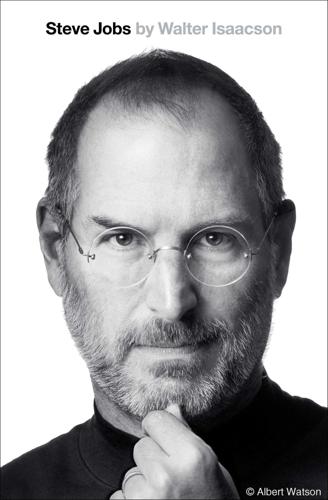
Steve Jobs
by
Walter Isaacson
Published 23 Oct 2011
Early in the third quarter of Super Bowl XVIII, the dominant Raiders scored a touchdown against the Redskins and, instead of an instant replay, television screens across the nation went black for an ominous two full seconds. Then an eerie black-and-white image of drones marching to spooky music began to fill the screen. More than ninety-six million people watched an ad that was unlike any they’d seen before. At its end, as the drones watched in horror the vaporizing of Big Brother, an announcer calmly intoned, “On January 24th, Apple Computer will introduce Macintosh. And you’ll see why 1984 won’t be like ‘1984.’” It was a sensation.
…
A Soōtoō Zen master in California who became Jobs’s spiritual teacher. LEE CLOW. Advertising wizard who created Apple’s “1984” ad and worked with Jobs for three decades. DEBORAH “DEBI” COLEMAN. Early Mac team manager who took over Apple manufacturing. TIM COOK. Steady, calm, chief operating officer hired by Jobs in 1998; replaced Jobs as Apple CEO in August 2011. EDDY CUE. Chief of Internet services at Apple, Jobs’s wingman in dealing with content companies. ANDREA “ANDY” CUNNINGHAM. Publicist at Regis McKenna’s firm who handled Apple in the early Macintosh years. MICHAEL EISNER. Hard-driving Disney CEO who made the Pixar deal, then clashed with Jobs.
…
Hertzfeld dragged himself to his blue Volkswagen Rabbit (license plate: MACWIZ) and drove home to bed. A short while later Apple’s Fremont factory began to roll out boxes emblazoned with the colorful line drawings of the Macintosh. Real artists ship, Jobs had declared, and now the Macintosh team had. The “1984” Ad In the spring of 1983, when Jobs had begun to plan for the Macintosh launch, he asked for a commercial that was as revolutionary and astonishing as the product they had created. “I want something that will stop people in their tracks,” he said. “I want a thunderclap.” The task fell to the Chiat/Day advertising agency, which had acquired the Apple account when it bought the advertising side of Regis McKenna’s business.

Valley of Genius: The Uncensored History of Silicon Valley (As Told by the Hackers, Founders, and Freaks Who Made It Boom)
by
Adam Fisher
Published 9 Jul 2018
He’s perhaps best known for the commercial announcing the launch of the Macintosh. It aired during the Super Bowl and created an instant sensation by reframing what might have been seen as a mere corporate rivalry between Apple and IBM as a struggle between good and evil, fascism and freedom. Blaine Cook was Twitter’s long-haired lead engineer in its earliest days—an exemplar of the “hippie-hacker” type that the company liked to hire. John Couch was one of the first high-level employees that Apple hired. He was present at the famous demo that Xerox PARC gave to Apple, and he implemented some of what he saw there in the Lisa computer.
…
Suddenly a beautiful young blonde wearing a Macintosh-branded tank top and red hot pants runs to the front of the crowd while swinging a hammer. She throws it at the looming image of Big Brother. It’s a bull’s-eye, and the giant television explodes. As the action fades out, the words fade in: “On January 24th, Apple Computer will introduce Macintosh. And you’ll see why 1984 won’t be like 1984.” Mike Murray: Phil Schlein has his head down on the desk, on this big boardroom desk, head down and he’s pounding on the desk: Boom! Boom! Boom! And I think, He got it! He’s with us! That’s one vote! And then Markkula turns to Jobs and says, “You really want us to run that?” John Sculley: Then they all turned and looked at me because I was the adult supervision.
…
Lee Clow’s quotes are from a video interview by Ann-Christine Diaz, published in 2012 by Advertising Age: “The Art of the Super Bowl Ad: Lee Clow on How Apple’s ‘1984’ Almost Didn’t Happen—The Real Story on Why the Spot Only Aired Once.” Ridley Scott’s quotes are from an Apple promotional video that was distributed to Apple dealers in 1984. John Sculley’s remark was made in 2011 at a celebration of the thirtieth anniversary of the IBM PC in Boca Raton and reported by the South Florida Business Journal. What Information Wants Ted Nelson’s quote is in Michael Schrage’s November 1984 Washington Post story on the first Hackers Conference. Bill Atkinson’s quotes are from an August 2012 Berkeley Cybersalon event on the creation and legacy of Hypercard.
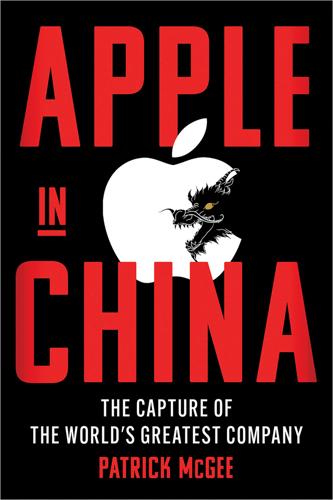
Apple in China: The Capture of the World's Greatest Company
by
Patrick McGee
Published 13 May 2025
Cook had been there only a matter of months when recruiters from Apple began calling. He demurred, so they delivered what was quickly becoming a signature move: They offered a personal interview with Steve Jobs. Round Peg That Jobs wanted to meet Cook at all illustrated just how much he’d learned in his twelve-year sabbatical from Apple. The young Steve Jobs detested IBM and everything it stood for. Apple’s most famous TV ad, introducing the Macintosh at the 1984 Super Bowl, portrayed IBM as an Orwellian Big Brother, stifling innovation. But IBM had also outmaneuvered Apple in consistently and profitably getting affordable products to the masses before losing the battle to companies that did these mundane things even more efficiently.
…
How did China advance so quickly, particularly in such complex areas as advanced electronics? Some portion of the disquieting answer is that Apple taught them. Year in, year out, Apple took the most cutting-edge designs, processes, and technical understandings from around the world and scaled them in China. One supply chain expert even adopts the language of a crime scene as he considers the whodunit at the heart of China’s advances in electronics. Look around, he says, “There’s Apple DNA everywhere.” “Real Danger” For the 1984 Super Bowl, Apple released the most iconic computer TV spot ever. It featured a mass of gray, brainwashed citizens, listening intently to an Orwellian Big Brother extolling the virtues of conformity on a movie screen: We have created for the first time in all history a garden of pure ideology—where each worker may bloom, secure from the pests purveying contradictory thoughts.
…
Only a dozen multinationals earn more than $10 billion a year in China, and Apple tops the list with around $70 billion. Never mind conceiving “the next big thing.” Apple’s China Problem is the company’s biggest risk, the most consequential unknown for Tim Cook’s legacy, and an urgent challenge for Washington. This is the story of how Apple got here. PART ONE SAVING APPLE CHAPTER 1 THE BRINK OF BANKRUPTCY Joe O’Sullivan needed to sell Apple’s Macintosh factory in Fountain, Colorado, and fast. The week before, in late March 1996, Apple stunned observers by announcing it would lose $700 million that quarter, the biggest financial setback in its history.

The Code: Silicon Valley and the Remaking of America
by
Margaret O'Mara
Published 8 Jul 2019
Four years later, as they prepared to announce the new Macintosh computer to the public, Apple executives focused on marketing messages that emphasized “the radical, revolutionary nature of the product.” One result was one of the most famous pieces of television advertising in history, the jaw-dropping spot broadcast into millions of American living rooms during the 1984 Super Bowl, when a lithe young woman ran through a droning audience, hurled a hammer at a Big Brother–like image projected on a blue screen, and shattered it.5 The barely veiled punch at IBM, Apple’s chief rival, reflected a broader anti-establishment streak in this techie rhetoric that went beyond marketing plans and ad slogans.
…
“It’s like it’s so good we don’t have to show photographs of computers.” “Macintosh advertising,” the agency brass concluded, “must be distinctive and mirror the radical, revolutionary nature of the product.”34 And distinctive it was. On January 22, 1984, the Mac debuted on the world stage in a $1.3 million television commercial aired during the Super Bowl. Directed by Hollywood science-fiction auteur Ridley Scott, the ad was sixty seconds of jaw-dropping visuals riffing off George Orwell’s 1984 and all the computational allusions made to it ever since. The tagline: “On January 24, Apple Computer will introduce the Macintosh. And you’ll see why 1984 won’t be like ‘1984.’”
…
Regis McKenna, “Marketing is Everything,” Harvard Business Review, January-February 1991, https://hbr.org/1991/01/marketing-is-everything, archived at https://perma.cc/3RUZ-GVV5. 10. Scott Mace, “Apple Bets on the Macintosh,” InfoWorld, February 13, 1984, 20; Dan’l Lewin, interview with the author, November 21, 2017, Seattle, Wash.; “Macintosh Product Introduction Plan,” October 7, 1983, M1007, Series 7, Box 13, FF 12, SU. 11. Matthew Creamer, “Apple’s First Marketing Guru on Why ‘1984’ is Overrated,” Advertising Age, March 1, 2012. 12. Barbara Rudolph, Robert Buderi, and Karen Horton, “Shaken to the Very Core: After Months of Anger and Anguish, Steve Jobs Resigns as Apple Chairman,” Time 126, no. 13 (September 30, 1985): 64; Walter Isaacson, Steve Jobs (New York: Simon & Schuster, 2011), 192–211. 13.
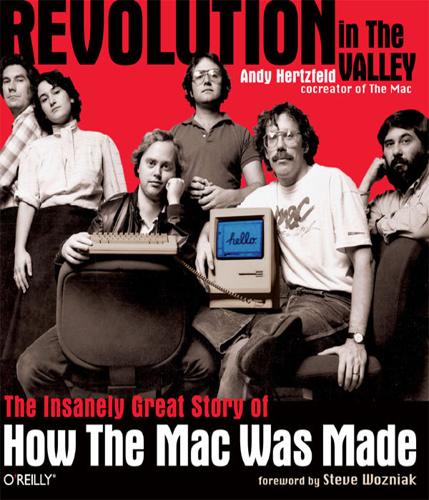
Revolution in the Valley: The Insanely Great Story of How the Mac Was Made
by
Andy Hertzfeld
Published 19 Nov 2011
When I awoke at my usual time the next morning, I had to fight the urge to drive down to Apple as usual. It took a week or two before it stopped feeling strange not to go into work. Spoiled? April 1984 The Mac team’s “spoiled” reputation The Macintosh team had a reputation for being spoiled, which was certainly true by the middle of 1984, but it wasn’t always the case. Steve Jobs was fond of bragging that the Mac designers were Apple’s best engineers. That may have been true, but it certainly wasn’t reflected in our pay. Two weeks before I transferred to the Mac team after a shake-up in the Apple II group in February 1981 (see “Black Wednesday” on page 16), I received my regular six-month review and was slated for a nominal raise in salary, from $22,000 per year to $24,000.
…
on page 132) kept volumes high by selling tens of thousands of low-cost Macs to college students, but by Thanksgiving 1984, sales had slowed significantly. The marketing team forecast selling over 75,000 Macs per month for the important holiday season, but actually they didn’t even break 20,000 per month. In December of 1984, the Apple II still accounted for about 70 percent of Apple’s revenues. As the New Year dawned, Steve Jobs seemed oblivious to the slowing sales and continued to behave as if the Macintosh was a booming, unqualified success. His lieutenants in the Macintosh division, which had swelled to more than 700 employees, had to deal with a growing reality gap, reconciling the ever-changing audacious plans for world domination emanating from their leader with the persistent bad news from the sales channels.
…
Bruce Horn Bruce practically grew up at Xerox PARC, working there during summer break from the age 14. Bruce became one of the main architects of the Macintosh system software after starting at Apple in January 1982: he wrote the resource manager, dialog manager, and the Finder. After leaving Apple in the summer of 1984, he attended graduate school at Carnegie Mellon, earning his Ph.D. in Computer Science. In 1999, he co-founded Marketocracy, Inc. Brian Howard Brian Howard was Jef Raskin’s close friend and collaborator, starting at Apple in January 1978 and working on the Macintosh project from its inception. Originally, Brian’s official job was writing documentation, but he soon became indispensable as Burrell Smith’s assistant, helping Burrell interface with the rest of the organization.

The Everything Blueprint: The Microchip Design That Changed the World
by
James Ashton
Published 11 May 2023
But the pair spent little more than two years together before the board sided with Sculley, who wanted to remove Jobs from the helm of the underperforming Macintosh division. The Macintosh computer was Jobs’ pride and joy, launched in a blaze of glory with an expensive, Orwellian advertising campaign that first aired during the 1984 Super Bowl. Through its development it had quickly overtaken in his affections the Lisa, a desktop PC launched the previous year inspired by what Apple gleaned from its fact-finding trip to Xerox. Yet after the early splash, Mac sales were slow in a market that was being dominated by IBM PCs or their derivatives. During the dire Christmas 1984 season that severely damaged Acorn Computer and Sinclair Research in the UK, it was actually the Apple II that powered the company through.
…
‘Indeed, within the next decade, the most powerful personal computer available today will be “invisible”; like a motor; it will fit into a machine the size of a pocket calculator.’ The Apple II chip ‘is already small enough to wear on an earring’, he observed. The idea for Knowledge Navigator fed into a keynote speech Sculley gave later that year, and an accompanying video showed a college professor conducting various tasks on a tablet-like device. Such ideas were already being pursued within Apple, and Sculley let them flourish. One engineer, Steve Sakoman, had worked on the HP Portable, Hewlett-Packard’s pioneering but pricey laptop, before he joined Apple in 1984. To stop him leaving after working on the second-generation Macintosh, Apple’s vice president for product development, Jean-Louis Gassée, allowed him to pursue his ambition of designing a pen-based mobile computing device.
…
On 6 June 2005, Apple agreed to switch its Mac computers to Intel chips for the first time. To please the most demanding customer in town, it seemed that Otellini’s efforts to be more user-friendly were working. Since its debut in 1984, the Mac had run on Motorola and then PowerPC chips, but the alliance Apple had forged with IBM and Motorola to design its own silicon was no longer delivering. Jobs’ choice to go with Intel marked an extraordinary truce after years of animosity. When Apple unveiled its Power Macintosh G3 in spring 1998 it was backed by an advertising campaign that pictured a Pentium II chip on a snail’s back in one commercial and, in another, a singed Intel dancer being dampened down by a firefighter.

Start With Why: How Great Leaders Inspire Everyone to Take Action
by
Simon Sinek
Published 29 Oct 2009
Already a household name, in 1984 Apple launched the Macintosh with their famed “1984” commercial that aired during the Super Bowl. Directed by Ridley Scott, famed director of cult classics like Blade Runner, the commercial also changed the course of the advertising industry. The first “Super Bowl commercial,” it ushered in the annual tradition of big-budget, cinematic Super Bowl advertising. With the Macintosh, Apple once again changed the tradition of how things were done. They challenged the standard of Microsoft’s DOS, the standard operating system used by most personal computers at the time. The Macintosh was the first mass-market computer to use a graphical user interface and a mouse, allowing people to simply “point and click” rather than input code.
…
Pursued by security, she ran with a sledgehammer. This would not end well for the status quo. On January 22, 1984, Apple launched their Macintosh computer with their now-famous commercial depicting an Orwellian scene of a totalitarian regime holding control over a population and promised that “1984 won’t be like 1984.” But this advertising was much more than just advertising. It was not about the features and benefits of a new product. It was not about a “differentiating value proposition.” It was, for all intents and purposes, a manifesto. A poetic ode to Apple’s WHY, it was the film version of an individual rebelling against the status quo, igniting a revolution.
…
Revkin, “Wal-Mart’s New Sustainability Push,” nytimes.com, October 23, 2008, http://dotearth.blogs.nytimes.com/tag/wal-mart/. 206 “A lot of what goes on these days with high-flying companies”: Walton and Huey, Sam Walton. 206 And to do it, he started by paying himself an annual salary of $5.43 million: http://finance.yahoo.com/q/pr?s=WMT. Chapter 13: The Origins of a WHY 209 “The Apple gave an individual the power to do the same things as any company”: Steve Wozniak, personal interview, November 2008. 210 the two Steves made something they called the Blue Box: Nick Cantlay, “Biography: Stephen Wozniak,” The Apple Museum, http://www.theapplemuseum.com/index.php?id=50. 210 famed “1984” commercial that aired during the Super Bowl: http://www.youtube.com/watch?v=OYecfV3ubP8. Chapter 14: The New Competition 222 But not Ben Comen: Rick Reilly, “Worth the Wait,” Sports Illustrated, http://sportsillustrated.cnn.com/2003/pr/subs/siexclusive/rick_reilly/10/13/reilly1020/index.html_the_wait.htm.

From Airline Reservations to Sonic the Hedgehog: A History of the Software Industry
by
Martin Campbell-Kelly
Published 15 Jan 2003
In 1982, when Xerox had failed to market the technology, Warnock and Geschke started their own company.61 Adobe grew rapidly, supplying a software technology known as Postscript for manufacturers of laser printers and for the Apple Macintosh. That the Macintosh was subsequently able to dominate the high-end desktop publishing market was due largely to Adobe’s technology. By 1984, half of Adobe’s income came from Apple royalties. By the late 1990s, however, Adobe’s Postscript technology was no longer unique; both Apple and Microsoft had developed their own systems. Recognizing that its niche in printing software was evaporating, Adobe made a number of strategic acquisitions in order to diversify into desktop publishing and electronic document distribution.
…
The work at Xerox PARC had led to the Xerox Star, announced in May 1981—a failure in the market, primarily because its price ($40,000) was much too high for a personal computer. The concept of the graphical user interface was also adopted by Apple Computer for its Lisa computer, launched in May 1983. Though universally regarded as a path-breaking product, the Lisa also failed in the market because of a high price ($16,995). Apple Computer’s second attempt—the $2,500 Macintosh, launched in January 1984—was much more successful. The Macintosh’s unique selling point was its userfriendly interface.27 It succeeded in capturing 5–10 percent of the personal computer market for the next decade.
…
In late 1987, Windows 2.0 was released to modest acclaim. The interface had been polished considerably, and its main visual elements were almost indistinguishable from those of the Macintosh. Microsoft had obtained a license from Apple Computer for Windows 1.0 but had not renogotiated it for the new release. Version 2.0 so closely emulated the “look and feel” of the Macintosh that Apple sued for copyright infringement in March 1988. The Apple-vs.-Microsoft lawsuit consumed many column-inches of reportage and rattled on for 3 years before a settlement in Microsoft’s favor was reached in 1991.33 So far as can be ascertained, the lawsuit was something of a sideshow that had little bearing on Microsoft’s or any other company’s technical or marketing strategy.
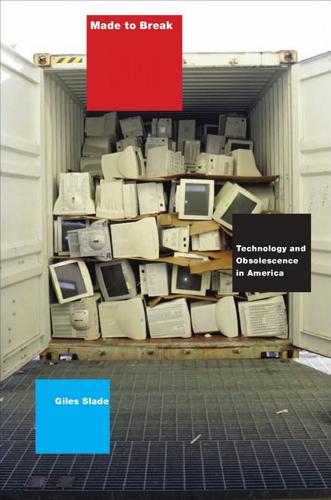
Made to Break: Technology and Obsolescence in America
by
Giles Slade
Published 14 Apr 2006
As the elegant Macintosh approached its release date, Jobs got each of the forty-seven members of his team to sign their names inside the molding of the original design for the Macintosh case.46 Macintosh debuted in 1984, targeted to a family market, but it promptly fizzled Its initial failure followed a remarkably cinematic one-time-only television ad that aired during the 1984 Super Bowl. Later, after the computer was repositioned, the Macintosh achieved a 10 percent market share primarily as a result of its use in desktop publishing and education. The easy learning curve of the Mac’s intuitive GUI desktop made it ideal for use in the classroom among first- ime student users who knew nothing about operating systems or command lines. Buying only one Mac per classroom made the computer a very affordable tool, and in this way Jobs’ and Raskins’ invention accessed and influ nced an entire generation.
…
Jobs now insisted that Raskin’s new desktop computer should have features that were not in the original design, including Engelbart’s mouse.43 Before he left Apple in 1982, Raskin named the new computer after a favorite variety of apple that grew abundantly in the hills around Cupertino. Raskin’s name was really a pun, of course. To most buyers, a Mac computer was a variety of Apple computer, just as a Macintosh was a kind of apple. But in Raskin’s computerliterate circle, the word Mac recalled the Man and computer interface that Engelbart’s Human Factors group had been studying in the early 1970s at SRI. Cleverly, the name “Macintosh” evoked both the company that made the computer and the interface design problem that it solved. For all their other differences, Jobs and Raskin agreed totally about their product’s name.
…
John Sculley remembered that “Steve’s ‘pirates’ were a handpicked pack of the most brilliant mavericks inside and outside Apple. Their mission . . .was to blow people’s minds and overturn standards . . . The pirates ransacked the company for ideas, parts, and design plans.”45 Lisa turned out to be exactly the overpriced marketing disaster Jobs had predicted. Macintosh quickly became the company’s only hope of survival, and Jobs regained enough influ nce within Apple to install John Sculley as CEO by late summer. As the elegant Macintosh approached its release date, Jobs got each of the forty-seven members of his team to sign their names inside the molding of the original design for the Macintosh case.46 Macintosh debuted in 1984, targeted to a family market, but it promptly fizzled Its initial failure followed a remarkably cinematic one-time-only television ad that aired during the 1984 Super Bowl.

How to Fix the Future: Staying Human in the Digital Age
by
Andrew Keen
Published 1 Mar 2018
The right to one’s personality.”3 So how do we restore nineteenth-century values to twenty-first-century life? How can agency be reinvented in the digital age? At the climax of that 1984 advertisement for the Macintosh, a vigorous blonde in red-and-white workout gear bursts into the decrepit room and, hurling a hammer at the screen, blows up the image of Big Brother. She isn’t a Luddite, of course; the whole point of this one-minute Super Bowl slot, after all, was to convince its millions of viewers to spend $2,500 on a new personal computer. But the Apple commercial does remind us, albeit through Madison Avenue’s Technicolor-tinted lenses, about the central role of human agency in changing the world and in keeping us safe from those who would take away our rights.
…
The whole spectacle—the dilapidated room, the mesmerized audience, the pixelated face flickering on the giant screen—recalls for me one of television’s most iconic commercials, the Super Bowl XVIII slot for the Apple Macintosh computer. In this January 1984 advertisement for the machine that launched the personal computer age, a man on a similarly large screen in a similarly decrepit room addresses a crowd of similarly transfixed people. But in the Macintosh commercial the man is a version of Big Brother, the omniscient tyrant from Orwell’s twentieth-century dystopian novel Nineteen Eighty-Four. The young man on the Berlin screen, in contrast, is an enemy of authoritarianism.
…
Networked technology, Wiener initially believed, could steer or pilot us to a better world. This assumption, which Wiener shared not only with Bush and Licklider, but with many other twentieth-century visionaries—including Steve Jobs and Steve Wozniak, the cofounders of Apple—was based on the conviction that this new technology would empower us with agency to change our societies. “You’ll see why 1984 won’t be like ‘1984,’” promised the iconic Super Bowl XVIII advertisement about the transformative power of Jobs’s and Wozniak’s new desktop computer. But Edward Snowden’s virtual speech at the Alte Teppichfabrik doesn’t share this optimism. Communicating in cyberspace, presumably from a Russian safe house a couple of thousand miles east of the German capital, Snowden is warning his Berlin audience that contemporary technology—the power of the network, in an age of ubiquitous computing, to snoop on and control everything we do—is undermining our power to govern our own society.

Track Changes
by
Matthew G. Kirschenbaum
Published 1 May 2016
I couldn’t for the life of me see any way in which a computer could be of any use in the life or work of a writer.”86 Nonetheless, by 1982 Adams had purchased a dedicated word processor called a Nexus; a year or two later (the Hitchhiker’s trilogy already complete) he bought the British computer known as an Apricot, which ran MS-DOS.87 He was an enthusiast, in short order accumulating a plethora of models and brands, also including a BBC Micro and a Tandy 100.88 Sometime in 1984 he found himself at a small company in Cambridge, Massachusetts, called Infocom, where they were adapting his breakthrough novel The Hitchhiker’s Guide to the Galaxy (1979) as a piece of interactive fiction—a surprisingly popular form at the time that allowed players to read prose presented on their screen and type responses in something approximating natural language, thereby to advance the story through one of its branching plotlines.89 (Future poet laureate Robert Pinksy would also dabble in the genre, producing an “electronic novel” called Mindwheel with the assistance of a team of programmers for Brøderbund Software in 1984.) While visiting Infocom, Adams saw one of the just-released Apple Macintosh computers and was instantly captivated by it; he subsequently claimed to own the first one in England, and was profiled in MacWorld magazine.90 He would go on to acquire at least one of most Apple Macintosh products released thereafter, and the number of Douglas Adams Macs that thus ended up populating the world would eventually yield at least one memorable surprise, as we will see in Chapter 10. But it wasn’t just Adams’s very visible association with Apple products that makes his computing history noteworthy here.
…
There will be individuals and episodes I have missed.10 The story I tell has a particular center of gravity: the years 1964 to 1984. Although this book advances to (indeed, looks beyond) the present day, this twenty-year period is where much of the narrative unfolds. Why this particular span? 1964 was the year IBM released its Magnetic Tape Selectric Typewriter or MT/ST, the product that would, by the end of that same decade, become the core of their word processing product line. And of course 1984 has at least one large significance in the history of personal computing: it was the year the Apple Macintosh was released (it came to the attention of many people for the first time during a memorable sixty-second Super Bowl commercial, replete with Orwellian imagery and directed by Ridley Scott).
…
It would be another half decade before the Alto’s most important design features, including the bitmapped display, windows, and the mouse, were brought to market as Apple’s first Macintosh computer in early 1984. (Xerox did attempt to introduce a graphical computer system incorporating some of Alto’s capabilities in 1981; called the Xerox Star, it was marketed to businesses rather than to personal users, was expensive, and had to compete with dedicated word processing systems; thus it was never a commercial success.) Though the Jobs visit is the one that will remain inscribed in legend, there were many outsiders who came through PARC, and the Alto, Bravo, and Gypsy teams did many demos. A year or so before the group from Apple, a young Hollywood screenwriter named Bonnie MacBird showed up.
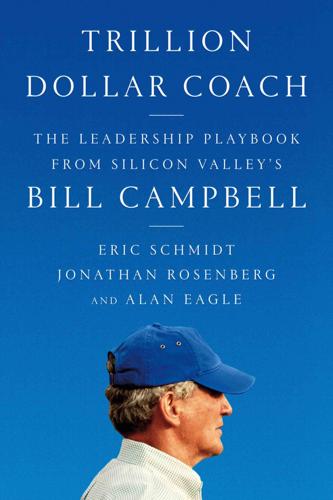
Trillion Dollar Coach: The Leadership Playbook of Silicon Valley's Bill Campbell
by
Eric Schmidt
,
Jonathan Rosenberg
and
Alan Eagle
Published 15 Apr 2019
Going out to the wild, woolly west, where it was more a meritocracy, I would have a chance to move quickly and sit on the management team.”8 Move quickly, indeed. Within nine months of joining Apple, Bill was promoted to VP of sales and marketing and given the task of overseeing the launch of the highly anticipated Macintosh, Apple’s new computer that would replace the Apple II as the company’s flagship product. To kick off the launch, the company made a big move: it bought a slot to run a commercial during the Super Bowl, which would be played in Tampa, Florida, on January 22, 1984. Once the ad was produced, Bill and the team showed it to Apple cofounder Steve Jobs. An allusion to George Orwell’s novel 1984, it showed a young woman running through a dark hallway, fleeing guards, and emerging into a chamber where hundreds of gray-clad, head-shaven men are listening, zombie-like, to a droning “big brother” figure on a large screen before them.
…
With a yell, she throws a large mallet through the screen, causing it to explode. A narrator promises that the Apple Macintosh will show us why “1984 won’t be like 1984.”* Steve loved the ad. E. Floyd Kvamme, Bill’s boss at the time, loved the ad. Bill loved the ad. About ten days before the game, they showed it to the board. The board hated the ad. This is terrible, was the universal opinion, too costly and too controversial. They wanted to know if they could sell the airtime to some other advertiser. Was it too late to back out? A couple of days later, one of the Apple sales executives told Bill and Floyd that she had been able to find a buyer for the slot.
…
aberrant geniuses, 61–64 active listening, 89–90 Adobe Systems, 181–82 AdWords, 31, 34, 91n Alphabet, 21, 114–15, 185 Altamont Capital Partners, 95 Amazon, 177–78 Andreessen, Marc, 1 Android operating system, 114 applause, percussive, 166–68 Apple. See also Claris; Jobs, Steve App Store and, 68 board of directors of, 12–13, 73–74, 161 building of, 21 decision making at, 55 Google’s relationship with, 114 iPhone, 114, 134–35 Jobs’s return to, 12–13, 13n, 37, 136 nonconformists at, 69 problem-focused coping at, 135, 136 Super Bowl ad (1984), 8–9, 9n Super Bowl XIX and, 168–69 “Think Different” ad, 37 women at, 127 App Store, 68 Archambeau, Shellye, 15, 104–5, 130–31 Armstrong, Kristina Homer, 163 Arora, Nikesh, 115 Ashridge Business School, 101n The Athena Doctrine (Gerzema and D’Antonio), 150–51 @Home, 85 AT&T, 58–59, 59n Auerbach, Red, 83–84 authentic leadership, 98 authoritarian management style, 35–36 autonomy, 91 Baker, Mari, 163–64 Ballmer, Steve, 38, 59–60 baseball trip, 170 Batch, Charlie, 16, 140 Bavor, Clay, 167–68 Benioff, Marc, 38 Berkshire Hathaway, 107n, 108 Bezos, Jeff, 1, 177–78 “Billisms,” top ten, 159 Biondolillo, Deb, 127, 149 Black, Lee, 16, 18, 19 Bloom, Spike, 169 boards of directors, 73–77 Bocci, Eileen, 17n Bollinger, Lee C., 15, 109–10, 147 Boston Celtics, 137 Boston College, 5, 170, 171–72 Bradley, Todd, 139 Brin, Sergey at Bill’s memorial, 1 Bill’s partnership with, 21, 119 on Bill’s warmth and competence, 156 “disorg” and, 31–33 dual class structure, 107–8 as Google founder, 180 trip reports and, 42 Brookfield, Debbie, 46 Brown, Shona, 100, 132–33 Buffett, Warren, 108 Burton, Eve, 129 Butts, Al, 169, 170 Butts, Derek, 169 Cabo San Lucas, 17, 18, 19, 164, 170, 175 Campbell, William Vincent, Jr.
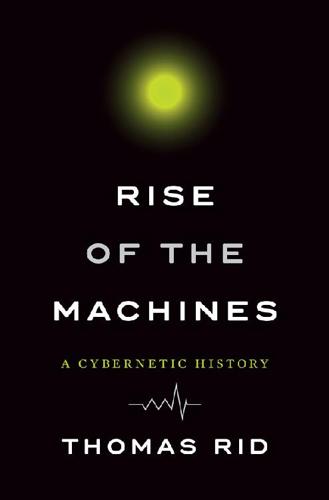
Rise of the Machines: A Cybernetic History
by
Thomas Rid
Published 27 Jun 2016
IBM was “Big Brother,” as Leary saw it. This lingering image is what Apple mocked with such ingenuity in its famous one-minute 1984 Super Bowl ad, directed by Ridley Scott. An athletic blonde woman in T-shirt and shorts is seen charging past storm troopers, right into the heart of power, carrying that most iconic of tools, a sledgehammer. Then she throws the hammer, smashing the oppressor’s larger-than-life image: “On January 24th, Apple Computer will introduce Macintosh,” the video concludes, “and you’ll see why 1984 won’t be like ‘1984.’”73 The personal computer had become the ultimate power tool of liberation.
…
The reading list was published in the winter 1974 issue of Co-evolution Quarterly, p. 28. 54.Bateson, Steps to an Ecology of Mind, 323. 55.Ibid., 467. 56.Ibid., 468. 57.Ibid., 469. 58.Stewart Brand, Two Cybernetic Frontiers (New York: Random House, 1974), 9. 59.See ibid., 24–25, where the story is reprinted. 60.Ibid., 29. 61.Ibid., 7. 62.Ibid., 48. 63.Ibid., 39. 64.Ibid., 49. 65.Stewart Brand, “SPACEWAR: Fanatic Life and Symbolic Death among the Computer Bums,” Rolling Stone, December 7, 1972, 58. 66.Brand, Two Cybernetic Frontiers, 78. 67.Stewart Brand, “We Owe It All to the Hippies,” Time 145, no. 12 (March 1, 1995): 54–56. 68.Ken Goffman, “Wake Up, It’s 1984!” High Frontiers 1 (1984): 3. 69.Ibid. 70.Terence McKenna, “Phychopharmacognosticon,” High Frontiers 4 (1988): 12. 71.Ibid., 11–12. 72.Quoted in Goffman, “Wake Up, It’s 1984!” 23. 73.“Apple Macintosh Ad—Aired during the SuperBowl 1984,” YouTube video, posted November 9, 2009, http://youtu.be/8UZV7PDt8Lw. 74.Timothy Leary, “Access Codes & Carnival Blasts,” High Frontiers 1 (1984): 24. 75.Elizabeth Mehrin, “People in the News: Timothy Leary,” PC Magazine, February 7, 1984, 62. 76.Timothy Leary, Chaos and Cyber Culture (Berkeley, CA: Ronin, 1994), 120. 77.Mehrin, “People in the News: Timothy Leary.” 78.Katie Hafner, “The Epic Saga of the Well,” Wired 5.5 (May 1997): 98–142. 79.Ibid. 80.Ibid. 81.For a video of one of these parties, see Susan Hedin, “WELL Party 1989,” YouTube video, posted August 24, 2009, http://youtu.be/RhWbQMrqyEc. 82.DEC’s VAX systems were still used for testing the ICBM program in 2012; the WELL replaced its VAX in 1988.
…
His plans to develop what he then called artificial intelligence with XOR didn’t go anywhere. But it was 1984—the year that wasn’t supposed to be like 1984, as Apple had put it in its Orwell-evoking ad. The Macintosh was here. William Gibson published Neuromancer, and an era-defining subculture emerged. Yet something was missing. It was again Stewart Brand, of Whole Earth fame, who turned a cybernetic vision into reality. A little less than a year after Leary’s party, on a day in the late fall of 1984, Brand had a fateful lunch with Larry Brilliant, in a restaurant in La Jolla. Both men were in town for a conference of the Western Behavioral Sciences Institute.

Computer: A History of the Information Machine
by
Martin Campbell-Kelly
and
Nathan Ensmenger
Published 29 Jul 2013
This was seen by commentators as a curious choice because the forty-year-old Sculley had achieved national prominence by masterminding the relaunch of Pepsi-Cola against Coca-Cola in the late 1970s. But behind the move lay Jobs’s vision of the computer as a consumer appliance that needed consumer marketing. In what was one of the most memorable advertising campaigns of the 1980s, Apple produced a spectacular television advertisement that was broadcast during the Super Bowl on 22 January 1984: Apple Computer was about to introduce its Macintosh computer to the world, and the commercial was intended to stir up anticipation for the big event. It showed a roomful of gaunt, zombie-like workers with shaved heads, dressed in pajamas like those worn by concentration camp prisoners, watching a huge viewing screen as Big Brother intoned about the great accomplishments of the computer age.
…
Microsoft, which came late to the PDA/smartphone platform business by licensing Windows-based mobile operating systems, had some success in the enterprise market before smartphones became consumer oriented and the touchscreen-based Apple iOS and Android systems rose to dominance. While Apple’s Macintosh was a technical success at its launch in 1984, it helped Microsoft far more than Apple itself (by showing the dominant operating-system company the way to a user-friendly graphics-based operating system). Apple Computer was struggling as a company in the mid-1980s, and co-founder and Macintosh team leader Steve Jobs lost a boardroom battle, was isolated from Apple’s management, and elected to resign from the firm. In 1985 Jobs formed NeXT, a computer platform development company focused on the educational and business markets.
…
Suddenly, a tanned and beautiful young woman wearing bright red track clothes sprinted into the room and hurled a sledgehammer into the screen, which exploded into blackness. Then a message appeared: “On January 24, Apple Computer will introduce the Macintosh. And you’ll see why 1984 won’t be like 1984.” Apple ran the commercial just once, but over the following weeks it was replayed on dozens of news and talk shows. The message was reinforced by a blaze of publicity eventually costing $15 million. There were full-page newspaper advertisements and twenty-page copy inserts in glossy magazines targeted at high-income readers. Although priced at $2,500—only 15 percent of the cost of the Lisa—sales of the Macintosh after the first flush of enthusiasm were disappointing.
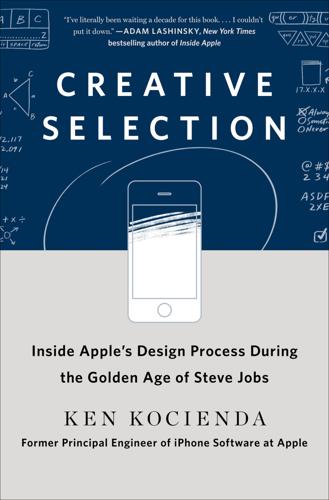
Creative Selection: Inside Apple's Design Process During the Golden Age of Steve Jobs
by
Ken Kocienda
Published 3 Sep 2018
Steve Jobs told everyone what he thought about this topic himself, on stage, during the keynote presentation to announce the original iPad: The reason that Apple is able to create products like the iPad is because we’ve always tried to be at the intersection of technology and liberal arts, to be able to get the best of both, to make extremely advanced products from a technology point of view, but also have them be intuitive, easy to use, fun to use, so that they really fit the users. The users don’t have to come to them, they come to the user.2 The notion of working at the intersection goes back far into Apple history. Steve used it to explain why the original Macintosh in 1984 had proportionally spaced fonts instead of the monospace teletype-like characters typical on computers of the day.3 From that time forward, working at the intersection became a summation of the qualities Apple aspired to instill in its products. It went beyond fonts, colors, and the visual design elements you might think of when you hear the word “art” in liberal arts.
…
Accessed November 12, 2017. Various pages on this website provide the history, the philosophy, and licenses for the GNU Project. https://www.gnu.org 2. Steven Levy, Insanely Great, the Life and Times of Macintosh, the Computer That Changed Everything (New York: Penguin Books, 1994). The Mac has been an inspiration to me from the moment I first saw one in college in 1984, and if Steven hadn’t written his book about how the people at Apple created it, you wouldn’t be reading this book right now. 3. David Winton, Code Rush: Full Film. Vimeo. [Online]. PBS Home Video, Winton Dupont Films, April 25, 2000. Accessed November 12, 2017.
…
There would likely be no web search engines, streaming music, or YouTube. No Wikipedia either. No chat apps. No social networks. No smartphones. The world would be a different place. My life would be different too. Before coming to Apple, I had a job at a startup called Eazel. Our goal was to create an easy-to-use Linux system suitable for everyday computing, a free software alternative to Apple Macintosh and Microsoft Windows. The company was led by programmers who worked on the original Macintosh in the 1980s, including Bud Tribble, the first software manager for the Mac, and Andy Hertzfeld, the software wizard whose graphical user interface code helped to set the Mac apart from the text-mode personal computers that were the norm of the time.
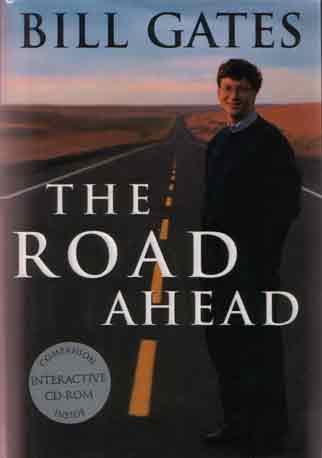
The Road Ahead
by
Bill Gates
,
Nathan Myhrvold
and
Peter Rinearson
Published 15 Nov 1995
Microsoft wanted to create an open standard and bring graphical capabilities to any computer that was running MS-DOS. 1995: Graphical user interface in Microsoft Word for Windows The first popular graphical platform came to market in 1984, when Apple released its Macintosh. Everything about the Macintosh's proprietary operating system was graphical, and it was an enormous success. The initial hardware and operating-system software Apple released were quite limited but vividly demonstrated the potential of the graphical interface. As the hardware and software improved, the potential was realized. We worked closely with Apple throughout the development of the Macintosh. Steve Jobs led the Macintosh team. Working with him was really fun. Steve has an amazing intuition for engineering and design as well as an ability to motivate people that is world class.
…
The Altair 8800 was superseded by the Apple I. Then came the Apple II, the original IBM PC, the Apple Macintosh, IBM PC AT, 386 and 486 PCs, Power Macintoshes, and Pentium PCs. Each of these machines was somewhat compatible with the others. For instance, all were able to share plain-text files. But there was also a lot of incompatibility because each successive computer generation showcased fundamental breakthroughs the older systems didn't support. Compatibility with prior machines is a great virtue in some cases. Both PC-compatibles and the Apple Macintosh provide some backwards compatibility.
…
We created a word processor, Microsoft Word, and a spreadsheet, Microsoft Excel, for the Macintosh. These were Microsoft's first graphical products. The Macintosh had great system software, but Apple refused (until 1995) to let anyone else make computer hardware that would run it. This was traditional hardware-company thinking: If you wanted the software, you had to buy Apple computers. Microsoft wanted the Macintosh to sell well and be widely accepted, not only because we had invested a lot in creating applications for it, but also because we wanted the public to accept graphical computing. Mistakes such as Apple's decision to limit the sale of its operating-system software for its own hardware will be repeated often in the years ahead.
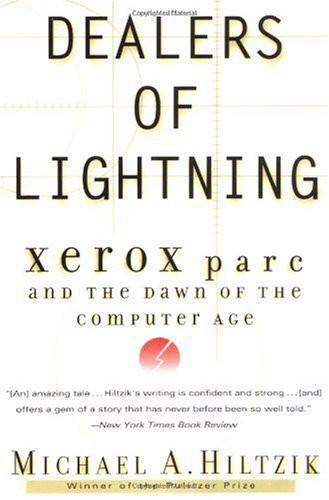
Dealers of Lightning
by
Michael A. Hiltzik
Published 27 Apr 2000
August 24: IBM unveils the Personal Computer, forever altering the commercial landscape of office computing and making the Star obsolete. May: Apple introduces the Lisa, a personal computer with a graphical interface based on principles developed at PARC. September 19: Bob Taylor resigns from PARC under pressure. Within a few months many of the center’s top computer engineers and scientists will resign in sympathy. January: Apple introduces the Macintosh, the popular successor to the Lisa and the most influential embodi-ment of the PARC personal computer, with a striking “1984”-style television commercial during the Super Bowl. INTRODUCTION The Time Machine It was April in California’s Santa Clara Valley, a fine time to be changing the world.
…
That sign appeared one day in 1979, when a Silicon Valley legend in the making walked through PARC’s front door. CHAPTER 23 Steve Jobs Gets His Show and Tell Thus we come to Steven P. Jobs. The Apple Computer cofounder’s visit to PARC, from which he reputedly spirited off the ideas that later made the Apple Macintosh famous, is one of the foundation legends of personal computing, as replete with drama and consequence as the story of David and Goliath or the fable of the mouse and the lion with an injured paw. It holds enough material to serve the mythmaking of not one corporation but two, Xerox and Apple. If one seeks proof of its importance, one need look no further than the fact that to this date no two people involved in the episode recollect it quite the same way.
…
The IBM Personal Computer became the industry standard almost instantly upon its introduction in 1981; yet as of this writing IBM’s market share in desktop personal computers is infinitesimal. Apple Computer’s Macintosh, the most successful commercial expression of PARC’s design principles, was launched in 1983 and by 1985 ranked as the world’s most popular personal computer; far from parlaying that advantage into a lasting franchise, Apple committed a series of management blunders that today leave its very existence in doubt. (At the very moment Steve Jobs was so self-confidently critiquing Xerox’s performance for PBS, his old company was sinking toward a single-digit market share for the first time since the launch of the Macintosh. It soon breached this dubious milestone.)
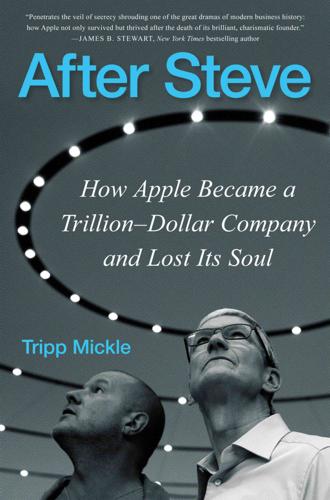
After Steve: How Apple Became a Trillion-Dollar Company and Lost Its Soul
by
Tripp Mickle
Published 2 May 2022
A masterful marketer with an eye for design, Jobs redefined the PC category in 1984 with the Macintosh, a computer for the masses that could be controlled by the click of a mouse rather than by pecking on a keyboard. He pitched it as a machine that would democratize technology and dethrone the largest computer maker, IBM. Working with the advertising agency Chiat/Day, he developed an Orwellian Super Bowl spot titled “1984” that cast the Macintosh and Apple as a sledgehammer-wielding Olympic sprinter who shatters a giant screen projecting Big Brother. He unveiled the computer a week later at one of Apple’s first signature events, captivating the audience in a darkened auditorium in Cupertino by turning the computer on and allowing it to speak for itself, saying, “Hello, I’m Macintosh.
…
AppleDesign: The Work of the Apple Industrial Design Group. Cupertino, CA: Apple, 1997. Lashinsky, Adam. Inside Apple: How America’s Most Admired—and Secretive—Company Really Works. New York: Business Plus, 2013. Levy, Steven. Insanely Great: The Life and Times of Macintosh, the Computer That Changed Everything. New York: Penguin, 1994. Merchant, Brian. The One Device: The Secret History of the iPhone. New York: Back Bay Books, 2017. Moritz, Michael. Return to the Little Kingdom: How Apple & Steve Jobs Changed the World. New York: Overlook Press, 1984, 2009. Nathan, John. Sony: The Private Life. Boston: Houghton Mifflin Harcourt, 1999. Rams, Dieter.
…
Computers weren’t central to the design curriculum at Newcastle, but before graduating, Ive was introduced to his first Macintosh. His father, still a school inspector, had become a champion of Apple’s computers, encouraging schools to buy them because they were easier to use for students learning design than the more widely available BBC Micro computers. Ive quickly understood why. The Macintosh, with its point-and-click mouse, was more intuitive than any other computer he’d come across. He felt a connection with it that led him to research the company. He loved the rebelliousness of its “1984” ad and saw that spirit in the Mac. “I had a sense of the values of the people who made it,” Ive told The New Yorker years later.
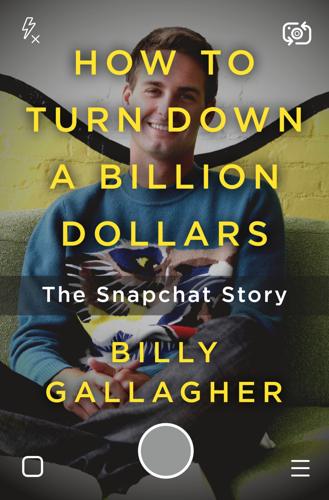
How to Turn Down a Billion Dollars: The Snapchat Story
by
Billy Gallagher
Published 13 Feb 2018
A few blocks from Snapchat’s bungalow office sat the Binoculars Building, designed by Frank Gehry, which features a massive, eponymous pair of binoculars over the entrance. It now serves as Google’s Los Angeles office, but it was built for the famous advertising firm Chiat/Day, which created the “1984” ad for Apple and Steve Jobs that introduced the Macintosh. Google relocated its Los Angeles office from Santa Monica to the Binoculars Building in 2011, a move that began the migration of the Los Angeles tech scene to Venice. But Snapchat is the most prominent homegrown startup, serving as the tentpole for Venice. Evan chose Venice because Snapchat is primarily an entertainment company, not a technology company.
…
In the 1980s, then-Apple CEO John Sculley and Steve Jobs went to see Dr. Land at his lab on the Charles River in Cambridge, Massachusetts. In a 2010 interview, Sculley recalled the visit: Dr. Land and Steve were both looking at the center of the table the whole time they were talking. Dr. Land was saying: “I could see what the Polaroid camera should be. It was just as real to me as if it was sitting in front of me before I had ever built one.” And Steve said: “Yeah, that’s exactly the way I saw the Macintosh.” He said if I asked someone who had only used a personal calculator what a Macintosh should be like they couldn’t have told me.
…
Lenses became an increasingly lucrative advertising source as Snapchat worked with brands to create a new interactive advertising format. In December 2015, Imran Khan traveled to Chicago to meet with Gatorade executives. He proposed a Super Bowl lens that dumped a virtual cooler of Gatorade over users, like players do to coaches when they win the Super Bowl. Gatorade shelled out hundreds of thousands of dollars to run the lens for two days over Super Bowl weekend; Snapchat users watched the lens, seeing it in friends’ messages and Stories and trying it out themselves, over 160 million times. Taco Bell’s team worked with Snapchat for six weeks to create a sponsored lens for Cinco de Mayo that turned users’ heads into a giant taco shell.

From Counterculture to Cyberculture: Stewart Brand, the Whole Earth Network, and the Rise of Digital Utopianism
by
Fred Turner
Published 31 Aug 2006
As early as 1972, Brand had suggested that computers might become a new LSD, a new small technology that could be used to open minds and reform society. During the Super Bowl of 1984, Apple Computer introduced its Macintosh with a like-minded suggestion. Its mouse and monitor might have first been designed in research institutes funded by the Defense Department, but in the ad, a lithe blonde woman in a track suit raced up a theater aisle through row after row of gray-suited workers and threw a hammer into the maw of Big Brother on the screen. Thanks to the Macintosh, a voice then intoned, 1984 would not be like 1984. Like the Merry Pranksters in their bus, the ad implied, the executives of Apple had unleashed a new technology on Americans that would, if they only embraced it, make them free.
…
Like many myths, this one contains several grains of truth. The 1970s did in fact witness the rise of a new form of computing, and Bay area programmers, many with countercultural leanings, played an important part in that process. And as they were distributed, some of the new computers—particularly the 1984 Apple Macintosh—were explicitly marketed as devices one could use to tear down bureaucracies and achieve individual intellectual freedom. Yet, the notion that the [ 103 ] [ 104 ] Chapter 4 counterculture gave rise to personal computing and computer networking obscures the breadth and complexity of the actual encounter between the two worlds.
…
Soon after Levy had shown them his book, Brand and Kelly got in touch with members of the hacking community, including Lee Felsenstein; Bill Budge, a software author; Andy Hertzfeld, a key member of Apple’s Macintosh development team; and Doug Carlston, founder and president of Broderbund Software Inc. Together they invited some four hundred self-described hackers to pay ninety dollars each to join them, the Whole Earth crew, and about twenty mainstream journalists for a three-day weekend in November 1984 at Fort Cronkhite, a former army base in the Marin Headlands just across the Golden Gate Bridge from San Francisco. At one level, the event was a master stroke of networking.
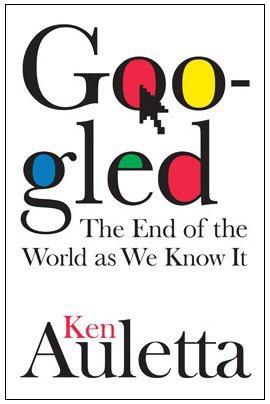
Googled: The End of the World as We Know It
by
Ken Auletta
Published 1 Jan 2009
Then, in 1983, John Sculley, recently appointed the CEO of Apple, heard about Campbell from a relative and began courting him for the job of vice president of marketing. He clinched the sale by demonstrating for Campbell the revolutionary Macintosh computer, which Apple would introduce in 1984. “It would be pretty unusual today to hire a football coach to be your VP of sales,” Sculley later told a reporter. “But what I was looking for was someone who could help develop Apple into an organization.” Campbell took over sales as well as marketing just months after he joined Apple, and set about firing the consultants and most of a sales force that “wore polyester pants and gold chains.”
…
A company can be successful—Cisco, Dell, Oracle—yet not fundamentally alter the behavior of consumers or other companies. Dell’s approach to efficiently making computers was an innovation, not a disrupter; it did not alter the way consumers behave. Steve Jobs and Apple are wave makers; companies like Dell—or Quincy Smith’s CBS and Irwin Gotlieb’s GroupM—attempt to ride the wave; newspapers crash into them. The Apple wave started with the Apple II, which launched the PC era in 1977; followed in 1984 by the Macintosh, with its innovative graphical user interface; followed by Pixar studios, which transformed movie animation; followed by the iPod and iTunes and the iPhone. It’s probably safe to say that Intel and HP created waves.
…
In the old method, at which Karmazin excelled, the ad sales force depended on emotion and mystery, not metrics. “You buy a commercial in the Super Bowl, you’re going to pay two and one-half million dollars for the spot,” Karmazin said. “I have no idea if it’s going to work. You pay your money, you take your chances.” To turn this lucrative system over to a mechanized auction posed a serious threat. “I want a sales person in the process, taking that buyer out for drinks, getting an order they shouldn’t have gotten.” What would happen if advertisers expected measured results from the $3 million spent for each thirty-second ad for NBC’s 2009 Super Bowl, or for the approximately $60 billion spent on television advertising in the United States each year?

The Great Wave: The Era of Radical Disruption and the Rise of the Outsider
by
Michiko Kakutani
Published 20 Feb 2024
GO TO NOTE REFERENCE IN TEXT Decades later, Post-it notes: “History Timeline: Post-it Notes,” Post-it, post-it.com/3M/en_US/post-it/contact-us/about-us/; “A Mishap with a Bookmark Changed How We Communicate, Forever,” 3M, 3m.com.au/3M/en_AU/company-au/news-releases/full-story/?storyid=c2e52b7a-c422-4383-84a7-9c3f883ebdad. GO TO NOTE REFERENCE IN TEXT Crash the Super Bowl contest: Paul R. La Monica, “Doritos: You Create Our Super Bowl Commercial,” CNN Money, Sept. 14, 2006, money.cnn.com/2006/09/14/news/funny/doritos_superbowl/index.htm; Chris Plante, “Doritos and the Decade-Long Scam for Free Super Bowl Commercials,” Verge, Feb. 3, 2016, theverge.com/2016/2/3/10898942/doritos-super-bowl-commercial-contest. GO TO NOTE REFERENCE IN TEXT Lego reported a $238 million loss: Daryl Austin, “The Inside Story of How a ‘Band of Misfits’ Saved Lego,” National Geographic, July 21, 2021, nationalgeographic.com/culture/article/adult-legos; Johnny Davis, “How Lego Clicked: The Super Brand That Reinvented Itself,” Observer, June 4, 2017, theguardian.com/lifeandstyle/2017/jun/04/how-lego-clicked-the-super-brand-that-reinvented-itself.
…
GO TO NOTE REFERENCE IN TEXT Chapter 2: Pirates and the New Frankenstein In 1983, at an off-site retreat: Sarah Todd, “The Steve Jobs Speech That Made Silicon Valley Obsessed with Pirates,” Quartz, Oct. 22, 2019, qz.com/1719898/steve-jobs-speech-that-made-silicon-valley-obsessed-with-pirates. GO TO NOTE REFERENCE IN TEXT It’s award-winning 1984 commercial: Peter Cohen, “1984: How Apple’s TV Ad Changed Everything, and Why 2014 Won’t Be Anything Like It Either,” iMore, Feb. 28, 2018, imore.com/1984-apples-famous-tv-ad-changed-everything. GO TO NOTE REFERENCE IN TEXT the company’s 1997 commercial: “Apple—Think Different—Full Version,” YouTube, youtube.com/watch?v=5sMBhDv4sik; “Steve Jobs: 20 Best Quotes,” ABC News, Aug. 15, 2011, abcnews.go.com/Technology/steve-jobs-death-20-best-quotes/story?
…
Its award-winning 1984 commercial directed by Ridley Scott, for instance, conjured a grim, futuristic world in which a Big Brother–like figure appears on a giant screen, preaching the “unification of thoughts” to a captive audience wearing gray prison garb. Sprinting away from riot police, a young woman—wearing red shorts and a tank top emblazoned with a drawing of the new Macintosh computer—suddenly appears and, spinning around and around, hurls a sledgehammer through the screen, which explodes in a flash of light. The message: Apple computers offer individuals freedom from government and corporate groupthink; they are for nonconformists and outsiders, iconoclasts, like the company’s founder Steve Jobs, who think outside the box. It’s a carefully crafted marketing message further emphasized by the company’s 1997 commercial, featuring footage of iconic figures like Albert Einstein, Muhammad Ali, Bob Dylan, Amelia Earhart, Martin Luther King Jr., John Lennon, Alfred Hitchcock, and Pablo Picasso under a voiceover that celebrates “the crazy ones, the misfits, the rebels, the troublemakers, the round pegs in the square holes…the ones who see things differently—they’re not fond of rules, and they have no respect for the status quo….
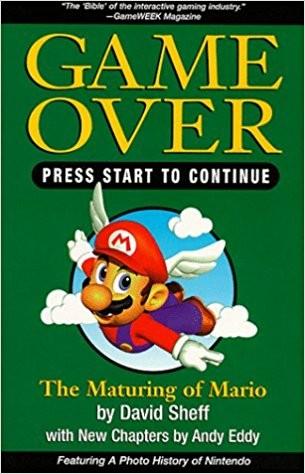
Game Over Press Start to Continue
by
David Sheff
and
Andy Eddy
Published 1 Jan 1993
It is a safe bet that multimedia will find its place in the living room rather than the office; multimedia machines will ultimately replace and supplement normal television, cable, VCRs, and the like. Computer companies will likely be left in the dust of the proliferation of multimedia that play on television sets unless they figure out ways to participate. Apple, which has a growing R&D budget for multimedia, will probably launch a CD-ROM-playing machine—a unit containing a Macintosh computer processor and operating system that will, presumably, hook up to televisions, much like a VCR. Apple, however, has the disadvantage of not understanding the under-$500 consumer market. An earlier plan to develop a video-game system was reportedly abandoned. “They realized how important the software business was,” Arakawa says.
…
He said he was devoting “by far the biggest chunk” of his time to Commodore, “beating the drum and evangelizing for multimedia.” Commodore released CDTV in early 1991. The multimedia machine was actually an Amiga computer hidden inside the sleek box of a consumer-electronics product (much as the Apple multimedia player would probably be a Macintosh in a cabinet designed for living rooms instead of offices). Commodore’s primary advantage was the Amiga; it had a readymade software library, and there was a software-development community that appreciated the machine. The Amiga processor was attached to a built-in CD-ROM drive and controlled by a fancy remote controller, although a keyboard, mouse, and floppy-disk drive could be added.
…
Weingartner, Inside Santa’s Workshop: How Toy Inventors Develop, Sell, and Cash In on Their Ideas (New York: Henry Holt, 1990). Levy, Steven, Hackers: Heroes of the Computer Revolution (New York: Bantam Doubleday Dell, 1984). Loftus, Geoffrey R., and Elizabeth F. Loftus, Mind at Play: The Psychology of Video Games (New York: Basic, 1983). McLuhan, Marshall, Understanding Media: The Extensions of Man (New York: McGraw-Hill, 1964). Moritz, Michael, The Little Kingdom: The Private Story of Apple Computer (New York: William Morrow, 1984), p. 13. Nakata, Hiroyuki, Success Legend in the Semiconductor Era: Nintendo’s Great Strategy (The Day Mario Exceeded Toyota) (Tokyo: JICC, 1990).
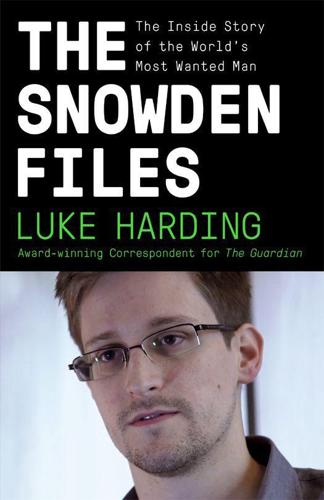
The Snowden Files: The Inside Story of the World's Most Wanted Man
by
Luke Harding
Published 7 Feb 2014
As Big Brother announces ‘We shall prevail’, the heroine hurls the hammer at him. The screen explodes in a blaze of light; the workers are open-mouthed. A voice announces smoothly: ‘On January 24th, Apple Computer will introduce Macintosh. And you’ll see why 1984 won’t be like 1984.’ The 60-second advert was screened to nearly 100 million Americans during the Super Bowl, and was subsequently hailed as one of the best ever. Isaacson writes: ‘Initially the technologists and hippies didn’t interface well. Many in the counterculture saw computers as ominous and Orwellian, the province of the Pentagon and the power culture.’
…
That was still to come. 10 DON’T BE EVIL Silicon Valley, California Summer 2013 ‘Until they become conscious, they will never rebel.’ GEORGE ORWELL, 1984 It was an iconic commercial. To accompany the launch of the Macintosh in 1984, Steve Jobs created an advert that would captivate the world. It would take the theme of George Orwell’s celebrated dystopian novel and recast it – with Apple as Winston Smith. His plucky company would fight the tyranny of Big Brother. As Walter Isaacson recounts in his biography of Jobs, the Apple founder was a child of the counterculture. He practised Zen Buddhism, smoked pot, walked around barefoot and pursued faddish vegetarian diets.
…
The commercial asserted the opposite – that computers were cool, revolutionary and empowering, instruments of self-expression. The Macintosh was a way of asserting freedom against an all-seeing state. Almost 30 years later, following Jobs’s death in 2011, an NSA analyst came up with a smirking rejoinder. He prepared a top-secret presentation and, to illustrate the opening slide, he pulled up a couple of stills from Jobs’s commercial – one of Big Brother, the other of the blonde heroine with the hammer and the orange shorts. Under the heading ‘iPhone Location Services’ he typed: ‘Who knew in 1984 …’ The next slide showed the late Jobs, holding up an iPhone. ‘… that this would be Big Brother …’ A third slide showed crowds of whooping customers celebrating after buying the iPhone 4; one fan had inked the name on his cheek.
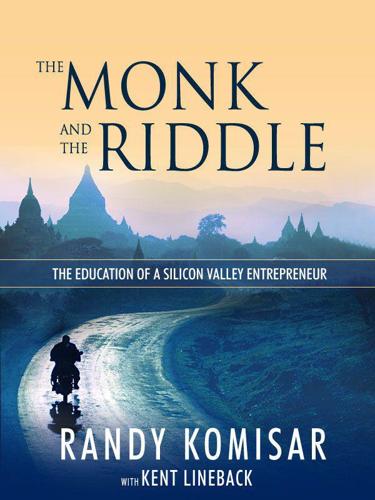
The Monk and the Riddle: The Education of a Silicon Valley Entrepreneur
by
Randy Komisar
Published 15 Mar 2000
The Apple he created was about making the power of computing accessible to everyone, about freedom from the tyranny of technology and technologists, about changing education, about using technology to help the handicapped cope with the challenges of their disabilities. While Apple clearly had to be financially successful, its more fundamental purpose was to innovate, invent, and lead an entire cultural revolution that Page 76 everyone there saw leaping from those keyboards and screens with silicon brains. Apple's 1984 Super Bowl commercial, where the free thinking individual charges through the faceless, gray crowd to shatter the tyranny of Big Brother, was gospel, not hype, throughout the Apple organization. All the people I met there, passionate young people, truly believed they were changing the world, not selling computers.
…
Its intuitive, friendly interface was the justification for those margins, but that business model and Apple's position were threatened by none other than Microsoft. In 1986 we had all seen Windows 1.0, and while it posed no threat to the Macintosh operating environment at the time, we understood what it meant. Microsoft's toe, even its whole foot, was in the water. At some point it would develop a product that was good enough. Then the competition would look sufficiently like Apple to erode Apple's margins and back it into a corner of its own making, with declining share and profit. Along with many others inside Apple, I was a strong proponent of licensing the Macintosh operating system in order to preempt Microsoft in setting the standard for user-friendly computing.
…
Sure, certain points were bound to be contentious, but negotiating became a creative opportunity for me to solve problems and build relationships, not to play poker. My final Claris lesson came when we sold the company back to Apple. We had intended initially that Claris would Page 127 eventually go public. But when Apple discovered in our draft prospectus that we planned to develop software for Windows, not just for the Macintosh, Apple execs decided to reel us back in rather than suffer the embarrassment of watching their offspring consort with the enemy. They had the contractual right to do so; however, the spinout agreement we had negotiated forced them to pay a multiple of the anticipated IPO price for the privilege.
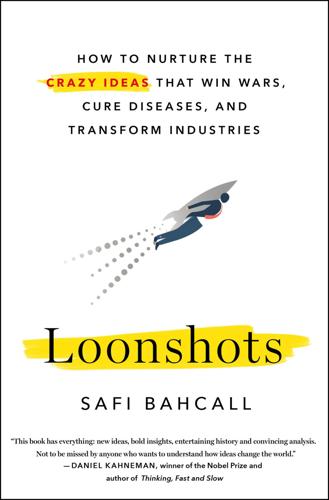
Loonshots: How to Nurture the Crazy Ideas That Win Wars, Cure Diseases, and Transform Industries
by
Safi Bahcall
Published 19 Mar 2019
Apple’s share had dropped to less than 10 percent and was shrinking rapidly. Apple’s attempts to win back the spotlight with the Apple III and the Lisa, projects led by Jobs until he lost interest (in one case) or was kicked off (in the other), flopped. The legendary Super Bowl ad in early 1984 for a new Apple product, called the Macintosh, created tremendous publicity and an initial burst of sales. But the computer was painfully slow, had no hard drive, and frequently overheated (Jobs had insisted on no fan, to keep it quiet). In a year in which IBM and Commodore each sold over two million computers, Macintosh sales dwindled to less than ten thousand per month.
…
Jobs proudly and publicly referred to his team, working on the Macintosh, as artists. He referred to the rest of the company, developing the Apple II franchise, as bozos. Apple II engineers took to wearing buttons with a circle and line running through an image of Bozo the Clown. Wozniak, an engineer with the demeanor of a teddy bear, was widely beloved at the company and in the industry. He resigned, openly complaining about the demoralizing attacks. Departures in the Apple II group became so common that one joke ran, “If your boss calls, be sure to get his name.” The toxicity spread. Key designers on the Macintosh side soon began leaving as well.
…
Analysts, observers, and industry experts concluded that a closed ecosystem could never work: customers wanted choice. Apple, while Jobs was exiled to NeXT, followed the advice of the analysts and experts. It opened its system, licensing out Macintosh software and architecture. Clones proliferated, just like Windows-based PCs. When Jobs returned to Apple, he insisted that the board agree to shut down the clones. It cost Apple over $100 million to cancel existing contracts at a time when it was desperately fighting bankruptcy. But that S-type loonshot, closing the ecosystem, drove the phenomenal rise of Apple’s products. The sex appeal of the new products lured customers in; the fence made it difficult to leave.
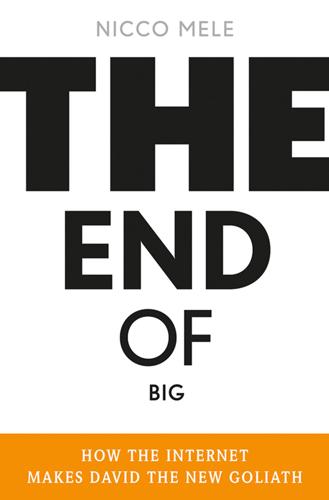
The End of Big: How the Internet Makes David the New Goliath
by
Nicco Mele
Published 14 Apr 2013
In the ad, a young woman breaks into a large auditorium where a crowd of mindless automatons sit listening to a giant screen of a speaking man, presumably Big Brother. The woman, representing the Macintosh (she has a sketch of the Mac on her tank top), smashes the screen. The advertisement closes with the text, “On January 24th, Apple Computer will introduce Macintosh. And you’ll see why 1984 won’t be like 1984.19 Recounting the story of the ad, industry journalist Adelia Cellini noted, “Apple wanted the Mac to symbolize the idea of empowerment, with the ad showcasing the Mac as a tool for combating conformity and asserting originality. What better way to do that than have a striking blond athlete take a sledgehammer to the face of that ultimate symbol of conformity, Big Brother?”
…
A liberationist ethic also became entrenched in the overt marketing of personal computing devices, most famously in a classic television commercial, Apple’s 1984 spot. Following the rousing success of Apple’s first two home computer models, Steve Jobs wanted to do something big to roll out its third model, the Macintosh personal computer. He hired Ridley Scott, who two years earlier had directed the sci-fi classic Bladerunner, to make the commercial.18 The result was a powerful and intense ad that referenced the dystopian future of George Orwell’s classic novel 1984. In the ad, a young woman breaks into a large auditorium where a crowd of mindless automatons sit listening to a giant screen of a speaking man, presumably Big Brother.
…
The anti-institutional counterculture nerd ethos of the 1960s and 1970s had grown into the personal computer industry—an industry large enough by this time that it could now buy an advertisement during the Super Bowl. Yet the advertisement it used to make a splash still paradoxically evoked a deep strain of radical individualism and personal expression in the midst of conformity. The Internet Comes to Malaysia Like the personal computer, the Internet reflected an “anti-big,” individualist philosophy when it emerged during the mid- to late-1990s, albeit a strain of this philosophy flowing from the other side of the political spectrum. Not long after 1984, consumers of the personal computer wanted to connect these devices together so that they could share things.

Move Fast and Break Things: How Facebook, Google, and Amazon Cornered Culture and Undermined Democracy
by
Jonathan Taplin
Published 17 Apr 2017
Jobs went back to Cupertino and called a board meeting, saying he had to build a new computer based on the PARC architecture and that it should not be backward-compatible with the existing Apple II. The board thought he was crazy, but Jobs applied his charisma—his “reality distortion field”—and got his way. Xerox got its Apple shares, and in December of 1980, Apple went public at $22 per share. Xerox’s holdings were instantly worth millions. The first version of a computer using the PARC architecture, the Lisa, was a commercial failure, but when Jobs introduced the Macintosh in an iconic advertisement that aired during the 1984 Super Bowl, the long-awaited vision of the future arrived. The tragedy for Xerox was that two years later, the Xerox CFO sold all its Apple stock. Imagine what it would have meant to the company if it had held on to 5 percent of Apple, which would now be worth about $32 billion.
…
The tragedy for Xerox was that two years later, the Xerox CFO sold all its Apple stock. Imagine what it would have meant to the company if it had held on to 5 percent of Apple, which would now be worth about $32 billion. In 1985, after the debut of the Macintosh, Microsoft quickly introduced Windows, an operating system that totally mimicked the Macintosh. Whatever advantage Apple had was quickly extinguished, and Steve Jobs was forced out of the company. Jobs immediately set out for revenge on his old company by building a new computer called NeXT. Not long after that, a twenty-nine-year-old English engineer, Tim Berners-Lee, took up a position at the Conseil Européen pour la Recherche Nucléaire (CERN).
…
Less than two minutes into the San Francisco demo, Engelbart said, “If in your office you as an intellectual worker were supplied with a computer display backed up by a computer that was alive for you all day and was instantly responsive to every action you have, how much value could you derive from that?” Engelbart had built a working prototype of what we today would easily recognize as a contemporary Internet device—fifteen years before the introduction of the Apple Macintosh. The next year Engelbart took a team from the Stanford Research Institute to the Lama Foundation commune, north of Taos, New Mexico. It was Stewart Brand who suggested that Lama might provide an atmosphere, as John Markoff wrote, “to create a meeting of the minds between the NLS researchers and the counterculture community animated by the Whole Earth Catalog.”
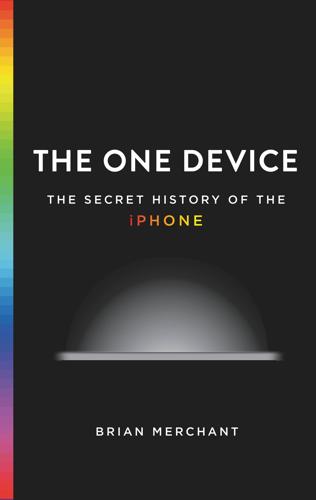
The One Device: The Secret History of the iPhone
by
Brian Merchant
Published 19 Jun 2017
Immaculately designed Apple Stores. Of course, for any of it to work, the product itself has to be impressive. But creating a mythology around that product is, especially in the early stages, as important to selling it as anything else. Traditional marketing campaigns are important too, of course, and Apple has run plenty of iPhone ads. There hasn’t been a truly classic iPhone spot or campaign, on the level of the famous Ridley Scott–directed “Big Brother” ad that introduced the Macintosh during the 1984 Super Bowl, the “Think Different” ads that reminded audiences that the Apple brand was associated with geniuses and world-changers in the late 1990s, the earbuds-and-silhouette campaign that created an efficient aesthetic shorthand for iPod cool in the early 2000s, or even the “I’m a Mac,” “I’m a PC” ads that played off Windows-based computers’ reputation for being buggy and lame.
…
They helped prove that user interface design, long derided as dull—the province of grey user settings and drop-down menus; “knobs and dials” as Christie puts it—was ripe for innovation. As Bas and Imran’s stars rose inside Apple, they started casting around for new frontiers. Fortunately, they were about to find one. While training to be a civil engineer in Massachusetts, Brian Huppi idly picked up Steven Levy’s Insanely Great. The book documents how in the early 1980s Steve Jobs separated key Apple players from the rest of the company, flew a pirate flag above their department, and drove them to build the pioneering Macintosh. Huppi couldn’t put it down. “I was like, ‘Wow, what would it be like to work at a place like Apple?’” At that, he quit his program and went back to school for mechanical engineering.
…
And it wouldn’t be the first time a merry band of Apple inventors plumbed another organization for UI inspiration. In fact, Silicon Valley’s premier Prometheus myth is rife with parallels: In 1979, a young squad of Apple engineers, led by Steve Jobs, visited the Xerox Palo Alto Research Center and laid eyes on its groundbreaking graphical user interface (GUI) boasting windows, icons, and menus. Jobs and his band of “pirates” borrowed some of those ideas for the embryonic Macintosh. When Bill Gates created Windows, Jobs screamed at him for stealing Apple’s work. Gates responded coolly: “Well, Steve, I think there’s more than one way of looking at it.
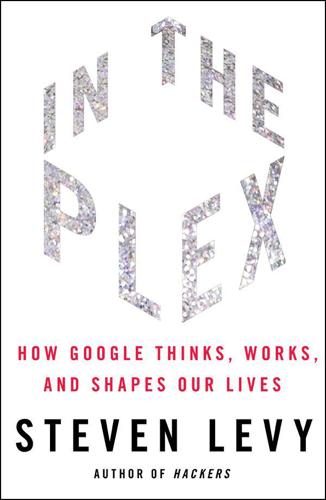
In the Plex: How Google Thinks, Works, and Shapes Our Lives
by
Steven Levy
Published 12 Apr 2011
Al Gore sat on Apple’s board, while he was the self-described “virtual advisory board” at Google. Intel CEO Paul Otellini, who was on Google’s board, had started supplying the chips for Macintosh computers. There was so much overlap that it was almost as if Apple and Google were a single company. Smart phones seemed to be the logical nexus of the unofficial partnership. Google had a bustling mobile division apart from Android, intended to put Google squarely into the world of smart phones, mainly by way of making mobile applications of products like Gmail, Google Maps, and especially search. Apple’s iPhone looked to be the showcase for what those apps could do when liberated from the desktop.
…
Malseed expanded on his research in The Google Story. 15 “Suppose all the information” Tim Berners-Lee, Weaving the Web (New York: HarperBusiness, 2000), p. 4. 15 The web’s pedigree I give a detailed account of the work of Bush, Englebart, and Atkinson in Insanely Great: The Story of Macintosh, the Computer That Changed Everything (New York: Penguin, 1994), and discuss Nelson’s work in Hackers: Heroes of the Computer Revolution (New York: Doubleday, 1984). 16 personalized movie ratings Sergey Brin, résumé at http://infolab.stanford.edu/~sergey/. 17 “Why don’t we use the links” Page and Brin spoke to me in 2002 about developing the early search engine, a subject we also discussed in conversations in 1999, 2001, and 2004. 17 “The early versions of hypertext” Battelle, The Search, p. 72. 20 “For thirty years” Carolyn Crouch et al., “In Memoriam: Gerald Salton, March 8, 1927–August 28, 1995,” Journal of the American Society for Information Science 47(2), 108; “Salton Dies; Was Leader in Information Retrieval Field,” Computing Research Association website. 20 the web was winning I looked at the state of web search in “Search for Tomorrow,” Newsweek, October 28, 1996. 21 “The idea behind PageRank” John Ince, “The Lost Google Tapes,” a series of interviews with Google.
…
Then came a detour to the brilliant but erratic work of an autodidact named Ted Nelson, whose ambitious Xanadu Project (though never completed) was a vision of disparate information linked by “hypertext” connections. Nelson’s work inspired Bill Atkinson, a software engineer who had been part of the original Macintosh team; in 1987 he came up with a link-based system called HyperCard, which he sold to Apple for $100,000 on the condition that the company give it away to all its users. But to really fulfill Vannevar Bush’s vision, you needed a huge system where people could freely post and link their documents. By the time Berners-Lee had his epiphany, that system was in place: the Internet.
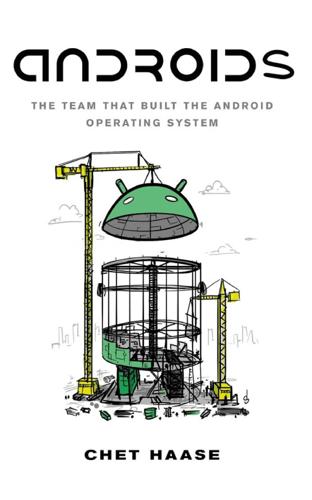
Androids: The Team That Built the Android Operating System
by
Chet Haase
Published 12 Aug 2021
(Picture courtesy Nick Sears) During the dot-com implosion in 2000-2001, the company pivoted to a device that would automatically sync data wirelessly. But it wasn’t a phone. Yet. Then, in January of 2001, Andy met with T-Mobile’s Nick Sears at CES.30 Nick Sears and Mobile Data In 1984, Nick was a Private in the US Army working an administrative job to earn college benefits. Then he watched Apple’s legendary 1984 ad during the Super Bowl. “I knew we were at the beginning of a technology revolution. I walked into ComputerLand, dropped $3,200, and walked out with an IBM PC (1 floppy disk drive), DOS, turbo pascal, Lotus Notes, WordStar, and a dot-matrix printer.
…
Mike started programming late in life, at least compared to many of the early Android engineers. Mike got college degrees in science and math. But in 1984, the original Macintosh was released and showed up on his campus. “That changed everything. I wanted to do graphics, because that’s what the Mac was really showing off. So I got a math degree, but taught myself programming.” Mike managed to get hired at Apple after grad school (“I just squeaked into that job”), where he met Cary Clark, future co-founder of Skia.157 After several years at Apple, Mike left and started HeadSpin, creating a game engine used by CD-ROM games. HeadSpin was acquired by Cyan, makers of the game Myst, and Mike left to start a new graphics technology company called AlphaMask.
…
Three bits can be used to represent, in binary, numbers from 0 (with all three bits set to 0) to 7 (with all three bits set to 1). 252 I remember seeing Cary Clark give a technical presentation about Mac graphics at WWDC (Apple’s annual developer conference) way back in the early 90s. I had forgotten all about it until I ran into him on the Skia team at Google years later. Tech is a teeny, tiny, small town. A really crowded town with millions of inhabitants all over the world, but a small town nevertheless, where you keep bumping into people you’ve met elsewhere. 253 Cary agreed that he implemented Picture for Skia, but not that he invented the concept. He gave that credit to Bill Atkinson, one of the engineers on the original Macintosh team at Apple who helped create the original QuickDraw 2D graphics engine for the Mac.
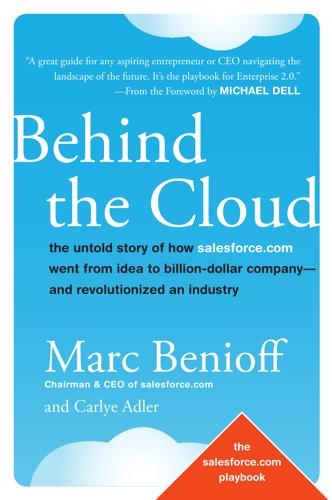
Behind the cloud: the untold story of how Salesforce.com went from idea to billion-dollar company--and revolutionized an industry
by
Marc Benioff
and
Carlye Adler
Published 19 Nov 2009
The lessons I learned as an entrepreneur were pivotal, as were those I learned working for somebody else. In 1984, I had a summer job at Apple writing some of the first native assembly language for the Macintosh. I had the opportunity to work on the most exciting and important project at Apple, and it was like getting paid to go to Disneyland. There were fruit smoothies in the refrigerators, a motorcycle in the lobby, and shiatsu massages. The very best part was being able to witness Steve Jobs walking around, motivating the developers. Steve’s leadership created the energy and spirit in the office. Apple encouraged the ‘‘think different’’ mind-set throughout its entire organization.
…
Play #28: Build Street Teams and Leverage Testimony Although I had been inspired by the customer energy that Steve Jobs had built around the Macintosh, the idea for cultivating a group of salesforce.com enthusiasts did not come from the technology community; it emanated from the hip-hop community. A friend introduced me to MC Hammer, who visited our San Francisco office (wearing a business suit, not the trademark Hammer pants) and shared his ‘‘Street Team’’ concept: that of building local networks of people to back you. At the time, I didn’t know how salesforce.com Street Teams would work in action, but I thought that MC Hammer was a creative genius and that this unconventional idea was worth investigating.
…
Founder and CEO Larry Ellison regularly xx Introduction walked the halls to chat with employees. (I usually took these opportunities to share my enthusiasm for Macs.) Soon after I sent Larry a note asking when Oracle would be on the Macintosh and included a business plan about how to make us successful in the Apple market, Larry made me the director of Oracle’s Macintosh division. Being responsible for the division that created software for personal computers was an amazing opportunity. Then, after Tom Siebel, the executive who ran direct marketing, resigned and recommended me as his replacement, I inherited an even more exciting and formative role.

Actionable Gamification: Beyond Points, Badges and Leaderboards
by
Yu-Kai Chou
Published 13 Apr 2015
Then, a deep male voice says, “On January 24th, Apple Computer will introduce Macintosh. And you’ll see why 1984 won’t be like ‘1984.’”6 Through this commercial, Apple reassures viewers that the world wouldn’t be controlled by “Big Brother” - IBM, but would be liberated by Apple’s computers. Though Apple’s Board did not really approve of this commercial and it was almost thrown into the garbage bin, when finally aired, it became one of the most successful commercials in history. In his book, Electric Dreams: Computers in American Culture, Ted Friedman discusses how powerful the commercial was: Super Bowl viewers were overwhelmed by the startling ad.
…
, that’s basically saying that all these non-Apple smartphone companies combined have surpassed Apple. Big deal.) So the multi-billion dollar question is: So, how did Apple do this? Besides offering stellar products with elegant design and meticulous engineering, Apple has been one of the few electronics companies that actually try to sell a higher meaning. Lets examine two of the most successful commercials in history - both from Apple. The Crazy Ones in 1984 The first Apple commercial that reached massive fame and success, is the “1984” commercial, aired in 1984’s Super Bowl XVIII on CBS4. This is a build-up of the popular novel “Nineteen Eighty-Four” by George Orwell, published in 1948 about a futuristic dystopian world where a unified society is controlled and brainwashed by a centralized government5.
…
.↩ Wikimedia Blog. “Who are Wikipedias Donors”. 02/05/2012.↩ Maney, Kevin. “Apple’s ‘1984’ Super Bowl Commercial Still Stands as Watershed Event”. USA Today. January 28, 2004.↩ Orwell, George. Nineteen Eighty-Four. Secker & Warburg. 1949.↩ Youtube, “Apple - 1984” URL: http://www.yukaichou.com/1984↩ Friedman, Ted. Electric Dreams: Computers in American Culture, 2005.↩ Hormby, Tom. Low End Mac. “Think Different: The Ad Campaign that Restored Apple’s Reputation”. 8/10/2013.↩ Siltanen, Rob. Forbes. “The Real Story Behind Apple’s ‘Think Different’ Campaign”. 12/14/2011.↩ Waze Website: waze.com↩ In Norse mythology and the Comic Book Marvel Universe, Mjolnir is the divine thunder hammer of Thor.↩ Jujing, Guo.
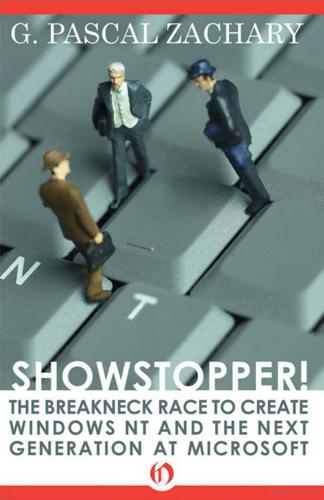
Showstopper!: The Breakneck Race to Create Windows NT and the Next Generation at Microsoft
by
G. Pascal Zachary
Published 1 Apr 2014
When things seemed to go badly, his money and celebrity meant nothing to him. As his father put it, his attitude was: “Everything is going to hell in a handbasket.” The summer of 1988 was one of those hell-in-a-handbasket times. Gates’s absorption in work had just cost him a love affair, and a few months earlier Apple Computer had filed suit against Microsoft, alleging that Windows illegally copied the Macintosh’s operating program. The case turned on ill-defined concepts of software copyright and intellectual property law, and the outcome was far from clear. Still, the case enraged Gates because it fueled the claim that his facility as an imitator accounted for his success.
…
Portable code was easy to write but inherently inefficient. By definition, writing in a high-level language produced code that would run, after a routine compilation, on different microprocessors. A high-level language produced relatively slow and large programs. Microsoft’s DOS, Digital’s VMS and Apple’s Macintosh operating systems, for instance, relied on assembly language because it produced small, tight code that fully exploited specific hardware. Compact code was inherently good since it consumed less internal memory. Consisting of slivers of silicon chips called DRAM (“dynamic-random-access-memories”), internal memory was like a gas tank.
…
Cutler strode into the room “like an Air Force colonel... with his superclose shave and short hair and this hard-driving, serious, tough attitude.” Rubin didn’t “think of a software guy as being a down-to-business kind of guy.” Networking was already a sore subject at Microsoft. A standard feature of minicomputers and workstations, networking had been slow to arrive in the world of PCs. Aside from Apple, whose Macintosh contained a simple and effective means of sharing files and printers between machines, customers had yet to find a standard way of linking together different brands of PCs. A Utah company named Novell had grabbed the lead with a program called Netware, which made it possible for many PCs to both share a single printer and handle a set of files located on one PC.

12 Bytes: How We Got Here. Where We Might Go Next
by
Jeanette Winterson
Published 15 Mar 2021
Ridley Scott directed the TV commercial. A female runner, pursued by the Thought Police, hurls a hammer through a giant screen featuring a Big Brother figure. The voice-over tells us, ‘On January 24th, Apple Computer will introduce Macintosh. And you’ll see why 1984 won’t be like 1984.’ The whole thing lasts one minute. The future would be fast. In 1985, Donna J. Haraway’s vision of the future was one where we could merge with technology – not be controlled by technology. A Cyborg Manifesto was as optimistic as the decade itself. Technology was on our side. (At that time there were still plenty of women working in computing science – around 37% of the total in the US, according to the National Centre for Education Statistics – so, after all the gains of feminism in the 1970s, the future was looking more balanced, as well as new.)
…
What is puzzling is why this history has been buried and distorted, and how and why women were driven out of computing science and programming to such an extent that young women now are being begged to consider what is mythologised as a male career. * * * 1984 seems to be a pivotal date. In 1984, in the USA, women made up 37% of all students taking computer science at degree level. In 1984 Apple launched the home computer. That first advert – directed by Blade Runner supremo Ridley Scott – features a young woman throwing a hammer through a dystopian propaganda screen. A woman … But … A year later, Apple was marketing its personal computers directly and specifically at males. It’s 1985, and Apple’s new TV ad, narrated by a male, is all about young Brian discovering his potential – even though the teacher in the advert is female.
…
Jurassic Car Park I need your clothes, your boots, and your motorcycle … Terminator 2: Judgment Day, 1991 Power is in tearing human minds to pieces and putting them together again in shapes of your choosing. George Orwell, 1984, 1949 The Terminator movie series launched in 1984 – the fateful year described in George Orwell’s novel of a rigid, managed, totalitarian, surveillance world of thoughtcrimes, doublethink, Newspeak, Room 101, and Big Brother. In fact, the 1980s kick-started neo-liberal laissez-faire; deregulation, non-unionisation, and the pre-eminence of the individual. * * * In 1984, the Macintosh 128K was the world’s first commercially successful personal computer to use a graphic interface. Ridley Scott directed the TV commercial.
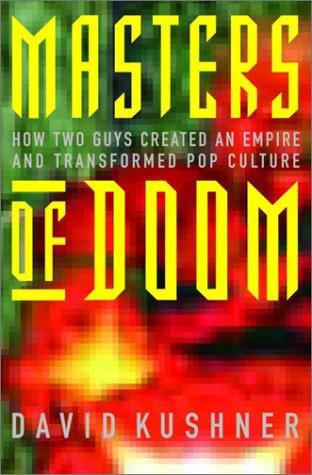
Masters of Doom: How Two Guys Created an Empire and Transformed Pop Culture
by
David Kushner
Published 2 Jan 2003
“Some of you,” he finally typed, “are busy getting all bent out of shape about this.” Carmack was talking about the gaming community’s reaction to id’s announcement that the first test of their next game, Quake III Arena, would be released for Macintosh, not Windows. In the gaming world, this was usually as big as the controversies got. But while Carmack turned his attention to his plan, describing the pros and cons of the new Macintosh systems, he couldn’t avoid the other controversy. Finishing his update, he pushed himself away from his desk and walked down the hall to get a Diet Coke and a snack. “Hey,” he said, passing the police officers in his lobby, “do you guys want anything to eat?”
…
she yelped, leaping her soldier on the screen through a static-filled teleporter gate, only to see him rematerialize in an unanticipated blizzard of nails. Or, as she described the style of this particular death, “Telefragged!” It was January 1997, minutes away from the online gaming underground’s unofficial Super Bowl. Like the few dozen others convulsing throughout this University of Kansas flophouse, Stevie–an ebullient twenty-year-old with a short brown hob–had been practicing two sleepless nights for the match between her team, Impulse 9, and their rivals, who had driven eight hours from Michigan, the Ruthless Bastards.
…
She had him buy button-down shirts, wear nice jeans and contacts. After years of being beaten down by his father and his stepfather, Romero was finally getting recognition. At sixteen, Romero was just as eager to have success with his games. After eight months of rejections, the good news came on March 5, 1984, from an Apple magazine called InCider. An editor, weary from a recent trip to Mardi Gras, wrote that the magazine had decided to publish the code for Romero’s Scout Search, a low-resolution maze game in which the player– represented by a single dot–had to gather all his scouts–more dots–before being attacked by a grizzly bear–another dot.
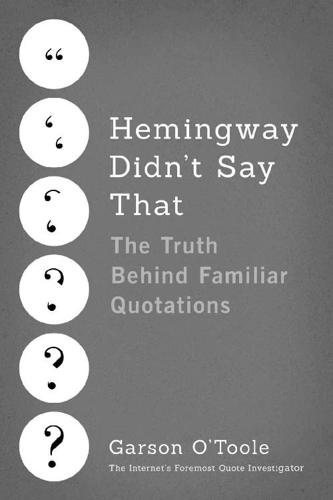
Hemingway Didn't Say That: The Truth Behind Familiar Quotations
by
Garson O'Toole
Published 1 Apr 2017
“A bird doesn’t sing because it has an answer, it sings because it has a song.” SYNTHESIS In 1988 the Sydney Morning Herald in Australia printed an article that discussed lawsuits in the computer industry and the development of the Macintosh computer system. The article contained a controversial remark by Steve Jobs, the iconic entrepreneur and cofounder of Apple.1 Steve Jobs said that while it was being developed he kept in mind a quote from Pablo Picasso, “Good artists copy. Great artists steal.” Jobs repeated the quip in front of the camera for a multipart PBS television program called Triumph of the Nerds: The Rise of Accidental Empires.
…
Ruff published Survive and Win in the Inflationary Eighties. The title of the book’s fourth chapter was an instance of the saying:12 CHAPTER 4 When You Have a Hammer in Your Hand, Everything Looks Like a Nail In 1982 an MIT professor attributed an instance of the saying to Maslow, as reported in the New York Times.13 “Abraham Maslow once said that to him who has only a hammer, the whole world looks like a nail,” said Joseph Weizenbaum, a professor of computer science at M.I.T. In 1984 the famous investor Warren Buffett used the adage when criticizing academic studies of financial markets that emphasized inappropriate mathematical techniques.14 It isn’t necessarily because such studies have any utility; it’s simply that the data are there and academicians have worked hard to learn the mathematical skills needed to manipulate them.
…
Once these skills are acquired, it seems sinful not to use them, even if the usage has no utility or negative utility. As a friend said, to a man with a hammer, everything looks like a nail. By August 1984 the saying had been reassigned to the brilliant humorist Mark Twain. The computer periodical InfoWorld printed a received missive with the title “Twain Said It.” The letter writer presented an instance with the words “only” and “everything” italicized and credited Twain:15 For the record, the accurate quote is: “If the only tool you have is a hammer, everything looks like a nail.” I have added emphasis that Mark Twain left to his rhetoric. In 1985 the award-winning author William Gaddis cleverly permuted the maxim to yield a fresh and emotionally insightful remark for a character in his novel Carpenter’s Gothic:16 [W]hen you feel like a nail everything looks like a hammer . . .
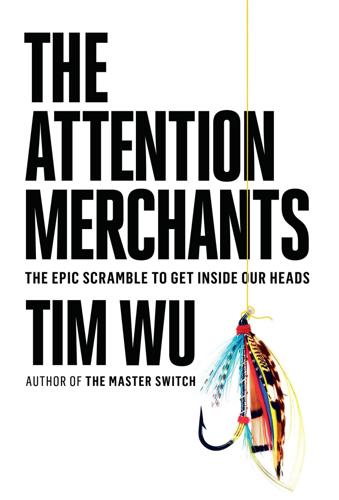
The Attention Merchants: The Epic Scramble to Get Inside Our Heads
by
Tim Wu
Published 14 May 2016
A much lauded advertisement for Coca-Cola that ran during the 1979 Super Bowl featured an enormous African American football player, Mean Joe Greene, being offered a Coke by a young white boy.22 And in 1984, Apple Computer ran its “Big Brother” advertisement during the Super Bowl to great acclaim. Directed by Blade Runner auteur Ridley Scott, it portrayed a young woman running and smashing a giant screen to save society from a totalitarian overlord. “On January 24th Apple Computer will introduce Macintosh,” the advertisement proclaimed. “And you’ll see why 1984 won’t be like ‘1984.’ ” The publicity created by its advertising, at least according to Apple, sold $3.5 million of its new Macintoshes.23 In retrospect, the word “remote control” was ultimately a misnomer.
…
These were a far cry from the old, extremely irritating Anacin advertisements depicting hammers pounding the skull. Whether, in fact, they prevented zapping, however, is hard to know for sure. Fortunately for the advertising industry, it remained impossible to accurately measure whether people were watching commercials or not, saving the enterprise from a true and full accounting. It was also during this era that the Super Bowl became a showcase for advertising’s greatest talents, seeming to prove the point that there were, indeed, commercials that people truly wanted to see. A much lauded advertisement for Coca-Cola that ran during the 1979 Super Bowl featured an enormous African American football player, Mean Joe Greene, being offered a Coke by a young white boy.22 And in 1984, Apple Computer ran its “Big Brother” advertisement during the Super Bowl to great acclaim.
…
While measurements were crude in those days, by 1931, Amos ’n’ Andy is believed to have attracted some 40 million listeners each and every evening—with some episodes reaching 50 million—this out of a population that was then 122 million. It was a result unprecedented for any entertainment product, the equivalent of having today’s Super Bowl audiences each and every evening—and with just one advertiser. Having seized their audience, the sponsor’s messages soon grew longer, and soon were indistinguishable from the old hard-sell advertising copy, albeit written to be heard, not read: As we have told you repeatedly, Pepsodent Tooth Paste today contains a new and different cleansing and polishing material.

Unscripted: The Epic Battle for a Media Empire and the Redstone Family Legacy
by
James B Stewart
and
Rachel Abrams
Published 14 Feb 2023
“Don’t go near this,” she warned. * * * — Soon after reaching out to Minow, Shari was at Super Bowl LI in Houston to watch her beloved New England Patriots take on the Atlanta Falcons when she spotted her fellow CBS director Chad Gifford on the field near the fifty-yard line. When she went over to say hello, Gifford grabbed her chin and tilted her head up. “Listen, young lady, we need to talk,” he said. For Shari, this demeaning treatment was all too reminiscent of their encounter at the Four Seasons. “We’re at the Super Bowl,” Shari protested, not wanting to discuss business, and tried to pull away. Gifford relaxed his grip, but the incident nearly spoiled an otherwise thrilling game, in which the Patriots overcame a 28–3 deficit to win in overtime.
…
GO TO NOTE REFERENCE IN TEXT But when accounts of an affair: Jeane MacIntosh, “Viacom Mogul Could Be Sumner $quashed,” New York Post, September 19, 1999. GO TO NOTE REFERENCE IN TEXT Soon after meeting, Sumner and Peters: Mitchell Fink, “Chief’s Sizzling Summer Vacation,” New York Daily News, September 8, 1998. GO TO NOTE REFERENCE IN TEXT dining at the famed La Tour d’Argent: Christine Peters, “My 18-Year Relationship with Sumner Redstone,” Hollywood Reporter, August 19, 2020. GO TO NOTE REFERENCE IN TEXT After the Rupert Murdoch–owned: Jeane MacIntosh, “Viacom Tycoon Confesses to Affair with H’Wood Exec,” New York Post, September 22, 1999.
…
“I’m not going to stand in the way,” he said. “That’s not what she wants to hear,” Klieger responded. Moonves said he hadn’t liked the way Shari stormed out of the last board meeting. And now she was complaining about his loyal and long-serving board member Gifford, even trying to get him off the board, over some minor incident at the Super Bowl. Klieger stressed that he and Shari needed to get along. Shari didn’t want the merger unless Moonves was enthusiastically behind it. “If you’re reluctant, it won’t work,” he said. “Shari is becoming closer with Bob,” Klieger warned, referring to Viacom’s Bakish, who was proving a master at relationship management.
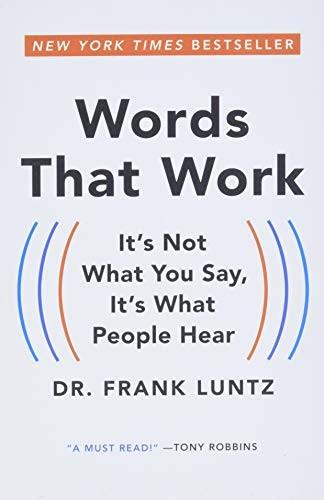
Words That Work: It's Not What You Say, It's What People Hear
by
Dr. Frank Luntz
Published 2 Jan 2007
And not all ads have to air hundreds of times for us to remember them. Two ads stand above all the rest for their impact, even though they were officially broadcast just once: the aforementioned “Daisy” spot that helped sink Barry Goldwater in 1964, and the infamous “1984” commercial for Apple that aired during that year’s Super Bowl—forever connecting Hollywood production with Madison Avenue creativity. That spot, designed to introduce the much-anticipated Macintosh computer, was put together by the dream of award-winning director Ridley Scott and advertising powerhouse Chiat/Day—and Advertising Age named it the top spot of the decade. Advertising certainly didn’t start out to be corruptive or manipulative.
…
His rags to riches back to rags and once again to riches story is one that should be taught at every business school because it demonstrates the power of personal conviction—and that conviction has defined Apple as well. Responding to a critic who asked why he thought his overly ambitious development plans could be achieved, Jobs declared, “Because I’m the CEO and I think it can be done.” His unrelenting can-do language and spirit are a perfect reflection of the company he ran. The legendary “1984” Super Bowl commercial set a standard that has still not been surpassed in advertising, and his yearly “rock star” performances for employees and shareholders take on a transformational tone much like a Springsteen concert.
…
Conversely, if you show too little, as Infiniti automobiles did when they launched the new brand in 1989, you don’t give people the tools they need to create their own images. By not showing the car, they didn’t create anticipation or imagination. They created annoyance. Similarly, AT&T Wireless wanted Americans to imagine (and get) an mLife, digital-speak for mobile life, when it launched a multimillion-dollar branding campaign just before the 2002 Super Bowl. They thought teaser ads asking “What is mLife” would “intrigue” consumers and pique interest. Like Infiniti, the mLife promotion did become a hot topic of discussion—and debate—and it generated considerable Web traffic, but in this case the product reveal did not live up to the hype, and AT&T Wireless dropped the campaign.

Platform Revolution: How Networked Markets Are Transforming the Economy--And How to Make Them Work for You
by
Sangeet Paul Choudary
,
Marshall W. van Alstyne
and
Geoffrey G. Parker
Published 27 Mar 2016
Calibrating the right level of openness is undoubtedly one of the most complex as well as one of the most critical decisions that a platform business must make.4 The decision affects usage, developer participation, monetization, and regulation. It’s a challenge that Steve Jobs struggled with throughout his career. In the 1980s, he got it wrong by choosing to keep the Apple Macintosh a closed system. Competitor Microsoft opened its less elegant operating system to outside developers and licensed it to a host of computer manufacturers. The resulting flood of innovation enabled Windows to claim a share of the personal computer market that dwarfed Apple’s. In the 2000s, Jobs got the balance right: he opened the iPhone’s operating system, made iTunes available on Windows, and captured the lion’s share of the smartphone market from rivals like Nokia and Blackberry.5 Jobs liked to recast the open/closed dilemma as a choice between “fragmented” and “integrated,” terms that subtly skewed the debate in favor of a closed, controlled system.
…
In some cases, both the platform manager and the platform sponsor can be either a single company or a group of companies—with further implications for issues of control and openness.10 Figure 7.3 illustrates four models for managing and sponsoring platforms. In some cases, a single firm both manages and sponsors the platform. We call this the proprietary model. For example, the hardware, software, and underlying technical standards for the Macintosh operating system and mobile iOS are all controlled by Apple. Sometimes a group of firms manages the platform while one firm sponsors it. This is the licensing model. Google, for example, sponsors the “stock” Android operating system, but it encourages a number of hardware firms to supply devices that connect consumers to the platform.
…
Saul Hansell, “No More Giveaway Computers. Free-PC To Be Bought by eMachines,” New York Times, November 30, 1999, http://www.nytimes.com/1999/11/30/business/no-more-giveaway-computers-free-pc-to-be-bought-by-emachines.html. 8. Dashiell Bennett, “8 Dot-Coms That Spent Millions on Super Bowl Ads and No Longer Exist,” Business Insider, February 2, 2011, http://www.businessinsider.com/8-dot-com-super-bowl-advertisers-that-no-longer-exist-2011-2. 9. “The Greatest Defunct Web Sites and Dotcom Disasters,” Crave, cnet .co.uk, June 5, 2008, http://web.archive.org/web/20080607211840/http://crave.cnet.co.uk/0,39029477,49296926-6,00.htm. 10. Geoffrey Parker and Marshall Van Alstyne, “Information Complements, Substitutes and Strategic Product Design,” Proceedings of the Twenty-First International Conference on Information Systems (Association for Information Systems, 2000), 13–15; Geoffrey Parker and Marshall Van Alstyne, “Internetwork Externalities and Free Information Goods,” Proceedings of the Second ACM Conference on Electronic Commerce (Association for Computing Machinery, 2000), 107–16; Geoffrey Parker and Marshall Van Alstyne, “Two-Sided Network Effects: A Theory of Information Product Design,” Management Science 51, no. 10 (2005): 1494–1504. 11.
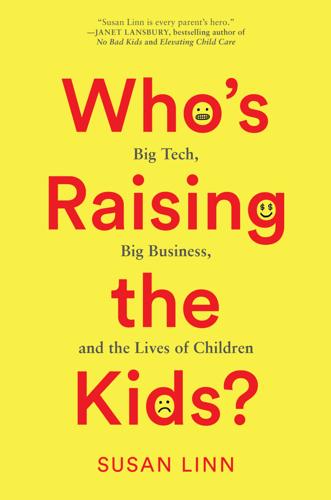
Who’s Raising the Kids?: Big Tech, Big Business, and the Lives of Children
by
Susan Linn
Published 12 Sep 2022
Neal Larson, “Apple Would Be in Trouble with Customers If They Weren’t a Cult,” Idaho State Journal, December 31, 2017, idahostatejournal.com/opinion/columns/apple-would-be-in-trouble-with-customers-if-they-weren/article_feb63db0-7e47-51a2-a17d−6e95a8ebbf69.html; Lindsay Willott, “10 Brand Loyalty Statistics for 2017,” Customer Thermometer, May 25, 2017, www.customerthermometer.com/customer-retention-ideas/brand-loyalty-statistics-2017; Kurt Badenhausen, “The World’s Most Valuable Brands 2019: Apple on Top at $206 Billion,” Forbes, May 22, 2019; Marty Swant, “Apple, Microsoft and Other Tech Giants Top Forbes’ 2020 Most Valuable Brands List,” Forbes, May 22, 2019; Communications, “Forbes Releases Seventh Annual World’s Most Valuable Brands List,” Forbes, May 23, 2017. 40. “Apple 1984 Super Bowl Commercial Introducing Macintosh Computer,” www.youtube.com/watch?v=2zfqw8nhUwA. 41. “Apple CEO Tim Cook: ‘Privacy Is a Fundamental Human Right,’” NPR, October 1, 2015, www.npr.org/sections/alltechconsidered/2015/10/01/445026470/apple-ceo-tim-cook-privacy-is-a-fundamental-human-right. 42. Chen Guangcheng, “Apple Can’t Resist Playing by China’s Rules,” New York Times, January 23, 2018. 43. Jack Nicas, Raymond Zhong, and Daisuke Wakabayashi, “Censorship, Surveillance and Profits: A Hard Bargain for Apple in China,” New York Times, May 17, 2021. 44.
…
What takes effort is seeking out facts about corporate behavior. Apple, for instance, revered among marketers for its devotedly loyal customers and for the emotional connections it generates with consumers, has topped Forbes’ list of the world’s most valuable brands every year since the list began in 2010.39 In January 1984, Apple launched its now iconic TV commercial during the Super Bowl.40 It features a dystopian, dictatorial state, reminiscent of George Orwell’s book 1984, that is disrupted and presumably destroyed by a young woman—who is the only spot of color in this dismal, gray world—hurling a hammer at an image on a screen. The screen explodes into a bright white light, and we see and hear the following words: “On January 24th Apple Computer will launch Macintosh, and you’ll see why 1984 won’t be like 1984.”
…
The screen explodes into a bright white light, and we see and hear the following words: “On January 24th Apple Computer will launch Macintosh, and you’ll see why 1984 won’t be like 1984.” The ad launched a decades-long marketing trajectory that positioned Apple as antiauthoritarian, pro-freedom, pro-democracy, and pro-nonconformity. In 2015, Apple’s CEO Tim Cook reinforced this branding when he was interviewed about privacy on National Public Radio. He described privacy as “a fundamental human right,”41 and claimed that Apple was more protective of its customers than other tech companies were. Yet in 2017, Apple began allowing the highly authoritarian, nondemocratic Chinese government to access data from all Chinese citizens who stored data in Apple’s iCloud—including their contacts, photos, text files, and calendars.42 Four years later, the New York Times quoted Nicholas Bequelin, East Asia director for the human rights group Amnesty International, describing Apple as a “cog in the censorship machine that presents a government-controlled version of the internet.”
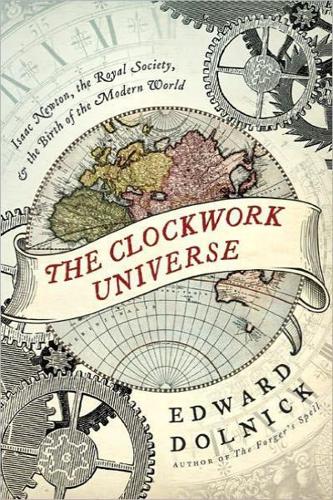
The Clockwork Universe: Saac Newto, Royal Society, and the Birth of the Modern WorldI
by
Edward Dolnick
Published 8 Feb 2011
“It’s so rare,” the Duchess of Orléans declared happily, “for intellectuals to be smartly dressed, and not to smell, and to understand jokes.” Leibniz was greatly impressed by a demonstration of “a Machine for walking on water,” which was apparently akin to this arrangement of inflatable pants and ankle paddles. Today we slap the word genius on every football coach who wins a Super Bowl, but both Newton and Leibniz commanded intellectual powers that dazzled even their enemies. If their talents were on a par, their styles were completely different. In his day-to-day life, as well as in his work, Leibniz was always riding off boldly in all directions at once. “To remain fixed in one place like a stake in the ground” was torture, he remarked, and he acknowledged that he “burned with the desire to win great fame in the sciences and to see the world.”
…
The winning bidder paid $480,000. 27 As one of Pythagoras’s followers told the tale, the story began when Pythagoras listened to the sound of hammering as he walked by a blacksmith’s shop. As the blacksmith struck the same piece of iron with different hammers, some sounds were harmonious, others not. The key, Pythagoras found, was whether the weights of the hammers happened to be in simple proportion. A twelve-pound hammer and a six-pound hammer, for instance, produced notes an octave apart. 28 Augustine did not explain why God did not make the world in 28 days (1 + 2 + 4 + 7 + 14) or 496 days or various other possibilities. 29 A prime number is one that can’t be broken down into smaller pieces.
…
JUST CRAZY ENOUGH 301 Molière long ago made fun: Thomas Kuhn famously cited Molière in The Structure of Scientific Revolutions, p. 104. 302 “We are all agreed that your theory is crazy”: Bohr made the remark to Wolfgang Pauli and added, “My own feeling is that it is not crazy enough.” Dael Wolfle, ed., Symposium on Basic Research (Washington, DC: American Association for the Advancement of Science, 1959), p. 66. 302fn In time, this bewilderment: J. J. MacIntosh, “Locke and Boyle on Miracles and God’s Existence,” p. 196. 303 “He claims that a body attracts”: Brown, “Leibniz-Caroline Correspondence,” p. 273. 303 “Mysterious though it was”: John Henry, “Pray do not Ascribe that Notion to me: God and Newton’s Gravity,” in Force and Popkin, eds., The Books of Nature and Scripture, p. 141. 303 “even if an angel”: Brown, “Leibniz-Caroline Correspondence,” p. 291. 304 If the sun suddenly exploded: Brian Greene, The Elegant Universe (New York: Norton, 1999), p. 56. 305 “so great an absurdity”: Westfall, Never at Rest, p. 505. 305 “To tell us that every Species”: From the end of Opticks, quoted in Kuhn, The Copernican Revolution, p. 259. 306 “as if it were a Crime”: Westfall, Never at Rest, p. 779. 306 “Ye cause of gravity”: Ibid., p. 505. 306 “I have not been able to discover”: Cohen’s translation of the Principia, p. 428.

Palo Alto: A History of California, Capitalism, and the World
by
Malcolm Harris
Published 14 Feb 2023
Jobs gifted Macs to the children of John Lennon and Yoko Ono and Mick and Bianca Jagger, paying tribute to the counterculture and squeezing Apple into the lineage. The company announced the product launch to the public with an iconic commercial that aired during the 1984 Super Bowl. Directed by Ridley Scott (then recently of Alien and Blade Runner fame), the one-minute ad showed a scene right out of George Orwell’s 1984, as rows of worker drones listen to Big Brother on a big screen. In runs a braless blond woman (Anya Major) chased by police, breasts bouncing in an Apple tank top. She wields a giant hammer, which she flings through the propaganda screen. “On January 24th, Apple computer will introduce Macintosh,” the narrator intones as the words scroll on the screen.
…
Margaret O’Mara, The Code: Silicon Valley and the Remaking of America (New York: Penguin Press, 2019), 189. 12. Steve Johnson, “What You Didn’t Know about Apple’s ‘1984’ Super Bowl Ad,” Chicago Tribune, February 2, 2017. 13. Sol Libes, “Bytelines,” BYTE, June 1961, 208. 14. Michael A. Hiltzik, Dealers of Lightning: Xerox PARC and the Dawn of the Computer Age (New York: HarperBusiness, 1999), 335. 15. Brice Carnahan and James O. Wilkes, The IBM Personal Computers and the Michigan Terminal System (Ann Arbor: University of Michigan College of Engineering, 1984), 1.32. 16. Hiltzik, Dealers of Lightning, 344–45. 17. Andrew Pollack, “Big I.B.M. Has Done It Again,” New York Times, March 27, 1983, https://www.nytimes.com/1983/03/27/business/big-ibm-has-done-it-again.html. 18.
…
But 1980 was a good time to be asking if you were a fast-growing technology company. People who had invested in Apple to that point multiplied their money, and anyone who cashed out (as did the faithless Don Valentine) left much more on the table. At the end of 1980, Apple went public and the markets went mad, snatching up the 8 percent or so on offer for nearly $100 million, giving it the capital to develop and produce two new computers for the decade.11 There was the Lisa, a high-end “workstation,” and the Macintosh.vii Market confidence buoyed Apple through the misstep of the Apple III and the Lisa to the Macintosh, the spiritual successor to the Alto, the personal revolution in a beige box.
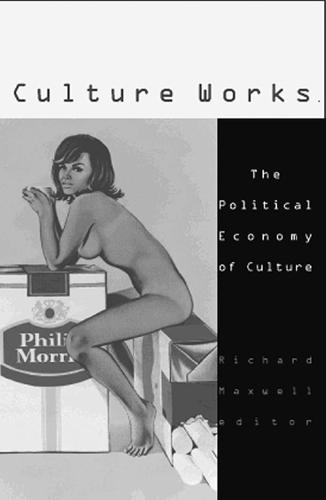
Culture works: the political economy of culture
by
Richard Maxwell
Published 15 Jan 2001
For example, in order to maintain its position as the Olympic network, the National Broadcasting Corporation (NBC) invested $3.55 billion for television rights to the three Summer and two Winter Olympiads between 2000 and 2008.35 Broadcast rights for the Super Bowl also represent a significant part of the shared $17.6 billion eight-year contract signed by the NFL and ABC/ESPN, CBS, and Fox in 1998. Having 137 David L. A n d r e w s effectively purchased the American population’s sporting attention, it is subsequently leased for exorbitant sums to corporate advertisers. Jon Mandel of Grey Advertising noted that “When you think that virtually half the country’s watching the Super Bowl . . . this makes a hell of a statement.”36 Mandel was referring to Super Bowl 22 in 1997, which tied for the thirdmost-watched television show in U.S. history.
…
At its zenith, the “Wintel” monopoly so dominated that the two companies claimed half the profits of the entire PC industry, reducing PC makers to what one journalist called “a value-added reseller for Intel and Microsoft.”28 Wintel’s dominance cannot be attributed simply to consumer choice or technological superiority. Both companies gained their footholds in the PC market when IBM chose them to supply the microprocessor and operating system for its PCs in the early 1980s. By undercutting prices for the rival Macintosh computer, IBM (and the low-cost PC clone makers that followed it) grabbed the bulk of the market for business PCs. Throughout the 1980s, Apple offered a more user-friendly graphical interface than Microsoft, and at several points Intel’s competitors offered faster chips.29 But the large installed base of Wintel users created growing network effects, whereby the greater the number of users of a communication technology, the more valuable it becomes to each of them, because users can share information with more people.
…
For TV and radio, sport gets consumers in front of their sets to hear and see commercials; in effect, TV and radio rent their viewers’ and listeners’ attention.”32 Despite recent declines in television ratings caused by an ever-fragmenting media culture, sporting “mega-events”33—such as the Super Bowl, the Olympic Games, the NBA Finals, the MLB World Series, and the FIFA World Cup Final—continue to represent some of a dwindling number of collective media experiences that provide a thread of commonality (regardless of how ephemeral) in the life of a nation. For instance, of the ten largest audiences for shows on American television, nine have been sport-related: seven involved Super Bowl programming, and two were of coverage of the 1994 Winter Olympics (the Nancy Kerrigan and Tonya Harding skate-off ).

Surveillance Valley: The Rise of the Military-Digital Complex
by
Yasha Levine
Published 6 Feb 2018
That same year, Apple Computer released its “1984” ad for the Macintosh. Directed by Ridley Scott, who had just wowed audiences with the dystopian hit Blade Runner, and aired during the Super Bowl, Apple’s message could not have been more clear: forget what you know about IBM or corporate mainframes or military computer systems. With Apple at the helm, personal computers are the opposite of what they used to be: they are not about domination and control but about individual rebellion and empowerment. “In a striking departure from the direct, buy-this-product approach of most American corporations, Apple Computer introduced its new line of personal computers with the provocative claim that Macintosh would help save the world from the lockstep society of George Orwell’s novel,” reported the New York Times.36 Interestingly, the paper pointed out that the “1984” ad had grown out of another campaign that the company had abandoned but that had explicitly talked about the ability to misuse computers.
…
In the mid-1980s, while Stephen Wolff was planning the NSFNET upgrade, the United States was in the grips of two closely related computer technology booms: the explosion of cheap personal computers and easy access to computer networking. First, IBM released a powerful personal computer and licensed the design so that any computer manufacturer could make compatible IBM computer components. A few years later, in 1984, Apple released the Macintosh, complete with a graphical user interface and mouse. Microsoft’s text-based DOS operating system for IBM computers was followed by a crude version of Windows. Computers were suddenly easy to use and affordable. It wasn’t just giant corporations, big universities, and government and military agencies anymore—smaller businesses and geeky middle-class early adopters could all get their own systems.
…
“In a striking departure from the direct, buy-this-product approach of most American corporations, Apple Computer introduced its new line of personal computers with the provocative claim that Macintosh would help save the world from the lockstep society of George Orwell’s novel,” reported the New York Times.36 Interestingly, the paper pointed out that the “1984” ad had grown out of another campaign that the company had abandoned but that had explicitly talked about the ability to misuse computers. A draft of that campaign read: “True enough, there are monster computers lurking in big business and big government that know everything from what motels you’ve stayed at to how much money you have in the bank. But at Apple we’re trying to balance the scales by giving individuals the kind of computer power once reserved for corporations.”
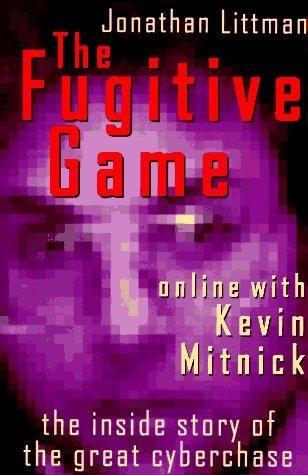
The Fugitive Game: Online With Kevin Mitnick
by
Jonathan Littman
Published 1 Jan 1996
That there may have been other people involved in the attack on Shimomura. ■ ■ ■ "Mr. Jon," Kevin Mitnick welcomes me hours later and we chat briefly about the Super Bowl. He enjoyed the commercials, particularly the one with the computerized frogs croaking "Bud-weis-er" in sequence. I can hear the first rumblings of a Mitnick belly laugh. "I was thinking of getting in the P link [one of AT&T's satellite phone links] and sending, "Hi, Shimomura, die with honor [broadcasting it worldwide to hundreds of millions of Super Bowl viewers]." Then, suddenly, Mitnick is pissed. "I read that shit [Markoff's Times profile of Shimomura]. He said now he considers it a matter of honor....
…
It's not what countless articles in newspapers and magazines say. It's not even what John Markoff used to say. Every cyberspace journalist worth his memory chips knows security on the Internet is an illusion, and always has been. The Internet is about as safe as a convenience store in East L.A. on Saturday night. January 29,1995 It's Super Bowl Sunday, a couple of hours before kickoff, and though I'm not a big football fan, I plan on watching the San Francisco 49ers demolish the San Diego Chargers. I pick up the phone, thinking it's my friend, the one who's supposed to bring the guacamole, but instead it's Kevin Mitnick. It's been six days since his last call.
…
He pauses a moment and then coolly orders, "Stand by. There's some movement here. . . ." Have they already trapped and traced the call? Is the FBI moving in for the bust? Should I hang up? "It was nothing," Eric deadpans a few seconds later. I've climbed the steep steps to my cluttered attic office, switched on the lamp, and booted up my Macintosh. I'm in my pajamas. "So how badly do the feds want you?" "I think they don't care. Schindler probably does, but I think he realizes he's got a can of worms on his hands if he finds me. I'm one of the few defendants that has ever had extensive personal phone calls with Schindler. We've been very much on a first-name basis for some time.
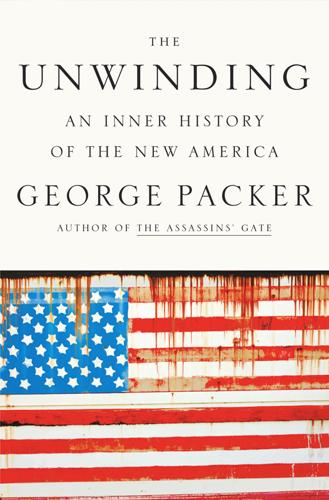
The Unwinding: An Inner History of the New America
by
George Packer
Published 4 Mar 2014
“Biden was like a cult figure to me,” Connaughton said much later. “He was the guy I was going to follow because he was my horse. I was going to ride that horse into the White House. That was going to be my next stop in life. I had done Wall Street, and I was going to do the White House next.” 1984 On January 24, Apple Computer will introduce Macintosh. And you’ll see why 1984 won’t be like 1984.… BANK SECURITIES UNITS MAY UNDERWRITE BONDS … It’s morning again in America, and under the leadership of President Reagan, our country is prouder and stronger and better. Why would we ever want to return to where we were less than four short years ago?
…
Between the midseventies and the early nineties, the personal computer had spawned countless hardware and software companies in Silicon Valley, and in other high-tech centers around the country; during the seventies and eighties the population of San Jose doubled, approaching a million, and by 1994 there were 315 public companies in the Valley. But none of the newer ones had been as important as Hewlett-Packard, Intel, or Apple. In the years since the Macintosh, the computer industry had seen more consolidation than innovation, and the undisputed winner was in Seattle. The most important Silicon Valley company to come along since Apple was originally called Mosaic, started in 1994 by Jim Clark, a former Stanford professor and founder of Silicon Graphics, and Marc Andreessen, a University of Illinois graduate who, at twenty-two, had just the year before developed the first graphical browser for the World Wide Web.
…
That was what the 1982 book Megatrends said—Tampa would be one of ten “new cities of great opportunity,” all of them in the Sunbelt—and in 1985 the Chamber of Commerce decided to aim higher than the city’s hedonistic motto from the seventies, which had been “Tampa: Where the good life gets better every day,” and replaced it with “America’s Next Great City.” The words appeared on billboards, bumper stickers, and T-shirts, and who could doubt that they would prove true when Tampa had a new international airport, it had the 1984 Super Bowl, it had the NFL Buccaneers, it had the eleven million square feet of the Westshore business and shopping district, it had sunshine and beaches, and it was growing as fast as anywhere in the country? Fifty million new people came to Florida every year, and since the sunshine and beaches weren’t going anywhere, Tampa would continue to grow, and by growing, become great.
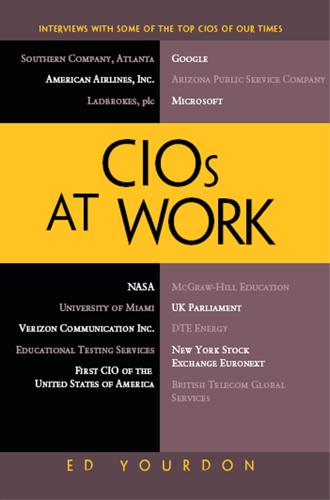
CIOs at Work
by
Ed Yourdon
Published 19 Jul 2011
Index A AdKnow ledge, Inc., 87 Agile development methodology, 62 Amazon, 314, 319 America COMPETES Act, 304 American Airlines, 47, 72 American Defense Department, 84 American Marketing Society, 113 American Production Inventory Control Society, 211 Ames, 320 AMR Corp, 47 Android, 43 Annapolis, 340 Apple, 97, 101, 217, 242, 295 Computer, 35 Genius Bar, 8 Archipelago Holdings Inc., 87 Arizona Public Service (APS) Company, 66, 211, 223 Arizona State University, 227 ARPANET, 19, 117, 135 Art of Computer Programming, 2 Atlanta-based Southern Company, 191 AT&T, 191, 249 B Ballmer, Steve, 39 Bank of Boston, 47 Baylor-Grapevine Board of Trustees, 47 Bedrock foundation, 249 Bell Atlantic Mobile, 231 Bell Labs, 2, 249 BlackBerry, 60, 96, 116, 121, 171, 184, 246, 261, 296, 317 Blalock, Becky, 182, 191, 215 adaptability, 192 Air Force brat, 191, 192 Atlanta-based Southern Company, 191 banking industry, 203 Boucher, Marie, 196 brainstorm, 202 24/7 business, 199 business intelligence, 204 cloud computing, 205 cognitive surplus, 206 cognitive time, 206 Coker, Dave, 196 communication and education, 200 Community and Economic Development, 194 consumer market, 202 cybersecurity, 207, 209 data analytics, 204, 205 disaster recovery, 209 distributed generation, 204 distribution organization, 201 Egypt revolution, 198 farming technology, 206 finance backgrounds/marketing, 200, 209 Franklin, Alan, 193 Georgia Power, 191 Georgia Power Management Council, 193 global society, 206 Google, 198 incredible technology, 195 Industrial Age, 206 Information Age, 206 InformationWeek's, 196 infrastructure, 202 intellectual property, 196 intelligence and redundancy, 207 Internet, 198, 206 leapfrog innovations, 205 mainframe system, 207 marketing and customer service, 193, 200 MBA, finance, 192 microfiche, 207 microwave tower, 207 mobile devices, 203 mobility and business analytics, 205 Moore's Law, 205 new generation digital natives, 197 flexible and adaptable, 199 innovation and creativity, 199 superficial fashion, 198 Olympic sponsor, 193 out pushing technology, 202 reinforcement, 201 sense of integrity, 200 Southern Company, 194, 198, 201, 207 teamwork survey, 201 technology lab, 202 undergraduate degree, marketing, 192 virtualization, 205 VRU, 203 Ward, Eileen, 196 wire business, 201 world-class customer service, 203 Bohlen, Ken, 211 American Production Inventory Control Society, 211 Apple, 217 APS, 211, 223 ASU, 227 benchmarking company, 216 chief innovation officer, 229 Citrix, 217 cloud computing, 218, 219 cognitive surplus, 220 DECnet, 212 Department of Defense, 222 distributed computing, 217 energy industry, 214 gizmo/whiz-bang show, 216 GoodLink, 217 hard-line manufacturing, 218 home computing, 219 home entertainment, 219 Honeywell, 219 HR generalists, 215 information technology department, 211 Intel machines, 217 John Deere, 213 just say yes program, 223 Lean Six Sigma improvement process, 211 Linux, 220 MBA program, 214 mentors, 213 national alerts, 224 North American universities, 228 paradigm shifts, 218, 220 PDP minicomputers, 212 Peopleware, 226 prefigurative culture, 221 R&D companies, 218 Rhode Island, 226 role models, 213 San Diego Fire Department, 224 security/privacy issues, 217 skip levels, 223 smart home concepts, 219 smartphone, 217 social media, 225 Stead, Jerry, 214 Stevie Award, 211 Storefront engineering, 212 traditional management, 219, 226 Twitter, 224 vocabulary, 221 Waterloo operations, 213 Web 2.0 companies, 227 Web infrastructure, 215 wikipedia, 220 Y2K, 222 Botnets, 23 Brian's and Rob Pike's, 2 Bristol-Myers Squibb, 33 Broadband networks, 241 Brown, 227 Bryant, 227 BT Global Services, 253 BT Innovate & Design (BTI&D), 253 Bumblebee tuna, 130 C Career writing technology, 67 CASE tools, 232 Cash, Jim, 50 Christensen, Clyde, 212 Chrome, 14, 18 Chrysler Corporation, 175 Citibank, 337 Citicorp, 313 Citrix, 217 Client-server-type applications, 59 Cloud computing, 218, 219, 239, 240, 261, 262, 310, 311, 313 Cloud technology, 62 CNN, 54 COBOL, 250 Cognitive surplus, 20, 79, 206, 291 College of Engineering, University of Miami, 113 Columbia University, 1 Community and Economic Development, 194 Computer Sciences Corporation, 35 Computerworld magazine, 196 Consumer-oriented technology, 22 Content management system, 133 Corporate information management (CIM) program, 309 Corporate Management Information Systems, 87 Corvus disk drive, 36 Customer Advisory Boards of Oracle, 191 Customer-relationship management (CRM), 56 Cutter Business Technology Council, 173 D Dallas Children's Medical Center Development Board, 48 DARPA, 19 DDoS attacks and security, 81 DECnet, 212 Dell Platinum Council, 113 DeMarco, Tom, 16, 226 Department of Defense, 222, 329, 332 Detroit Energy, 252 Digital books, 30 Digital Equipment, 48 Distributed computing, 217 Dodge, 189 Dogfooding, 11, 37, 38, 236 DTE Energy, 173 DuPont Dow Elastomers, 151 E Educational Testing Service (ETS), 151 E-government, 282, 285 Electrical distribution grid, 182 Elementary and Secondary Education Strategic Business Unit, 151 Elements of Programming Style, 2 Ellyn, Lynne, 173 advanced technology software planning, 175 Amazon, 184 artificial intelligence group, 175 Association for Women in Computing, 173 benchmark, 180, 181 BlackBerries, 184 Burns, Ursula, 175 Chrysler, 176 Cisco, 186 cloud computing, 183, 184 component-based architecture, 186 corporate communications customer service, 185 Crain's Detroit Business, 173 cyber security threats, 177 degree of competence, 187 diversity and sophistication, 182 DTE Energy, 173 energy trading, 176 engineering and science programs, 188 enterprise business systems policy, 186 executive MBA program, 176 Facebook, 185 fresh-out-of-the-university, 187 General Electric, 174 Google, 184 Grace Hopper, 174 grid re-automation, 182 Henry Ford Hospital, 174 internal social media, 185 International Coaching Federation, 178 iPads, 184 IP electrical grids, 182 iPod applications, 182 IT budgets, 186 IT responsibilities, 176 Java, 186 level of sophistication, 179 lobbying efforts, 181 medical computing, 175 Miller, Joan, 174 Mulcahey, Anne, 175 Netscape, 175 neuroscience leadership, 189 object-oriented programming, 186 Oracle, 186 peer-level people, 179 people system, 177 policies and strategies, 180 Radio Shack, 180 remote access capacity, 189 security tool and patch, 183 sense of community, 180 Shipley, Jim, 174 smart grid, 177, 182 smart meters, 182 smart phone applications, 183 swarming, 179 technical competence, 178, 179 Thomas, Marlo, 174 Twitter, 185 UNITE, 181 vendor community, 186 virtualization, 183, 184 Xerox, 175 E-mail, 9 Employee-relationship management (ERM), 56 Encyclopedia, 115 Encyclopedia Britannica, 292 ERP, 123 F Facebook, 244 Ellyn, Lynne, 185 Sridhara, Mittu, 73, 84 Temares, Lewis, 116, 121, 131 Wakeman, Dan, 169 Federal information technology investments, 299 Flex, 236 Ford, 102 Ford, Monte, 47 agile computing, 59 agile development, 62, 66 airplanes, 51 American Airlines, 47 Arizona Public Services, 66 Bank of Boston, 47 Baylor-Grapevine Board of Trustees, 47 BlackBerry, 60 board of Chubb, 51 board of Tandy, 51 business organizations, 63 business school, dean, 50 career writing technology, 67 client-server-type applications, 59 cloud technology, 62 CNN, 54 common-sense functionality, 49 consumer-based technology, 60 CRM, 56 Dallas Children's Medical Center Development Board, 48 Digital Equipment, 48 ERM, 56 financial expert, 69 frequent-flier program, 57 frontal lobotomy, 57 Harvard Business Review, 50 HR policies, 65 IBM, 48 information technology, 47, 52 Internet, 54 Internet-based protocol, 59 iPhone, 52 IT stuff, 58 Knight Ridder, 51 legacy apps, 59 mainframe-like applications, 59 management training program, 64 marketing and technical jobs, 48 Maynard, Massachusetts mill, 48 MBA program, 50 mentors, 49 Microsoft, 50 mobile computing, 62 New York Times, 53 operations center, 54 PDP-5, 49 PDP-6, 49 Radio Shack, 51 revenue management, 57 role models, 49 security paradigms, 62 self-service machine, 57 Silicon Valley companies, 68 smartphones, 54 social networking, 51, 53, 56, 58 stateful applications, 59 techie department, 48 The Associates First Capital Corporation, 47 transmission and distribution companies, 47 wireless network, 59 YouTube, 65 Fort Worth, 226 Free software foundation, 19 Fried, Benjamin, 1, 241 agile development, 25 agile methodologies, 26 Apple Genius Bar, 8 ARPANET, 19 Art of Computer Programming, 2 Bell Labs, 2 books and records, accuracy, 25 botnets, 23 Brian's and Rob Pike's, 2 cash-like principles, 29 CFO, 4 check writers, 18 chrome, 14, 18 classic computer science text, 1 cognitive surplus, 20 Columbia University, 1 compensation management, 7 competitive advantage, 9, 18 computer science degree, 1 computer scientists, 6 consumer-driven computing, 12 consumer-driven software-as-a-service offerings, 12 consumer-driven technology, 12 consumer-oriented technology, 14, 22 corporate leadership, 25 cost centers, 4 DARPA, 19 decision makers, 17 decision making, 13 360-degree performance management, 7 detroit energy, 30 digital books, 30 document workbench, 2 dogfooding, 11 e-books, 29 Elements of Programming Style, 2 e-mail, 9 end-user support, 7 engineering executive group, 4 European vendors, 6 file servers and print servers, 17 Folger Library editions, 30 free software foundation, 19 German company, 13 German engineering, 13 Gmail, 15 Godot, 26 Google, 1 books, 29 products, 5, 10 software engineers, 6 hiring managers, 6 HR processes and technologies, 6 IBM model, 13 instant messaging, 9 Internet age, 6 interviewers, training, 6 iPad, 29 iPhone, 29 IPO, 3 IT, engineering and computer science parts, 4 Knuth's books, 2 Linux machine, 8 Linux software, 19 machine running Windows, 8 Macintosh, 8 Mac OS, 9 macro factors, 11 Managing Director, 1 mentors, 1 microcomputers, 18 Microsoft, 5 Minds for Sale, 20 Morgan Stanley, 1–3, 5, 16 nonacademic UNIX license, 2 nontechnical skills, 5 oil exploration office, 17 open-source phone operating system, 20 outlook, 15 PARC, 19 performance review cycles, 7 personal computer equipment, 15 post-Sarbanes-Oxley world, 25 project manager, 13 quants, 24 rapid-release cycle, 26 R&D cycle, 24 regression testing, 27 role models, 1 shrink-wrapped software, 14 signature-based anti-virus, 22 smartphone, 20, 27 social contract, 8 society trails technology, 21 software engineering tool, 13 software installation, 14 supply chain and inventory and asset management, 10 SVP, 4 telephony, 17 ten things, 13 TMRC, 19 TROFF, 2 typesetter workbench, 2 UI designer, 14 university computing center, 28 videoconferencing, 12 Visicalc, 24 Wall Street, 23 Walmart, 6 waterfall approach, 25 XYZ widget company, 5 YouTube video, 20 G Gates, Bill, 39, 50 General Electric, 134 General Foods, 309, 326–328 General Motors, 33, 321, 329, 332 George Mason School of Information Technology, 309 Georgia Power Company, 191–193, 196 Georgia Power Management Council, 193 German company, 13 German engineering, 13 German manufacturing company, 232 Gizmo/whiz-bang show, 216 Gmail, 15 GoodLink, 217 Google, 1, 84, 85, 117, 217, 219, 220, 222, 235, 241, 263, 302, 319 apps, 314 books, 29 commercial products, 10 model, 293 Government Accountability Office (GAO), 305 4G program, 250 4G smartphone, 235 GTE, 231 Gupta, Ashish aspiration, organization, 256 bandwidth and network infrastructure, 267 BlackBerry, 261 business and customer outcomes, 274 capital investment forums, 269 career progression, 255 cloud-based shared infrastructure model, 263 cloud computing, 261, 262 collaboration, 272 communications infrastructure, 258 compute-utility-based model, 262 control and integrity, 268 core competency, 255 core network infrastructure, 267 core strengths, 256 cost per unit of bandwidth, 267 customer demands, 268 data protection, 261, 262 decision-making bodies, 269 demographics, 272, 273 device convergence, 263 dogfooding, 259 employee flexibility, 260, 264 engagement and governance, 269 enterprise market segment, 261 equipment management, 260 executive MBA, 256 fourth-generation LTE networks, 267 functional service departments, 270 Global Services, distributed organization, 257 Google, 263, 275 Google Apps, 266 handheld devices, 265 hastily formed networks, 258 IMF, 266 innovation and application development, 265 iPad, 257, 260, 261, 266,267 iPhone, 266 Japan, 257, 258 London Business School, 253 management functions, 257 management sales functions, 257 market segments, 259 MBA, General Management, 253 measurements, 271 messaging with voice capability, 264 mini-microcomputer model, 261 mobile communications network, 258 mobile-enabling voice, 259 mobile phone network, 260 mobile traffic explosion, 265 network infrastructures, 265 network IT services, 254 network quality, 257 new generation digital natives, 271 disadvantages, 273 Google, 273 opportunities, 273 Olympics, 263 opportunities, 275 organizational construct, 272 outsourced network IT services, 259 outsourcing, 271 per-use-based model, 262 portfolio and business alignment, 274 Portfolio & Service Design (P&SD), 253 primary marketing thrust, 264 product development thrust, 264 product management team, 259 project and program management, 255 resource balance, 270 scalability, 262 security, 262 Selley, Clive, 254, 255 service delivery organization, 254 single-device model, 264 smart devices, 267 smart phones, 266 telecommunications capability, 259 upward-based apps, 264 virtualization, 261 voice-over-IP connections, 258 Windows platform, 261 Gurnani, Roger, 231 accounting/finance department, 233 analog cellular networks, 250 AT&T, 249 bedrock foundation, 249 Bell Atlantic Mobile, 231 Bell Labs, 249 blogs, 244 broadband networks, 241 business benefits, 237 business device, 240 business executives, 238 business leaders, 248, 249 business relationship management, 248 buzzword, 239 CASE tools, 232 cloud computing, 239, 240 COBOL, 250 consumer and business products, 231 consumer electronics devices, 241 consumer telecom business, 233 customer-engagement channel, 244 customer forums, 244 customer support operations, 251 customer-touching channels, 236 degree of control, 246 distribution channel, 250 dogfooding, 236 ecosystem, 243, 249 enterprise business, 233 ERP systems, 236 face-to-face communications, 244 FiOS product, 235 flex, 236 "follow the sun" model, 239 German manufacturing company, 232 4G program, 250 4G smartphone, 235 hardware/software vendors, 247 information assets, 245 information technology strategy, 231 intellectual property rights, 244 Internet, 235, 239 iPhone, 243 Ivan, 232 Lowell, 232 LTE technology-based smartphone, 235 marketing, 251 MIT, 246 mobile technology, 234 Moore's law, 242 MP3 file, 235 network-based services, 240 Nynex Mobile, 233 P&L responsibility, 251 PDA, 238 personal computing, 235 product development, 234, 251 role models, 232 sales channels, 251 smartphones, 238 state-level regulatory issues, 251 state-of-the-art networks, 243 telecom career, 232 telephone company, Phoenix, 234 Verizon Communication, 231, 232 virtual corporations, 241 Web 2.0, 244 Williams Companies, 232, 233 WillTell, 233 wireless business, 233 H Hackers, 19 Harmon, Jay, 213 Harvard Business Review, 50 Harvard Business School, 331 Heller, Martha, 171 Henry Ford Hospital, 174 Hewlett-Packard piece, 129 Home computing, 219 Honda, 102 Honeywell, 219 Houghton Mifflin, 134, 136 I IBM, 48, 250 manpower, 311 model, 13 Indian IT outsourcing company, 255 Information technology, 52 Intel machines, 217 International Coaching Federation, 178 Internet, 9, 44, 54, 117, 235, 239, 316, 322 Internet-based protocol, 59 Interoperability, 341 iPads, 2, 94, 97, 184, 257, 260, 264, 267, 288, 289, 295, 296 IP electrical grids, 182 iPhones, 43, 52, 96, 101, 170, 181, 260, 264,296 iPod, 101 IT lifecycle management process, 37 Ivan, 232 J John Deere, 213 K Kansas, 226 Kernigan, Brian, 2 Knight Ridder, 51 Knuth, Donald, 2, 29 Kraft Foods Inc, 309 Krist, Nicholas, 28 Kundra, Vivek Clever Commute, 305 cognitive surplus, 303 command and control systems, 301 consumerization, 302 consumption-based model, 300 cyber-warfare, 301 Darwinian pressure, 302 desktop core configuration, 306 digital-borne content, 301 digital oil, 300, 307 digital public square, 304 enterprise software, 303 entrepreneurial startup model, 306 frugal engineering, 306 Google, 302 government business, 302 innovator's dilemma, 307 iPad, 302 IT dashboard, 302 leapfrog technology, 306 massive consumerization, 301 megatrends, 301 parameter security, 302 Patent Office, 305 pharmaceutical industry, 304 phishing attacks, 301 policy and strategic planning, 299 security and privacy, 301 server utilization, 300 social media and technology, 300, 306 storage utilization, 300 Trademark Office, 305 Wikipedia, 303 L LAN, 259 Lean Six Sigma improvement process, 211 Levy, Steven (Hackers), 19 Linux, 220 machine, 8 open-source software, 19 Lister, Tim, 226 London Business School, 73, 253, 256 Long-term evolution (LTE), 235 Lowell, 232 M MacArthur's intelligence officer, 327 Macintosh, 8 Mainframe computers, 118 Mainframe-like applications, 59 Marriott's Great America, 35 McDade, 327 McGraw-Hill Education, 133, 147, 150 Mead, Margaret, 221 Mendel, 311 Microcomputers, 18 Microsoft Corporation, 5, 11, 33, 36, 38, 41, 44, 46, 50, 156, 217, 223, 236, 250, 293 Microsoft Higher Education Advisory Group, 113 Microsoft's operational enterprise risk management, 33 Middlesex University, 189 Miller, Joan Apple products, 295 authority and accuracy, 292 award-winning ICT programs and services, 277 back locked-down information, 289 big-scale text issues, 294 big-time computing, 279 BlackBerry, 296 business management training, 281 business skills, 281 central government, 283 cognitive surplus, 291 community care project, 278 community development programs, 277, 278 computers, constituency office, 294 confidential information, 284 data management, 281 decision making, 286 democratic process, 288 economics degree, 278 e-government, 282, 285 electronic communication, 289 electronic-enabled public voice, 286 electronic information, 288 electronic media, 286 electronic records, 280, 284 electronic services, 294 e-mail, 289, 290, 295 forgiving technology, 296 front-office service, 282, 283 Google, 292 Google's cloud service, 290 Government 2, 287 Health and Social Care, 284 House business, 294 House of Lords, 288 ICT strategy, 289, 290 information management, 278 insurance company, 278 Internet information, 285 iPad, 288, 289, 296 IT data management, 279 management principle, 280 local government, 283 mainframe environment, 289 member-led activity, 287 messages, 289 Microsoft, 293 Microsoft's cloud service, 290 mobile electronic information, 284 mobile technology, 289 national organization, 284 network perimeters, 290 official government information, 285 on-the-job training, 281 organizational planning, 278 Parliamentary ICT, 277 project management, 279 public sector, 282 public transportation, 285 quango-type organizations, 283 representational democracy, 286 security, 290, 291 social care organization, 279 social care services, Essex, 278 social care systems, 284 social networking, 285 sovereignty, 291 sustainability and growth, 293 technical language, 294 technology skills, 281 transactional services, 285 transferability, 291 Web-based services, 285 Wikipedia, 291, 292 X-factor, 286 Minds for Sale, 20 Mitchell & Co, 333 MIT Media Labs, 149 Mobile computing, 62 Mobile technology, 234 Mooney, Mark, 133 artificial intelligence, 134 back-office legacy, 136 balancing standpoint, 145 BBC, 140 Bermuda Triangle, 135 BlackBerry shop, 142 Bureau of National Standards, 136 business model, 140 career spectrum, 144 cloud computing, 148 competitive intelligence and knowledge, 143 Connect, 141 customer-facing and product development, 135 customer-facing product space, 137 customer space and product development, 136 digital products development, 144 digital space and product, 146 educational and reference content, 139 educational products, 141 entrepreneur, 150 General Electric, 134 GradeGuru, 140 handheld devices, 142 hard-core technical standpoint, 146 hardware servers, 142 Houghton Mifflin, 134, 136 HTML, 138 industrial-strength product, 141 intellectual content, 148 Internet, 148 iPad, 138, 139, 142 iPhone, 142, 143 iTunes, 138 Klein, Joel, 147 learning management systems, 137 long-term production system, 141 Marine Corps, 134 McGraw-Hill Education, 133, 147 media development, 144 media space, 138, 142 mobile computing, 139 MOUSE, 150 online technology, 138 open-source capabilities, 142 Oracle quota-management system, 143 people's roles and responsibilities, 137 Phoenix, 149 product development, 149 publishing companies, 142 publishing systems, 137 Reed Elsevier, 133, 136 Salesforce.com, 144, 149 scalability testing, 145 senior business leaders, 146 social network, 148 soft discipline guidelines, 141 solar energy, 149 Strassmann, Paul, 135 technical skill set, 143, 144 testing systems integration, 145 The Shallows, 139 transactional systems, 142 trust and integrity, 145 TTS, QuickPro, and ACL, 144 Vivendi Universal, 134 War and Peace today, 139 Moore's law, 242 Morgan Stanley, 2, 3, 16 N NASA, 309, 333, 334 National Institute of Standards and Technology (NIST), 173 Naval Postgraduate School, 134 Netscape, 175 New Brunswick model, 282 News Corp., 147 New York Stock Exchange (NYSE), 87, 116, 223, 278 New York Times, 53 North American universities, 228 NSA/CIA software, 134 Nynex Mobile, 233 O Oil exploration office, 17 Open-source phone operating system, 20 Outlook, 15 P Pacer Software, 135 Paradigm shifts, 218, 220 Parks and Recreation Department, 126 PDP minicomputers, 212 Peopleware, 226 Personal computing, 235 Personal digital assistant (PDA), 238 Petri dish, 44 Phoenix, 211 Plauger, Bill, 2 Q Quants, 24 R Radio Shack, 51 Reed Elsevier, 133, 136 Reed, John, 335 Rubinow, Steve, 87 AdKnowledge, Inc., 87 agile development, 110 Agile Manifesto, 110 Archipelago Holdings Inc., 87 attributes, 108 capital market community, 91 cash/actual trading business, 88 channel marketing departments, 92 cloud computing, 97 CNBC, 89 collaborative technology, 95 collective intelligence, 95 communication skills, 102, 106 conference organizations, 99 consumer marketplace, 94 data center, 90 decision making, 105, 108 economy standpoint, 100 e-mail, 100 Fidelity Investments, 105 financial services, 92 IEEE, 101 innovative impression, 94 Internet, 98 iPad, 97 iPod device, 91 labor laws, 110 listening skills, 106 logical progression, 104 Mac, 96 mainframe, 104 management and leadership, 104, 105 market data system, 89 micro-second response time, 89 mobile applications, 94 multidisciplinary approach, 103 multimedia, 97 multi-national projects, 110 multiprocessing options, 99 network operating system, 103 NYSE Euronext, 87 open outside system, 88 parallel programming models, 99 personal satisfaction, 109 PR function, 106 proclaimed workaholic, 109 real estate business, 88 regulatory and security standpoint, 96 Rolodex, 94 Rubin, Howard, 99 server department, 97 software development, 89 sophisticated technology, 101 technology business, 88 technology integration, 91 trading engines, 90 typewriter ribbon, 94 virtualization, 98 Windows 7, 96 younger generation video games, 93 visual interfaces, 93 Rumsfeld, Donald, 222 S San Diego Fire Department, 224 Santa Clara University, 36 SAS programs, 131 Scott, Tony, 10, 33, 236 Android, 43 Apple Computer, 35 architectural flaw, 44 BASIC and Pascal, 35 Bristol-Myers Squibb, 33 Bunch, Rick (role model), 34 business groups, 42 COO, 39 Corporate Vice President, 33 Corvus disk drive, 36 CSC, 35 Defense department, 45 dogfooding, 37, 38 games and arcades, 35 General Motors, 33 IBM's role, 37 information systems management, 36 integrity factor, 40 Internet, 44 iPhone, 43 IT lifecycle management process, 37 leadership capability, 40 leisure studies, 34 macro-architectural threats, 44 Marriott's Great America, 35 math models, 36 Microsoft Corporation, 33, 36, 38, 41, 44, 46 Microsoft's operational enterprise risk management, 33 parks and recreation, 34 Petri dish, 44 playground leader, 42 product groups, 42 quality and business excellence team, 33 Santa Clara University, 36 Senior Vice President, 33 smartphone, 43 social computing, 38 Sun Microsystems, 36 theme park industry, 35 University of Illinois, 34 University of San Francisco, 36 value-added business, 33 Walt Disney Company, 33 Senior Leadership Technology and Product Marketing, 71 Shakespeare, 30 Shirky, Clay, 220 Sierra Ventures, 191 Silicon Valley companies, 68 Silicon Valley software factories, 323 Skype, 118 Smart Grid Advisory Committee, 177 Smartphones, 20, 27, 43, 54, 217, 238 Social care computer electronic record system, 279 Social computing, 38, 320 Social networking, 51, 53, 56, 58 Society trails technology, 21 SPSS programs, 131 Sridhara, Mittu, 71 Amazon, 76 American Airlines, 72 back-end computation and presentation, 80 banking, 77 B2B and B2C, 85 business/product departments, 82 business work context, 74 buzzword, 77 career aspiration, 73 career spans, 73 coders, 72 cognitive surplus, 79 competitive differentiation, 74 computing power, 78 contribution and energy, 85 convergence, 75 CPU cycles, 78 cross-channel digital business, 71 cultural and geographic implementation, 72 customer experience, 84, 85 customer profile, 76 data visualization, 79, 80 DDoS protection, 81 economies of scale, 77 elements of technology, 72 encryption, 82 end customer, 83 entertainment, 75 ERP system, 72 Facebook, 84 finance and accounting, 73 foster innovation and open culture, 81 friends/mentors/role models, 74 FSA, 76 gambling acts, 81 games, 79 gaming machines, 80 GDS, 72 global organization, 71 Google, 75, 84, 85 Group CIO, Ladbrokes PLC, 71 industry-standard technologies, 77 integrity and competence, 83 IT, 74, 82 KickOff app, 71 land-based casinos, 79 live streaming, 78 London Business School, 73 mobile computing, 78 multimedia, 84 new generation, 84 on-the-job training, 73 open-source computing, 79 opportunity, 80, 83 PCA-compliant, 81 personalization, 76 real-time systems, 74 re-evaluation, 81 reliability and availability, 77 security threats, 80 smart mobile device, 75 technology-intense customer, 85 top-line revenue, 74 trader apps, 82 true context, 73 underpinning business process, 76 virtualization, 78 Visa/MasterCard transactions, 78 Web 3.0 business, 76 web-emerging web channel, 76 Wikipedia, 79, 85 Word documents and e-mail, 82 work-life balance, 84 young body with high miles, 72 Zuckerberg, Mark, 73 Stead, Jerry, 214 Storefront engineering, 212 Strassmann, Paul, 228, 309 agile development, 340 Amazon EC2, 314 America information processors, 322 Annapolis, 340 AT&T, 332 backstabbing culture, 339 BlackBerry, 317 block houses, 319 CFO/CEO position, 337 CIM program, 309 Citibank, 337 Citicorp, 313, 339 cloud computing, 310, 311, 313 coding infrastructure, 341 communication infrastructure, 341 corporate information management, 329 Corporate Information Officer, 309 counterintelligence, 320 cyber-operations, 338 Dell server, 314 Department of Defense, 329, 332 Director of Defense Information, 309 employee-owned technology, 316 enterprise architecture, 316 exfiltration, 313 financial organizations, 320 firewalls and antiviruses, 312 General Foods, 309, 326–328 General Motors, 321, 329, 332 George Mason School of Information Technology, 309 Google apps, 314 government-supported activities, 326 Harvard Business School, 331 HR-related issues, 331 IBM manpower, 311 infiltration, 313 Internet, 316, 322 interoperability, 315, 317, 341 Kraft Foods Inc, 309 MacArthur's intelligence officer, 327 Machiavellian view, 327 mash-up, 316 military service, 331 NASA, 309, 333, 334 police department, economics, 312 powerpoint slides, 324 Radio Shack, 319 senior executive position, 334 service-oriented architecture, 316 Silicon Valley software factories, 323 social computing, 320 Strassmann's concentration camp, 318 structured methodologies, 342 U.S.
…
I said, “We have large scale assessment programs that happen only once a year and I need a tremendous amount of computing power. You know what that computing power does the rest of the year?” Yourdon: Just gathers dust. Wakeman: Right, it does nothing but burn up electricity. Yourdon: Yeah. And it’s amazing how many situations there are like that. I think of the Oscars or the Olympics. Wakeman: Super Bowl. Yourdon: Super Bowl. Yeah. On and on and on. Christmas shopping season for most of the retail industry. Wakeman: Mm-hmm. Yourdon: Yeah, it is, it is amazing to think about it. In terms of futures, I’ve got a related kind of social question. This whole issue of the “digital nation,” the Gen X or Y or Z or whatever generation it is that’s grown up with computers, how do you see them impacting what you do here at ETS?
…
New York, NY Ed Yourdon June, 2011 Benjamin Fried CIO, Google Inc. Benjamin Fried is Chief Information Officer of Google Inc., overseeing the company’s global technology systems. His extensive hands-on experience in technology includes stints as a dBASE II programmer, front-line support manager, Macintosh developer, Windows 1.0 programmer, and UNIX systems programmer. Prior to joining Google, he spent more than 13 years in Morgan Stanley’s technology department, where he rose to the level of Managing Director. During his time there, he led teams responsible for software development technology, web and electronic commerce technologies and operations, and technologies for knowledge workers.
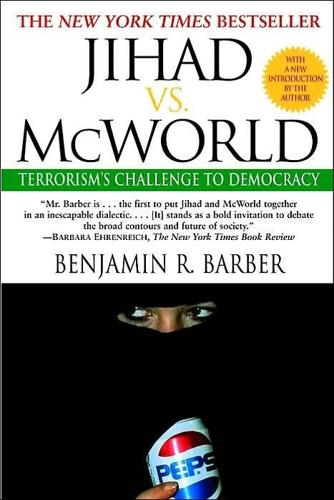
Jihad vs. McWorld: Terrorism's Challenge to Democracy
by
Benjamin Barber
Published 20 Apr 2010
Indeed, distinctions of every kind are fudged: ABC places its news and sports departments under a single corporate division; television newsmagazines blend into entertainment programs, creating new teletabloids that (in the new parlance) are reality-challenged; films parade corporate logos (for a price), presidents play themselves in films (President Ford in a television special), while dethroned governors (Cuomo and Richards) do Super Bowl commercials for snack food in which they joke about their electoral defeat, Hollywood stars run for office (Sonny Bono, no Ronald Reagan, was elected to Congress in 1994), and television pundits become practicing politicians (David Gergen and Pat Buchanan have crossed and recrossed the street to only mild chastisement from peers).
…
The first scenario rooted in race holds out the grim prospect of a retribalization of large swaths of humankind by war and bloodshed: a threatened balkanization of nation-states in which culture is pitted against culture, people against people, tribe against tribe, a Jihad in the name of a hundred narrowly conceived faiths against every kind of interdependence, every kind of artificial social cooperation and mutuality: against technology, against pop culture, and against integrated markets; against modernity itself as well as the future in which modernity issues. The second paints that future in shimmering pastels, a busy portrait of onrushing economic, technological, and ecological forces that demand integration and uniformity and that mesmerize peoples everywhere with fast music, fast computers, and fast food—MTV, Macintosh, and McDonald’s—pressing nations into one homogenous global theme park, one McWorld tied together by communications, information, entertainment, and commerce. Caught between Babel and Disneyland, the planet is falling precipitously apart and coming reluctantly together at the very same moment. Some stunned observers notice only Babel, complaining about the thousand newly sundered “peoples” who prefer to address their neighbors with sniper rifles and mortars; others—zealots in Disneyland—seize on futurological platitudes and the promise of virtuality, exclaiming “It’s a small world after all!”
…
It includes commercial banks where Japan has long since seized the advantage from America and Europe as well as entertainment companies where American global leadership is actually growing and seems secure well into the next century. Examining the service sector affords an opportunity to make good on my rhetorical amalgamation of McDonald’s, Macintosh, and MTV—fast food, computer software, and video—by showing how in this sector McWorld manufactures its own specially tailored twenty-first-century videology. When McDonald’s sells Dances with Wolves and Jurassic Park videos and sundry movie tie-ins in a vague celebration of multiculturalism or environmentalism or extinct reptile preservation, or hires Michael Jordan to link its products to celebrity sport, simple service to the body, I have suggested, is displaced by complex service to the soul.

Artificial Intelligence: A Guide for Thinking Humans
by
Melanie Mitchell
Published 14 Oct 2019
Li and her collaborators soon commenced collecting a deluge of images by using WordNet nouns as queries on image search engines such as Flickr and Google image search. However, if you’ve ever used an image search engine, you know that the results of a query are often far from perfect. For example, if you type “macintosh apple” into Google image search, you get photos not only of apples and Mac computers but also of apple-shaped candles, smartphones, bottles of apple wine, and any number of other nonrelevant items. Thus, Li and her colleagues had to have humans figure out which images were not actually illustrations of a given noun and get rid of them. At first, the humans who did this were mainly undergraduates.
…
Here is a sample item from the SQuAD test: PARAGRAPH: Peyton Manning became the first quarterback ever to lead two different teams to multiple Super Bowls. He is also the oldest quarterback ever to play in a Super Bowl at age 39. The past record was held by John Elway, who led the Broncos to victory in Super Bowl XXXIII at age 38 and is currently Denver’s Executive Vice President of Football Operations and General Manager. QUESTION: What is the name of the quarterback who was 38 in Super Bowl XXXIII? CORRECT ANSWER: John Elway. No reading between the lines or actual reasoning is necessary. Rather than reading comprehension, this task might be more accurately called answer extraction.
…
This addition causes a deep-learning question-answering system to give an incorrect answer:29 PARAGRAPH: Peyton Manning became the first quarterback ever to lead two different teams to multiple Super Bowls. He is also the oldest quarterback ever to play in a Super Bowl at age 39. The past record was held by John Elway, who led the Broncos to victory in Super Bowl XXXIII at age 38 and is currently Denver’s Executive Vice President of Football Operations and General Manager. Quarterback Jeff Dean had jersey number 37 in Champ Bowl XXXIV. QUESTION: What is the name of the quarterback who was 38 in Super Bowl XXXIII? PROGRAM’S ORIGINAL ANSWER: John Elway PROGRAM’S ANSWER TO MODIFIED PARAGRAPH: Jeff Dean It is important to note that all of these methods for fooling deep neural networks were developed by “white hat” practitioners—researchers who develop such potential attacks and publish them in the open literature for the purposes of making the research community aware of these vulnerabilities and pushing the community to develop defenses.

Think Like a Rocket Scientist: Simple Strategies You Can Use to Make Giant Leaps in Work and Life
by
Ozan Varol
Published 13 Apr 2020
The New England Patriots learned this lesson in the 2000 NFL draft.55 The draft is an annual spectacle where football teams pick new players for the upcoming season. Each team gets to select one player in each of the seven rounds. In the sixth round of the 2000 draft, the Patriots picked up a player who would go on to become one of the greatest quarterbacks of all time. Tom Brady would win six Super Bowls with the Patriots and pick up four Super Bowl Most Valuable Player awards—the most of any player in NFL history. Brady would be dubbed the “biggest steal” in the 2000 draft, and the Patriots leadership would be praised for its brilliant strategic maneuvering in scooping up a player of Brady’s caliber at the tail end of the draft.56 That’s one interpretation of the events.
…
Cork Gaines, “How the Patriots Pulled Off the Biggest Steal in NFL Draft History and Landed Future Hall of Famer Tom Brady,” Business Insider, September 10, 2015, www.businessinsider.com/patriots-tom-brady-draft-steal-2015-1. 57. Josh St. Clair, “Why Tom Brady Is So Good, According to Former NFL Quarterbacks,” Men’s Health, January 30, 2019, www.menshealth.com/entertainment/a26078069/tom-brady-super-bowl-2019-talent. 58. Derek Thompson, “Google X and the Science of Radical Creativity,” Atlantic, November 2017, www.theatlantic.com/magazine/archive/2017/11/x-google-moonshot-factory/540648. 59. Jack Brittain and Sim B. Sitkin, “Facts, Figures, and Organizational Decisions: Carter Racing and Quantitative Analysis in the Organizational Behavior Classroom,” Journal of Management Education 14, no. 1 (1990): 62–81, https://journals.sagepub.com/doi/abs/10.1177/105256298901400108. 60.
…
Larry Page and Sergey Brin adopted an idea from academia—the frequency of citations to an academic paper indicates its popularity—and applied it to the search engine to create Google. Steve Jobs famously borrowed from calligraphy to create multiple typefaces and proportionally spaced fonts on the Macintosh. Netflix cofounder Reed Hastings was inspired by the subscription model used at his gym: “You could pay $30 or $40 a month and work out as little or as much as you wanted.”71 Frustrated by the big late fees he had incurred for renting Apollo 13, Hastings decided to apply the same model to video rentals.

The Thank You Economy
by
Gary Vaynerchuk
Published 1 Jan 2010
That’s a thought most corporate execs are going to meet with about as much enthusiasm as Dwyane Wade would if he were suddenly faced with undeniable proof that basketball was dead and ice hockey was the only game left.* Yet let’s remember it wasn’t so long ago that the few people who owned home computers used them almost exclusively for word processing and video games. In 1984, you’d get stuffed in your locker for gloating over your new Apple Macintosh; in 2007 you could score a hot date by showing off your new iPhone. Culture changes, and business has to change with it or die. * * * Why I Speak in Absolutes Because if I give you an inch, you’ll run a mile with it. When I said in 1998, “You’re dead if you don’t put your business on the Internet and get in on ecommerce,” was that true?
…
Screw Phil Jackson—I could have won a few championships with Jordan, Shaq, and Kobe on my teams. Parcells is the greatest coach in history because he went to a rotten New York Giants team and won two Super Bowls; went to the New York Jets, who had won four games in two years, and in two short years got them within one game of the Super Bowl; went to the Patriots, who were one in fifteen, and took them to the Super Bowl; went to Dallas and made them a consistent playoffs contender; and then to Miami, where he coached the biggest turnaround in one season in NFL history. He wins through building team morale, hiring the right people, and instilling the right culture.
…
If you’re on a fabulous date, you don’t want the night to end, and you’re going to try to find any way you can to keep the conversation and connection going. Combining traditional and social media can allow you to do the same thing when talking to people about your brand. Denny’s, for example, had a great TV date with its customers during the 2010 Super Bowl. It ran three commercials announcing that for a few hours on the following Tuesday, you could come in for a free Grand Slam breakfast. The ads were funny and creative—chickens freaking out over how many eggs they were going to have to lay for the event—but what a missed opportunity to leverage all the people watching the ads with their laptops open in front of them!
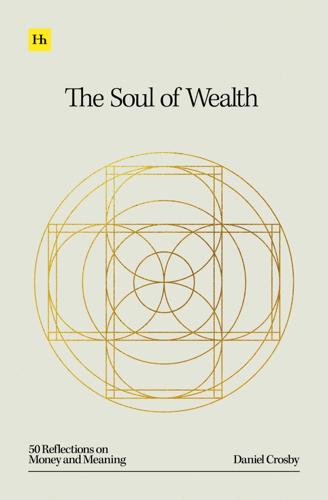
The Soul of Wealth
by
Daniel Crosby
Published 19 Sep 2024
Along the lines of “nobody goes broke taking a profit,” who could have waved a stern finger at Xerox for continuing to rake in cash flow from copy machines—an established and thriving industry? Where Xerox passed, young entrepreneurs such as Steve Jobs and Bill Gates seized the opportunity. Before long, Apple and Microsoft, among others, would duke it out and become the next generation’s tech giants. In a half-baked attempt to grab market share, the Xerox Star hit the market in 1981, but it was too late. The Macintosh and IBM’s PC had already established a commanding presence. Xerox simply waited too long for the right time to show up. The truth is, there probably was never that magic ideal moment. There was going to be risk either way: Jump in too early without a well-constructed plan, and new endeavors could flop in short order; but stand on the sidelines (as Xerox did), and the fast-moving market wouldn’t allow latecomers to find a foothold.
…
Catastrophizing involves irrational thoughts and fears of the future, leading us to fixate on worst-case scenarios, which mucks up our ability to act rationally in the present. There must have been some behavioral finance pros on the marketing team over at Hyundai. Not only did they have the guts to launch the strategy during the worst of the GFC, but they also paid up for pricey ads in the 2009 Super Bowl. The name itself felt like a warm blanket: the Assurance Program. Later in 2009, seven in ten Americans had a positive or neutral perception of the Hyundai brand. Shifting gears to personal finance, when we focus on what could go wrong, we can quickly veer off the right financial path. This sort of dwelling on the negative becomes cyclical, leading us to scarier and scarier places mentally, without a solution in sight.
…
The right design, higher-quality materials, the proper safety measures, and paying attention to warning signs may have averted the Boston Molasses tragedy. The incident serves as a stark reminder that a practical idea must be complemented by competent individuals at the helm, along with the right tools for the project. The deadly calamity proves that no tool is fit for every purpose; just as a hammer is useless when painting a room. The same concept applies to our money. Wealth can no doubt make life easier by allowing us to shed unwanted tasks and use our time more freely. Issues arise, however, when we act as if money will solve every challenge we encounter. Let’s look at some problems that money does and does not solve.
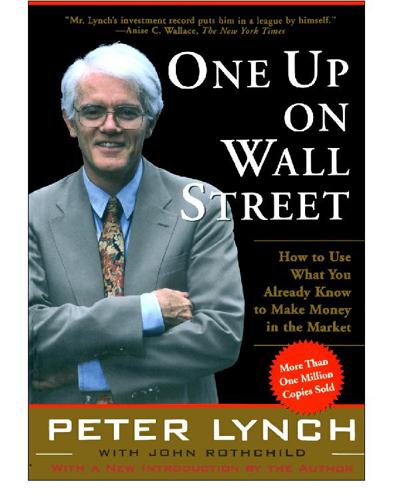
One Up on Wall Street
by
Peter Lynch
Published 11 May 2012
He could have been an aberration, but I figured with personnel like that, Pep Boys could sell anything. Sure enough, they have. After Apple computer fell apart and the stock dropped from $60 to $15, I wondered if the company would ever recover from its difficulties, and whether I should consider it as a turnaround. Apple’s new Lisa, its entry into the lucrative business market, had been a total failure. But when my wife told me that she and the children needed a second Apple for the house, and when the Fidelity systems manager told me that Fidelity was buying 60 new Macintoshes for the office, then I just learned that (a) Apple still was popular in the home market, and (b) it was making new inroads in the business market.
…
By the way I pose this, you’ve already figured out my answer is “no.” With many of these new issues, the stock price doubles, triples, or even quadruples on the first day of trading. Unless your broker can stake your claim to a meaningful allotment of shares at the initial offering price—an unlikely prospect since Internet offerings are more coveted, even, than Super Bowl tickets—you’ll miss a big percent of the gain. Perhaps you’ll miss the entire gain, since some dot.coms hit high prices on the first few trading sessions that they never reach again. If you feel left out of the dot.com jubilee, remind yourself that very few dot.com investors benefit from the full ride.
…
In centuries past, people hearing the rooster crow as the sun came up decided that the crowing caused the sunrise. It sounds silly now, but every day the experts confuse cause and effect on Wall Street in offering some new explanation for why the market goes up: hemlines are up, a certain conference wins the Super Bowl, the Japanese are unhappy, a trendline has been broken, Republicans will win the election, stocks are “oversold,” etc. When I hear theories like these, I always remember the rooster. In 1963, my sophomore year in college, I bought my first stock—Flying Tiger Airlines for $7 a share. Between the caddying and a scholarship I’d covered my tuition, living at home reduced my other expenses, and I had already upgraded myself from an $85 car to a $150 car.

The Future Was Now: Madmen, Mavericks, and the Epic Sci-Fi Summer Of 1982
by
Chris Nashawaty
We went to the movies and were convinced that the future was now. EPILOGUE After his “miserable experience” during the making of Blade Runner, Ridley Scott returned to England and the world of advertising, where he would direct what is still regarded as the greatest Super Bowl commercial of all-time. Inspired by George Orwell’s 1984, Scott turned his sixty-second spot for the Apple Macintosh computer into the most buzzed-about product launch of the ’80s. Scott would return to feature films in 1985 with the Tom Cruise fantasy epic Legend, and go on to direct Thelma & Louise, Gladiator, and Black Hawk Down—all of which earned him Best Director Oscar nominations.
…
In 2021, at age ninety, Shatner became the oldest man to fly into space by taking part in Blue Origin’s suborbital human spaceflight. Despite his dramatic death scene in The Wrath of Khan, Leonard Nimoy would return in front of and behind the camera for 1984’s Star Trek III: The Search for Spock and several more sequels. Over the years, he would also make peace with his on-screen alter ego on The Simpsons and write a pair of autobiographies with the oxymoronic titles I Am Not Spock and I Am Spock. He died in 2015. Barry Diller would continue as the chairman and CEO of Paramount Pictures until 1984. He would leave to run 20th Century Fox, where he helped launch the Fox Network. * * * Just as the media predicted, the summer of 1982 turned out to be “the Summer of Spielberg.”
…
And one of the first acts of his tenure in the corner office was to figure out a way to get that long-neglected goose to start laying some gilded eggs again. Roddenberry, who had been pushing the idea of a new Star Trek series (or, better yet, a feature film) for ages, suddenly found himself before a newly receptive audience with the power to give him the go-ahead. Unbeknownst to the new management team, Roddenberry had already secretly hammered out a Star Trek script tentatively called The God Thing. But even he wasn’t sure if it would work better as a pilot for a new series, a two-hour TV movie, or a film to be played on the big screen. He hoped for the latter, but at that point, he would have gladly accepted any of the above. After all, his career had been a constant, frustrating state of nonstop hustling since NBC had put the Enterprise into dry dock.

Elon Musk
by
Walter Isaacson
Published 11 Sep 2023
In addition, he came to a realization: he had a fanatic love of video games and the skills to make money creating them, but that was not the best way to spend his life. “I wanted to have more impact,” he says. King of the road One unfortunate trend in the 1980s was that cars and computers became tightly sealed appliances. It was possible to open up and fiddle with the innards of the Apple II that Steve Wozniak designed in the late 1970s, but you couldn’t do that with the Macintosh, which Steve Jobs in 1984 made almost impossible to open. Similarly, kids in the 1970s and earlier grew up rummaging under the hoods of cars, tinkering with the carburetors, changing spark plugs, and souping up the engines. They had a fingertip-feel for valves and Valvoline.
…
” * * * When I was reporting on Steve Jobs, his partner Steve Wozniak said that the big question to ask was Did he have to be so mean? So rough and cruel? So drama-addicted? When I turned the question back to Woz at the end of my reporting, he said that if he had run Apple, he would have been kinder. He would have treated everyone there like family and not summarily fired people. Then he paused and added, “But if I had run Apple, we may never have made the Macintosh.” And thus the question about Elon Musk: Could he have been more chill and still be the one launching us toward Mars and an electric-vehicle future? At the beginning of 2022—after a year marked by SpaceX making thirty-one successful rocket launches, Tesla selling close to a million cars, and him becoming the richest man on Earth—Musk spoke ruefully about his compulsion to stir up dramas.
…
Avoid Klingons” were the only ones on Atari’s first Star Trek game.) Doug Engelbart combined such displays with a mouse that allowed users to interface with a computer by pointing and clicking, and Alan Kay at Xerox PARC helped develop that into an easy-to-use graphical interface that mimicked a desktop. Steve Jobs adopted that for Apple’s Macintosh computer, and at his very last board meeting, as he was dying in 2011, he tested another great leap in human-computer interfaces: an application called Siri that allowed people and computers to interact by voice. Despite all these advances, the input-output between humans and machines remained crushingly slow.
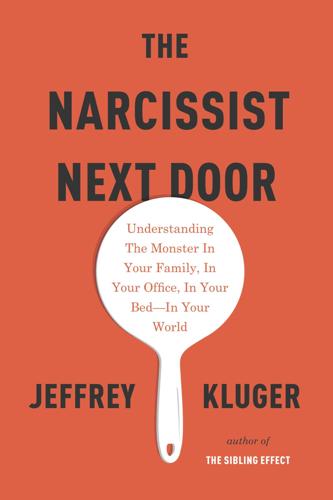
The Narcissist Next Door
by
Jeffrey Kluger
Published 25 Aug 2014
The beige box soon gave way to a white box—a small, streamlined thing that you wanted to look at, to display, not just use. When the first little Macintosh came along—just a year before Jobs left the company—the central image in all of the ads was the computer itself with the loopy, cursive word “Hello” written on the screen. It was a new friend, a cute friend, and one that was excited to meet you. Upon Jobs’s return to the company in 1996, that same human sensibility returned with him. In the years he was gone, Apple had reverted to the beige-box model, and the computing guts of those boxes weren’t terribly good. His first act was to blow up the entire dreary product line and replace it with the cuddliest, most people-smart computer to date—the bulbous, baby-shaped, multicolored iMac.
…
You can be a National Football League flameout like Ryan Leaf, the number two player picked in the 1998 draft, who was out of the league entirely by 2002 after four years of indifference, poor play and multiple ugly public incidents including an infamous moment, caught on videotape, in which he stood over a frightened-looking sportswriter who had apparently asked the wrong question, screaming, “Just fucking don’t talk to me, all right? Knock it off!” Or you can be Super Bowl winner Peyton Manning, picked number one in the same year Leaf was drafted, who has spent the better part of two decades winning games and smashing records and whose only scandalous moment in his long career was . . . well, never mind. There never was one. So what makes the difference between a Palin and a Rubio, a Leaf and a Manning, a Sheen and, say, a Michael J.
…
He stood before the newsreel cameras and the cheering reporters and did what most people do in that situation, which was to begin handing out thanks—to the university, the foundation that funded his work, the drug companies that manufactured the test vaccine, the dozens of children who volunteered to take the earliest formulation of it, the hundreds of thousands who later stepped forward as guinea pigs for the final version, nearly anyone who had even brushed up against the enterprise in the long years that had preceded that day. And yet somehow—oversight, nerves, an overweening ego at last showing itself (his critics preferred that explanation)—he never mentioned a single member of his lab team, the people who had done more than anyone else to make the vaccine a reality. It would be like a Super Bowl–winning coach acknowledging everyone but the players, a victorious general thanking everyone but the foot soldiers. For the stunned lab workers sitting in the audience, the day turned instantly to ash. “Young man,” legendary CBS newsman Edward R. Murrow said to Salk when he buttonholed him in the back of the hall after the presentation, “a great tragedy has befallen you.
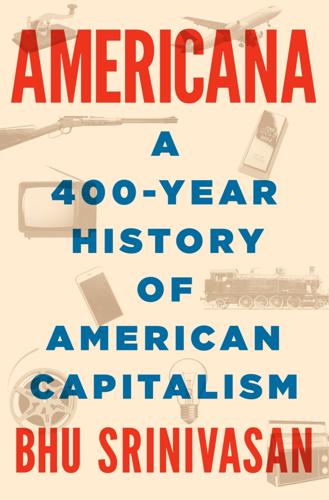
Americana: A 400-Year History of American Capitalism
by
Bhu Srinivasan
Published 25 Sep 2017
Thirty-five MOBILE It was clear to almost all that Apple Computer’s time had passed. Microsoft dominated the personal computer. Upstarts dominated Internet services. Computer manufacturers like Dell made fortunes from machines that ran Windows, Microsoft’s ubiquitous operating system. In comparison, Apple’s world in 1997 was not just niche but a dying niche. Steve Jobs’s company had lost the war. Jobs himself had been a founder in absentia for twelve years, having been fired in 1985. His failure with the launch of the Macintosh, underwhelming in its initial sales, had been the final death knell. Apple’s story then became a classic tale of an enigmatic, iconoclastic founder making way for seasoned business leadership.
…
Within a couple years, the upstart AFL was able to force the NFL to a merger of equals. Its championship game, which featured the winner of each league, became the Super Bowl, which then grew into a national television holiday, joining the Fourth of July, Thanksgiving, and Christmas in terms of faithful observance. It was uniquely American, with endless commercials for beer, cars, potato chips, and soft drinks becoming a much-anticipated event within the event, a metacelebration of capitalism as people embraced how businesses advertised their products to consumers. The Super Bowl also hinted at American exceptionalism: Its winners were proclaimed “world champions,” even though almost no other country played the sport.
…
Abdul-Jabbar, Kareem, 454 abolitionists, 118, 119, 122 activist investors, 445–49 Adams, Bud, 393 Adams, John, 39, 43, 45 Adams, Samuel, 39 Adams, Samuel Hopkins, 265–66 advertising of Budweiser, 180 of cereals, 261–62 of Coca-Cola, 264 by department stores, 203–4 by discounters, 404 early television and, 386 of early automobiles, 280 by Hearst in New York Times, 233 I Love Lucy and, 383 of Levittown, 374, 382 Nike and, 453–57 of patent medicines, 262–63 of slave auctions, 123 Super Bowl and, 394 of Vanderbilt’s steamboats, 68 African-Americans. See also slaves/slavery crime rates and violence, in 1980s and 1990s, 451–52 discrimination in suburbia and, 377–80 Gone with the Wind and, 346–48 Great Migration and, 291, 313 Harlem renaissance and, 313–14 right to vote granted to, 198 sports stars endorsements and, 453–57 Agate, Betty, 400 AIG, 487 aircraft German Luftwaffe, 351, 355 production of, for World War I, 300 production of, for World War II, 351, 355–56, 358, 359, 360–62, 364 Air Jordan, 455, 460–61 Alabama cotton production in, 56 secession of, 138 Alarm (newspaper), 215 Alaska, 242–43 alcohol consumption, 178, 182–83 Alcorn, Al, 428 Alger, Horatio, Jr., 163–64 Ali, Muhammad, 454 Allen, Horatio, 82 Allen, Paul, 429–30 Altair, 429–30 alternating current, 196 alternative music, 453–54 Amazon.com, 471, 474, 475, 477 America First, 363 American Airlines, 417 American Broadcasting Company (ABC), 382, 393–94 American Car & Foundry, 362 American colonies.

Americana
by
Bhu Srinivasan
Thirty-five MOBILE It was clear to almost all that Apple Computer’s time had passed. Microsoft dominated the personal computer. Upstarts dominated Internet services. Computer manufacturers like Dell made fortunes from machines that ran Windows, Microsoft’s ubiquitous operating system. In comparison, Apple’s world in 1997 was not just niche but a dying niche. Steve Jobs’s company had lost the war. Jobs himself had been a founder in absentia for twelve years, having been fired in 1985. His failure with the launch of the Macintosh, underwhelming in its initial sales, had been the final death knell. Apple’s story then became a classic tale of an enigmatic, iconoclastic founder making way for seasoned business leadership.
…
Within a couple years, the upstart AFL was able to force the NFL to a merger of equals. Its championship game, which featured the winner of each league, became the Super Bowl, which then grew into a national television holiday, joining the Fourth of July, Thanksgiving, and Christmas in terms of faithful observance. It was uniquely American, with endless commercials for beer, cars, potato chips, and soft drinks becoming a much-anticipated event within the event, a metacelebration of capitalism as people embraced how businesses advertised their products to consumers. The Super Bowl also hinted at American exceptionalism: Its winners were proclaimed “world champions,” even though almost no other country played the sport.
…
Abdul-Jabbar, Kareem, 454 abolitionists, 118, 119, 122 activist investors, 445–49 Adams, Bud, 393 Adams, John, 39, 43, 45 Adams, Samuel, 39 Adams, Samuel Hopkins, 265–66 advertising of Budweiser, 180 of cereals, 261–62 of Coca-Cola, 264 by department stores, 203–4 by discounters, 404 early television and, 386 of early automobiles, 280 by Hearst in New York Times, 233 I Love Lucy and, 383 of Levittown, 374, 382 Nike and, 453–57 of patent medicines, 262–63 of slave auctions, 123 Super Bowl and, 394 of Vanderbilt’s steamboats, 68 African-Americans. See also slaves/slavery crime rates and violence, in 1980s and 1990s, 451–52 discrimination in suburbia and, 377–80 Gone with the Wind and, 346–48 Great Migration and, 291, 313 Harlem renaissance and, 313–14 right to vote granted to, 198 sports stars endorsements and, 453–57 Agate, Betty, 400 AIG, 487 aircraft German Luftwaffe, 351, 355 production of, for World War I, 300 production of, for World War II, 351, 355–56, 358, 359, 360–62, 364 Air Jordan, 455, 460–61 Alabama cotton production in, 56 secession of, 138 Alarm (newspaper), 215 Alaska, 242–43 alcohol consumption, 178, 182–83 Alcorn, Al, 428 Alger, Horatio, Jr., 163–64 Ali, Muhammad, 454 Allen, Horatio, 82 Allen, Paul, 429–30 Altair, 429–30 alternating current, 196 alternative music, 453–54 Amazon.com, 471, 474, 475, 477 America First, 363 American Airlines, 417 American Broadcasting Company (ABC), 382, 393–94 American Car & Foundry, 362 American colonies.
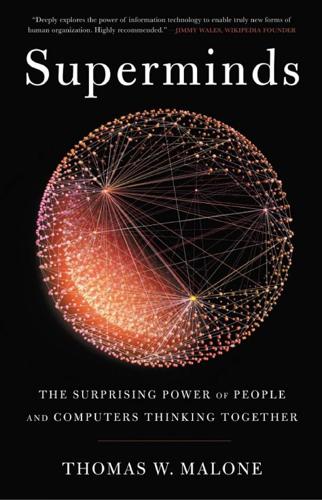
Superminds: The Surprising Power of People and Computers Thinking Together
by
Thomas W. Malone
Published 14 May 2018
Self-Awareness Apple is certainly aware of many aspects of itself and its corporate identity. From financial statements to market-share data, it constantly monitors many measures of its own performance. Apple executives (especially the late Steve Jobs) have not been shy about sharing Apple’s self-image as a company that makes “insanely great” products, and Apple’s advertising and public relations efforts are remarkably sophisticated and effective in reporting to the world at least some aspects of how Apple sees itself. I will probably never forget, for instance, Apple’s iconic “1984” Super Bowl commercial, which I showed to the first class I ever taught at MIT, in February 1984.
…
I will probably never forget, for instance, Apple’s iconic “1984” Super Bowl commercial, which I showed to the first class I ever taught at MIT, in February 1984. In this commercial, a young female athlete smashes a huge television screen on which a Big Brother–like figure is addressing a crowd of soulless drones. The commercial ends by announcing the Apple Macintosh and saying that this new computer is why the year 1984 won’t be like the dystopian novel 1984. Most people interpreted the commercial as symbolizing how the countercultural ethos of Apple and its new computer would destroy IBM’s dominance of the computer industry, and that self-image—the one Apple portrayed to the world—helped propel its growth in the following decades.
…
Letting Humans and Machines Estimate the Same Probabilities One of the advantages of using a technology like Bayesian networks is that both humans and computers can understand and estimate the same probabilities. For instance, if human intelligence analysts intercept online communication that leads them to believe the probability of a terrorist bomb going off at the Super Bowl is much higher than they previously thought, they could manually adjust the human estimate of the probability of this event. And the system could then adjust all the other probabilities within it to be consistent with this new information.16 In fact, you could even imagine letting both people and computers participate in prediction markets, like those we saw in chapter 8, to estimate the probabilities of key events.
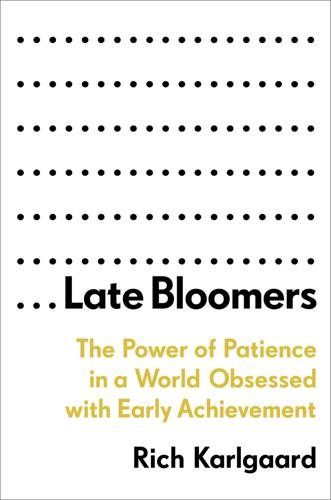
Late Bloomers: The Power of Patience in a World Obsessed With Early Achievement
by
Rich Karlgaard
Published 15 Apr 2019
In fact, I see plenty of evidence going the other way. A recent sports story makes the point. In the 2018 Super Bowl, neither the Philadelphia Eagles nor the New England Patriots had many five-star recruits in their starting lineups. Translation: Only six of the forty-four starters were top-rated prospects in high school. Now look at the quarterbacks. New England’s Tom Brady didn’t merit even a humble two or one ranking in high school. His ranking was NR—“no ranking.” The victorious Eagles quarterback, Nick Foles, winner of the 2018 Super Bowl’s most valuable player award, had a three ranking in high school. But for most of the season, Foles was actually the Eagles backup.
…
* * * In Chapter 4, I praised the insight of famous football coach and late bloomer Bill Walsh. Early in my career at Forbes magazine, I asked Walsh to write a column for Forbes ASAP. He had just returned to coaching football at Stanford. Prior to that, he’d taken the San Francisco 49ers from the worst record in the NFL to a Super Bowl win in just three years. He won two more Super Bowls and left the 49ers franchise in a position to win two more. He was arguably the most brilliant football coach of his era. Even his detractors had to concede that Walsh, creator of the West Coast offense, was a premier innovator in the field of football. I visited him at his Stanford office, where we would talk for an hour at a time, with me taking notes.
…
“I’m contacted by a lot of parents”: Irena Smith quoted in Georgia Perry, “Silicon Valley’s College-Consultant Industry,” Atlantic, December 9, 2015. college tuition costs have risen: “Elite College Prices Now Exceed $70,000 Per Year,” Wealth Management, March 1, 2017, https://bit.ly/2MsdJMc. In the 2018 Super Bowl: “Super Bowl 2018: “How Eagles, Patriots Starters Rated as High School Recruits,” CBS Sports, February 1, 2018, https://bit.ly/2CTa0YB. Carson Wentz was five foot eight and 125 pounds as a high school freshman: “Carson Wentz Was 5-8 as High School Freshman and Other Things You Might Not Know About Him,” Morning Call, April 29, 2016, https://bit.ly/2NFmEic.
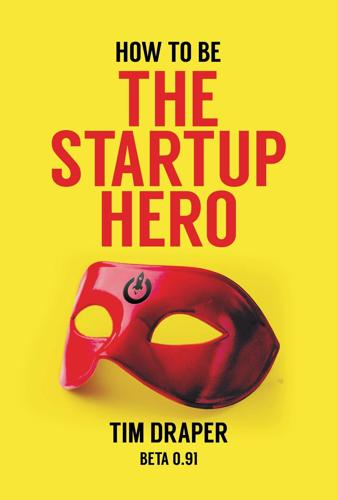
How to Be the Startup Hero: A Guide and Textbook for Entrepreneurs and Aspiring Entrepreneurs
by
Tim Draper
Published 18 Dec 2017
. ✽✽✽ Fame Get on a TV show (Startup U, The Naked Brothers Band) Get in a movie (Heartless) Get a speaking part in a movie (The Naked Brothers Band) Write a novel Write a non-fiction book (I guess this is it, but some would argue that this is my novel) Get on the cover of Upside or The Red Herring magazine Throw a party for 1000 guests (2001: A Cyberspace Odyssey) Be a guest on a talk show (Stephen Colbert) Fortune Buy an island (Lupita Island) Make an investment in Mongolia Buy some serious land on the water (DreamFarm Ranch) Seed five public companies (PTC, TSLA, DIGI, Overture, BIDU, many more) Collect Amazing Fantasy #15 and Willie Mays rookie baseball card (bought both) Get a patent (decided to give the ideas away so far) Buy art by Vincent van Gogh Family Have four children (Jesse, Adam, Billy, Eleanor) Get married (Melissa) Go backpacking with my kids Start a business with my kids See a baby being born (saw all four) Buy a sailboat (Flying Scot) Buy a motorboat (The 100 Feet) See all kids Graduate from College (UCLA x3 and USC) Fan Visit all 50 states – spend a night (46/50) Visit 100 Countries – spend a night (68/100) Go to a World Series game (Go Giants!!!) Go to a World Cup game (at Stanford) Got to a Super Bowl (Ravens over Giants) Play chess in Washington Square (lost 3 games) Play tennis at Wimbledon Drive across the country Go to Disney World (fun!) Go on a safari in Botswana Go to the Consumer Electronics Show in Las Vegas (many times) Visit the New York Stock Exchange (BizWorld and MeVC) See the opening of a Broadway show (Crazy She Calls Me) See Steve Miller Band in concert (with the Doobie Brothers at Shoreline—met him later) Visit the pyramids (and Ramses II) Go to the Olympics games (Summer in Atlanta, Winter in Utah) Friends Play touch football with Joe Montana Meet each President since Richard Nixon (so far, so good) Meet Barry Bonds (he helped coach my kids’ T-ball team) Meet Charles Barkley Meet Michael Milken (Spoke at the Milken Institute) Meet Michael Jackson (I had backstage passes to his concert in London, but he died before the concert was scheduled to begin) Meet Phil Collins (at the Oscars) Freaks Attend a funeral (this has happened too many times) Be in a hurricane (swam during Hurricane Bob) Be in an earthquake (dove under my desk at work) Be in a flood (our dog had to swim through the house) See an active volcano (in Pucon, Chile, and Mt Saint Helens, both from the sky) Visit a prison (Sonora State Prison with Defy Ventures) Fulfillment Create a board game (Stanford: The Game, Voter’s Choice) Create a game for a class (BizWorld) Paint 10 good paintings (“good” is in the eyes of the painter) Plant a tree that lives Build a treehouse with my kids (at my parents’ house before they tore it down) Produce a movie (The Tic Code, The Naked Brothers Band, Stella’s Last Weekend) Produce a CD-ROM title (I think technology has moved past me here) Get 10 articles published (most are about supporting entrepreneurship and driving technology) Write a very long poem Make a success of a dropout (there have been many) Get jobs for 10 friends (very satisfying) Grow a vegetable garden (it attracted crows) Free a prisoner Get a law changed or eliminated (made school vouchers legal) Teach a class at Stanford Business School (with Bill Sahlman) Fascination Learn more Japanese Learn to play 3 songs on the piano well Read 1000 books (I am at 350) Learn to make one spectacular dessert Read the Bible (Old and New) Read the Koran (brilliant legal document) Read the book of Mao (he was awesome, then he was awful) Read The Book of Mormon Shoot below 85 in golf (best score 86; typical score 110) Foolishness Bareback ride an unknown horse (with my brother-in-law in Hawaii) Hang glide (crashed and cracked the mast) Pilot an airplane (bush plane in Alaska) Parasailing (in Mexico) Drink snake blood in Snake Alley (in Taiwan) Swim in the Crystal Springs Reservoir (so muddy!)
…
We also have a fireside chat where I interview top luminaries and successful entrepreneurs. The first interview was with Eric Schmidt of Google. I asked him whether he learned anything about business when he was in grade school. He said, “No.” He had to learn on the fly. During another interview with Ronnie Lott, famous 49er cornerback with Super Bowl rings on all his fingers (except the one), gamely asked the kids business questions, which they were able to answer adroitly because of their experience with BizWorld. The event has since been named “BizWorld’s Riskmaster Award Lunch,” and has attracted some real luminaries. Elon Musk of Tesla and SpaceX, Marc Benioff of Salesforce, Richard Rosenblatt of Myspace, Chad Hurley of YouTube, Tom Seibel of Seibel Systems, Jenny Johnson of Franklin Fund, Aaron Levie of Box, Eric Migicovsky of Pebble, Brian Armstrong of Coinbase, and Peter Gotcher of Digidesign and Dolby have all come to do fireside chats at the BizWorld luncheon.
…
I had little idea of how it would be to do work in a group. Since HP encouraged teamwork, I was a little lost in my first job. Fortunately, I had played a lot of sports (I even played football for Stanford under Coach Bill Walsh, who went on to be the head coach for the San Francisco 49ers and led the team to the Super Bowl several times) or I would not have had any concept of the idea of teamwork. Even so, I was not a great team player and an even worse communicator. I think I may have been HP’s worst employee. The company kept me there and even tried to promote me when I left to go to business school, but I was terrible.
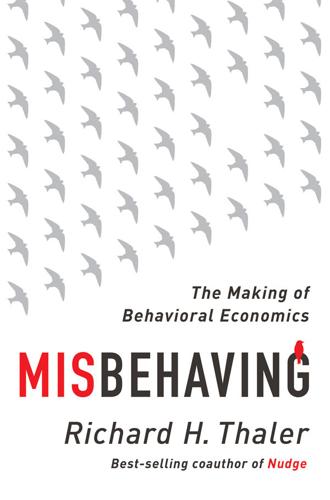
Misbehaving: The Making of Behavioral Economics
by
Richard H. Thaler
Published 10 May 2015
‡ Notably, an even larger organization—the NFL—recognizes and ascribes to this same piece of advice. In an interview with economist Alan B. Krueger, the NFL’s VP for public relations, Greg Aiello, explained that his organization takes a “long-term strategic view” toward ticket pricing, at least for the Super Bowl. Even though the high demand for Super Bowl tickets might justify significantly higher prices (and short-term profits—he calculates the profit increase as on the same scale as all advertising revenues), the organization intentionally keeps these prices reasonable in order to foster its “ongoing relationship with fans and business associates” (Krueger, 2001). 15 Fairness Games One question was very much on the minds of Danny, Jack, and me while we were doing our fairness project.
…
Present bias. Team owners, coaches, and general managers all want to win now. For the players selected at the top of the draft, there is always the possibility, often illusory, as in the case of Ricky Williams, that the player will immediately turn a losing team into a winner or a winning team into a Super Bowl champion. Teams want to win now! So our basic hypothesis was that early picks were overvalued, meaning that the market for draft picks did not satisfy the efficient market hypothesis. Fortunately, we were able to get all the data we needed to rigorously test this hypothesis. The first step in our analysis was just to estimate the market value of picks.
…
(Recall that it was a number two pick that the Redskins had originally traded up to get.) The 2014 season was also a disappointing one for RG3. In hindsight, another player named Russell Wilson, who was not picked until the third round, appears to be better and less injury-prone than RG3. During his three years in the NFL, Wilson has led his team to the Super Bowl twice, winning once. Of course, one should not judge a trade using hindsight, and the Redskins were certainly unlucky that Griffen suffered from injuries. But that is part of the point. When you give up a bunch of top picks to select one player, you are putting all your eggs in his basket, and football players, like eggs, can be fragile.§ Our relationship with the Redskins did not last very long, but we soon found that another team (whose identity shall remain confidential) was interested in talking to us about draft strategy.
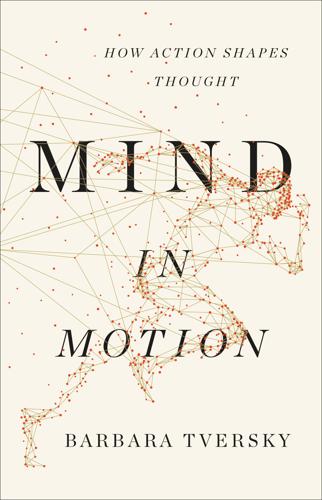
Mind in Motion: How Action Shapes Thought
by
Barbara Tversky
Published 20 May 2019
Jumping up a level, to superordinate categories, we see that different kinds of fruit, furniture, tools, and clothing do not share shapes. On the contrary, they come in a variety of shapes. Bananas have different shapes from apples and watermelons, airplanes from cars and trucks, shirts from pants and belts. A composite shape of a couple of apples or hammers is identifiable, but a composite of fruit or vehicles creates a blob. The basic level is privileged for behavior as well as perception. We behave the same way toward apples and bicycles and sweaters, but we behave differently to melons than to apples, to cars than to bicycles, to hats than to sweaters. What fruit and vehicles and tools share are not specific shape or action but something more general, function or use.
…
The more general level, the level of vehicle, fruit, and animal, has been called the superordinate level, and the more specific level, Tesla, Gala apple, and cocker spaniel, has been called the subordinate level. The basic level is special for many reasons. Objects at the basic level like apples and tables and hammers and belts generally have the same shapes, so it is easy to identify them. So do their subcategories, Gala and Delicious apples, leather and cloth belts, dining tables and coffee tables. Features other than shape, like color or material or size, distinguish one subordinate category member from another. Unless there’s good reason, there’s no need to make people attend to the fine discriminations and plethora of names that labeling at the subordinate level entails. Jumping up a level, to superordinate categories, we see that different kinds of fruit, furniture, tools, and clothing do not share shapes.
…
Understanding causality is crucial to understanding ourselves and others and everything else that happens or happened or might happen. ORDERS: WHO’S ON TOP? Quantity, preference, value—anything that can be ordered on a dimension The worst time to rob a house and the best time to go out to eat is during the Oscars, the Super Bowl, the World Cup finals. People are obsessed with ordering: who’s the best singer, actor, football player? Who’s the wealthiest? The strongest? What’s the best film, TV show, restaurant, wine, guacamole recipe, cell phone, car? Among chimps (and other species), who’s the alpha male? Orders have enormous implications and enormous power.
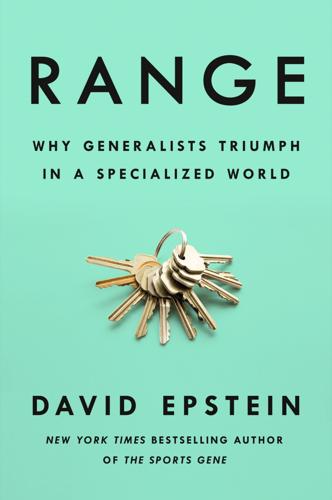
Range: Why Generalists Triumph in a Specialized World
by
David Epstein
Published 1 Mar 2019
In reality, the Roger path to sports stardom is far more prevalent than the Tiger path, but those athletes’ stories are much more quietly told, if they are told at all. Some of their names you know, but their backgrounds you probably don’t. I started writing this introduction right after the 2018 Super Bowl, in which a quarterback who had been drafted into professional baseball before football (Tom Brady), faced off against one who participated in football, basketball, baseball, and karate and had chosen between college basketball and football (Nick Foles). Later that very same month, Czech athlete Ester Ledecká became the first woman ever to win gold in two different sports (skiing and snowboarding) at the same Winter Olympics.
…
K., 128 rules in households, 77 Sabin, Paul, 218 sampling period, 7, 65, 67, 130 savants, 27, 32 Schultz, Theodore, 129 Schwartz, Barry, 30–31 “Science, the Endless Frontier” (Bush), 285 science and scientists atypical knowledge combinations in, 281–82 and commercial applications, 284–86 critical thinking skills of, 51–53, 277–78 hyperspecialization in, 278–79, 278n and interdisciplinary approaches, 276–77, 278n, 279, 281 with outside avocations, 32–33 parallel trenches of, 12–13, 278–79 rush to specialize, 276 science curiosity, 227–28 and scientific literature, 276, 281–82 scientific reasoning, 51–53 value of range/inefficiency in, 283–86 working abroad, 281 Serial Innovators (Griffin, Price, and Vojak), 213 Seth, Jayshree, 206–7 Shafer, Mary, 255 Shakespeare, William, 288 Shannon, Claude, 33–34 Shoda, Yuichi, 158–59 short term planning, 154 Simmons, Michael, 289 Simon, Herbert A., 25 Simon, Julian, 216–18 Simonton, Dean Keith, 33, 212, 221, 281n, 288 Sloboda, John, 65–67 Smith, Gregory White, 127, 167 Smith, Johnny, 70–71 Smithies, Oliver, 269–272, 281 soccer, 7–8 Socrates, 85 Southern, Edwin, 271–72 Soviet Union predictions/forecasts regarding, 220–21 premodern villagers of, 40–44, 46–47 spelling bee competitors, 133, 134, 135 The Sports Gene (Epstein), 9 standardization covenant, 155 StarCraft video games, 28–29 stents (coronary), 266 Storm King Mountain fire, 246 strategic thinking, 22–23, 28–29 struggling, benefits of, 88, 89 sunk cost fallacy, 143 Super Bowl, 2018, 8 superforecasters, 258 Superforecasting (Tetlock and Gardner), 220 surgeons and surgical teams, 6, 32, 210–11 Suzuki Method, 76 Swanson, Don, 179–180, 189, 206 Swanson, Judy, 180–81 Syed, Matthew, 6 Talent Is Overrated (Colvin), 18 Taylor, Alva, 208–10 teachers, 91–92, 132 teams innovation in, 209–10 of specialists in “kind” learning environments, 210–11 tech companies, founders of, 11 technological inventors, 9 tennis, 31 ten-thousand-hours rule of expertise, 5, 32 test-and-learn model for exploring options, 163–64 testing/self-testing, 87–88, 89, 96 Tetlock, Philip, 218–223, 225, 228, 230, 231, 256 Thrale, Hester, 56 Tiger parents, 64–65, 275 Tillman Foundation, 10, 13 Togelius, Julian, 28–29 tools and Air Force pararescue jumpers, 250–55, 258 and cultural congruence/incongruence, 255, 256–57 in medical world, 266–67 and NASA’s quantitative culture, 241–45, 247–48, 249, 254, 257, 258 and overlearned behavior, 248, 250 and reliance on trusted methods/beliefs, 246–47, 265–67 in wilderness firefighting, 245–47, 248 Toynbee, Arnold, 51, 267 Treffert, Darold, 27 Tucker, Ross, 9 Tu Youyou, 272 Tversky, Amos, 108 University of Chicago, 49 University of Washington, 50 Unusual (or Alternative) Uses Task, 198 U.S.
…
As psychologist and prominent creativity researcher Dean Keith Simonton observed, “rather than obsessively focus[ing] on a narrow topic,” creative achievers tend to have broad interests. “This breadth often supports insights that cannot be attributed to domain-specific expertise alone.” Those findings are reminiscent of a speech Steve Jobs gave, in which he famously recounted the importance of a calligraphy class to his design aesthetics. “When we were designing the first Macintosh computer, it all came back to me,” he said. “If I had never dropped in on that single course in college, the Mac would have never had multiple typefaces or proportionally spaced fonts.” Or electrical engineer Claude Shannon, who launched the Information Age thanks to a philosophy course he took to fulfill a requirement at the University of Michigan.
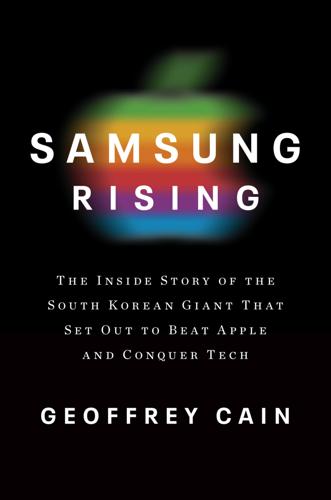
Samsung Rising: The Inside Story of the South Korean Giant That Set Out to Beat Apple and Conquer Tech
by
Geoffrey Cain
Published 15 Mar 2020
The Wall Street Journal piece pointed to Pendleton’s “marketing onslaught” that had allowed Samsung to close the “coolness gap with Apple Inc.” The article riveted the tech industry. But the Super Bowl was fast approaching (six days away), and Pendleton wasn’t finished attacking Apple’s position in the marketplace. He had a new $15 million ad-libbed commercial set to air during the Super Bowl, made with 72andSunny, featuring comic banter among Paul Rudd and Seth Rogen and Breaking Bad’s Bob Odenkirk, plotting their own fictional ad spot for the Super Bowl. “We actually can’t say ‘Super Bo—’?” asked Seth Rogen. “No! It’s trademarked,” snapped back Bob Odenkirk.
…
“Samsung, the market leader in smartphones”: Ian Sherr and Evan Ramstad, “Has Apple Lost Its Cool to Samsung?” The Wall Street Journal, January 28, 2013, https://www.wsj.com/articles/SB10001424127887323854904578264090074879024. The article riveted the tech industry: Kovach, “How Samsung Won and Then Lost.” He had a new $15 million ad-libbed: Jason Evangelho, “With Hilarious 2-Minute Super Bowl Ad, Samsung Steals Cool Factor from Apple,” Forbes, February 3, 2013, https://www.forbes.com/sites/jasonevangelho/2013/02/03/with-hilarious-2-minute-super-bowl-ad-samsung-officially-steals-cool-factor-from-apple/#130b5461326a. “We actually can’t say”: “New Samsung Commercial Mocks Apple Lawsuits in SuperBowl Teaser Ad Feat.
…
“We understand that this moment is pretty close to 1997 in terms of the need for advertising to help pull Apple through this moment.” Schiller blew up at the response. “To come back and suggest that Apple needs to think dramatically different about how we are running our company is a shocking response,” he wrote. “In 1997 Apple had no products to market. We had a company making so little money that we were 6 months from out of business….Not the world’s most successful tech company. Not the company that everybody wants to copy and compete with.” Samsung’s Super Bowl ad was “pretty good,” Schiller went on, “and I can’t help but think these guys [TBWA] are feeling it, like an athlete who can’t miss because they are in the zone while we struggle to nail a compelling brief on iPhone.”

Facebook: The Inside Story
by
Steven Levy
Published 25 Feb 2020
The other was making sixdegrees into an operating system, or platform, where third parties could create applications that would run on top of what Weinreich had dreamed would be a social network that encompassed the globe. What Weinreich did not know was the person who would build—and surpass—his vision was only twenty-five miles from the Puck Building. And he was twelve years old. * * * • • • MARK ELLIOT ZUCKERBERG was born to Karen and Ed Zuckerberg in 1984. The day was May 14, almost four months after the launch of the Apple Macintosh, which aspired to push into common use what was still seen as a device for trained experts and batty hobbyists. Not many people had personal computers then, and fewer still had modems, the noisy peripherals that connected PCs to telephone lines. The precursor to the Internet, ARPAnet, was around, but limited to government and some computer-science students.
…
Abrams, Jonathan, 41–43, 81, 87 Abrash, Michael, 327, 492 Accel venture capital firm, 102–3, 132 Acton, Brian, 317–25, 438, 500–506 advertising and Beacon, 182–83, 186–88, 206, 212 and Bosworth, 294–95 and business model of FB, 170, 178, 199–200 and Cabal group of Bosworth, 294–96 and Cambridge Analytica, 399, 420 Campus Flyers, 178 competition for, 476 and data brokers, 269–70, 475 and data collection on FB, 207 and fake news disseminated on FB, 359 and FTC investigation and sanctions, 274 Hammerbacher on, 217 on Instagram, 477, 490, 508 and Like button, 202 and Lookalike Audiences, 352 and Microsoft partnership, 179–80, 183–85, 198 in mobile apps, 295–98 and News Feed feature, 138 number of engineers working on, 199 and Pages, 182 and Pages You May Like campaign, 295 and Pandemic code name, 181, 185 and personally identifying information (PII), 474, 476 and privacy questions, 475 questionable categories in, 465–66 revenues from, 170, 178, 198, 275, 297, 477 and Russian election interference, 372–76, 377, 378–79 Sandberg’s policies for, 199–200 in sidebars, 181 social advertising, 180–81, 183, 185 success of, 198 targeted ads, 181, 351–53, 399, 465, 475 by Trump campaign, 351–54 and WhatsApp, 320–21, 324–25, 504 Zuckerberg’s perspectives on, 201–2, 295–96, 474–75 by Zynga, 167 African Americans, 343, 353, 374, 403, 469–70 Agarwal, Aditya, 105, 107 algorithms of Facebook amplifying effects of, 142 charges of political bias in, 458 engagement prioritized in, 385 and fake news/misinformation on FB, 9, 11, 361 privileging close relationships, 261, 391 and ranking of posts on News Feed, 127–28, 163, 172, 260–61, 385 and sharing of content, 401 Amazon, 293, 516 America Online (AOL), 28–29, 209 Analog Research Lab, 238, 368 Andreessen, Marc, 288, 327–28, 379 Andreessen Horowitz, 300, 327 Android platform, 172 Anker, Andrew, 357, 388–89 antitrust questions, 514–16 anti-vaccination movement, 346 Apple and antitrust investigations, 516 campus of, 148 and Cook’s criticisms of FB, 481–83 and Facebook app, 276–79 “full friend access” negotiated by, 175 and iPhones, 154, 276–79, 301 and Macintosh computers, 22 and Onavo Protect, 483–85 partnership with FB, 148 and platform for mobile phones, 172 application programming interface (API) Graph API V1 (“the Friend API”), 171–72, 175–76, 271, 409, 412 Graph API V2, 175 initial version, written by Fetterman, 150–51 See also Open Graph Applied Machine Learning (AML) team, 454 Aquila drone, 232–33 Arab Spring movement, 7, 434, 471 Arrington, Michael, 166 artificial intelligence (AI), 33, 452, 453–56 Backstrom, Lars, 223 Badros, Greg, 106, 201 Ballmer, Steve, 201, 239 Bannon, Steve, 411, 420 Barker, Brandee and Beacon, 187 on growth emphasis of company, 235 and News Feed feature, 141–42 and Pandemic launch, 185 on Sandberg critics, 356 and Schrage’s hire, 200 and Zuckerberg’s public speaking, 156 Barry, Ben, 237–39, 241–43, 337 Beacon, 182–83, 186–88, 206, 212 Beck, Glenn, 343 Beluga, 313 Benchmark venture capital firm, 102 Berteau, Stefan, 188 Bickert, Monika, 340, 343, 432–38, 443–44, 448–49, 457–58, 480 Black Lives Matter movement, 342–43 Bloomberg, Michael, 256 Book of Change, 119, 122, 127–28, 144, 205, 527 Bosworth, Andrew and ads engineering team, 294–95 background of, 126 and expectations Clinton would win, 350, 354 and fake news disseminated on FB, 349, 350 on FriendFeed, 203 and Like button, 204 management style of, 294 on “Napalm Girl” image, 457–58 and News Feed feature, 142, 391 recruitment of, 126–27 and solving FB’s problems, 481 on Trending Topics feature, 341–42 and “The Ugly” internal memo, 441–42 as VP of Hardware, 495 and Zuckerberg, 473 Bowles, Erskine, 288, 379, 471 boyd, danah, 67 breastfeeding, 252–53, 254 Breitbart News, 391, 411 Brexit, 422 Breyer, Jim, 102–3, 133 Brin, Sergey, 289 Brown, Campbell, 389–90 Brown, Nat, 159, 164–65, 269 Buchheit, Paul, 203 Buddy Zoo, 43–44, 61 “Building Global Community” (Zuckerberg), 371, 383 Burma (later Myanmar), 11, 435–39, 526 business plan of Facebook and advertising, 170, 178, 199–200 Callahan’s model, 177–78 and Cook’s criticisms of FB, 481, 482–83 and data collection on FB, 207, 524 and diversification, 198–99 and Kendall’s manifesto, 180 and Like button on external websites, 206 and Microsoft partnership, 179–80 and Sandberg, 198, 199–200 Buttigieg, Pete, 381 buyout offers, 131–37 BuzzFeed, 262, 387–88, 390, 440, 442 Cadwalladr, Carole, 422–24 Callahan, Ezra anticipation of FB’s success, 98 and business plan for FB, 177–78 on Cohler’s adult presence, 97 and Cox’s recruitment, 124 and customer support, 246, 247 at La Jennifer house, 96–97 and Open Registration, 144 on redesign, 139 on Sandberg’s management, 197 on status updates inspired by Twitter, 259 Callan, Aela, 436 Cambridge Analytica banned from FB, 425 congressional hearings following, 427–30 and data deletion demanded by FB, 419, 420–21, 422, 424–25 FB’s caution following, 464 and FB’s digital currency bid, 520 FB’s failure to alert users to issue, 421, 478 FB’s response to news of breach, 425–27 FB’s review of problem with, 418–19, 422 and Guardian article, 417–18 investigative journalism on, 422–24, 425 name of, 411 and political ads on FB, 11, 399, 411, 420 and SCL, 411, 415, 417 and Trump campaign, 399, 420, 421, 427 and user data supplied by Kogan, 399, 411–13, 414–19, 420–21, 422, 423–26 Wylie’s role in, 410–15, 420, 422–25 See also Kogan, Aleksandr Campus Flyers, 178 Carlyle Group equity fund, 113 Carmack, John, 326, 329, 491, 495 Casa Facebook (Palo Alto work space), 76–77, 82–84, 90–91, 95 Cathcart, Will, 170, 294, 507 Causes app, 155, 162, 164 Ceglia, Paul, 39 cell-phone numbers shared on FB, 71, 101 censorship, charges of, 457–59.
…
Classification: LCC HM743.F33 L48 2020 (print) | LCC HM743.F33 (ebook) | DDC 302.30285—dc23 LC record available at https://lccn.loc.gov/2019047909 LC ebook record available at https://lccn.loc.gov/2019047910 International Edition ISBN: 9781524746834 While the author has made every effort to provide accurate telephone numbers, Internet addresses, and other contact information at the time of publication, neither the publisher nor the author assumes any responsibility for errors or for changes that occur after publication. Further, the publisher does not have any control over and does not assume any responsibility for author or third-party websites or their content. pid_prh_5.5.0_c0_r1 In memory of Lester Levy, 1920–2017. Sorry you didn’t see that Super Bowl, Dad. Contents Also by Steven Levy Title Page Copyright Dedication Introduction PART ONE 1. ZuckNet 2. Ad-Boarded 3. Thefacebook 4. Casa Facebook 5. Moral Dilemma 6. The Book of Change PART TWO 7. Platform 8. Pandemic 9. Sheryl World 10.
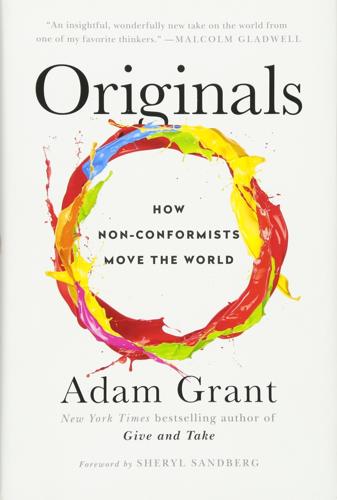
Originals: How Non-Conformists Move the World
by
Adam Grant
Published 2 Feb 2016
Dubinsky knew that Jobs respected those who stood up to him and was open to new ways of doing things. And she wasn’t speaking up for herself; she was advocating for Apple. By virtue of her willingness to challenge an idea she viewed as wrong, Dubinsky landed a promotion. She was not alone. Starting in 1981, the Macintosh team had begun granting an annual award to one person who challenged Jobs—and Jobs promoted every one of them to run a major division of Apple. Comparing Carmen Medina’s and Donna Dubinsky’s experiences raises fundamental questions about the best way to handle dissatisfaction. In the quest for originality, neglect isn’t an option.
…
He noted that people of “genius sometimes accomplish most when they work the least, for they are thinking out inventions and forming in their minds the perfect idea.”* The Discipline to Delay Procrastination turns out to be a common habit of creative thinkers and great problem solvers. Consider winners of the Science Talent Search, which is known as the “Super Bowl of Science” for high school seniors in the United States. A team led by psychologist Rena Subotnik interviewed these elite performers more than a decade after their victories, when they were in their early thirties, asking whether they procrastinated on routine and creative tasks, as well as in social life and health behavior.
…
Given these advantages, if you’re unhappy in your job and it’s easy to move, why pay the price of speaking up? In Hirschman’s view, exit is bad for originality. But Donna Dubinsky’s experience casts exit in a different light. After winning the distribution battle at Apple, she landed a senior position in international sales and marketing at Claris, one of Apple’s software subsidiaries. Within a few years, her group accounted for half of all of Claris’s sales. When Apple refused to spin Claris off as an independent company in 1991, Dubinsky was so frustrated with the lack of opportunity for impact that she quit. She jetted to Paris for a yearlong sabbatical and took up painting, contemplating ways to contribute to a bigger mission.

Habeas Data: Privacy vs. The Rise of Surveillance Tech
by
Cyrus Farivar
Published 7 May 2018
* * * The d-order Levison received was named for 18 United States Code § 2703(d), a portion of the 1986 Stored Communications Act (SCA), or Title II of the 1986 Electronic Privacy Communications Act (ECPA). In 1986, technology and online services were very different than they are today. The Internet largely existed as a fringe academic and corporate experiment. Most Americans didn’t have a computer, much less access to any kind of online service. The first Macintosh debuted in 1984, the first version of Microsoft Windows had been released in November 1985, and AOL’s predecessor, known as Quantum Link, had launched in 1985. In the 1980s, it wasn’t clear how the Fourth Amendment applied to data and online communications. In a traditional physical search of a home, law enforcement goes to a judge asking for permission to conduct a search.
…
In October 2016, Georgetown researchers: “The Perpetual Line Up Center on Privacy and Technology at…,” Georgetown Law Center on Privacy & Technology, October 2016. Available at: https://www.documentcloud.org/documents/3896102-The-Perpetual-Line-Up-Center-on-Privacy-and.html. To take one example: Declan McCullagh, “Call It Super Bowl Face Scan I,” Wired, 2001. Available at: https://www.wired.com/2001/02/call-it-super-bowl-face-scan-i/. Georgetown professor Alvaro Bedoya: Committee to Review Law Enforcement’s Policies on Facial Recognition Technology, Full House Committee on Oversight and Government Reform, March 22, 2017. Available at: https://oversight.house.gov/hearing/law-enforcements-use-facial-recognition-technology/.
…
In October 2016, Georgetown researchers released a massive report titled “The Perpetual Lineup,” which found that half of all adults in the United States are already in a facial-recognition database. The report also found that in many cases, steps are not being taken to create meaningful policies and oversight for use of the technology. To take one example, there’s nothing stopping law enforcement from capturing faces at large gatherings like sporting events (which took place during the Super Bowl as early as 2001) and political protests. Georgetown professor Alvaro Bedoya, top FBI official Kimberly Del Greco, and a number of other activists and government officials were invited to speak before a House committee hearing in March 2017. Bedoya and others warned that facial-recognition technology had potential racial bias built in.
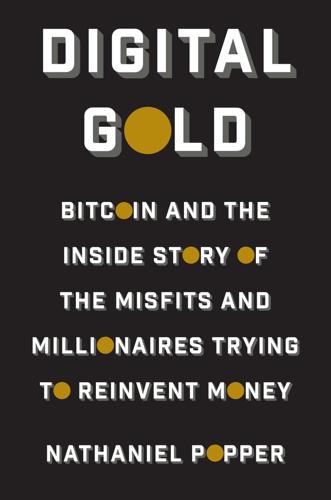
Digital Gold: Bitcoin and the Inside Story of the Misfits and Millionaires Trying to Reinvent Money
by
Nathaniel Popper
Published 18 May 2015
The morning after they arrived at the Valemont lodge, Wences, Briger, and the rest of the men climbed into a red-and-white Bell 212 helicopter sitting just outside the lodge and lifted off toward the high white peaks, for a day of heli-skiing. In the afternoon, the group returned to the lodge and sat around in the expansive common room, an enormous fire crackling away. This was not a crowd to chat about kids and the upcoming Super Bowl. The men had dedicated their lives to making money and Pete pressed them to present their best investment ideas. “Pete, I told you, I’m interested in Bitcoin,” Wences said when his turn came to talk. “It hasn’t changed.” Wences drew the group in with an explanation of the basic notion of a new kind of network that could allow people to move money anywhere in the world, instantaneously—something that these financiers, who were frequently moving millions between banks in different countries, could surely appreciate.
…
Assuming it was some scam, Laszlo poked around to figure out who was secretly making money. He soon realized there was an interesting and high-minded experiment going on and decided to explore further. He began by buying some coins from NewLibertyStandard and then building software so that the Bitcoin code could run on a Macintosh. But like many good coders, Laszlo approached a new project with a hacker’s mind-set, probing where he might break it, in order to test its robustness. The obvious vulnerability here was the system for creating, or mining, Bitcoins. If a user threw a lot of computing power onto the network, he or she could win a disproportionate amount of the new Bitcoins.
…
See conferences (Bitcoin and others) Bitcoin mining about process vulnerability, 41–42 creating blocks and recording transactions, 359–361 creation of ASIC chip, 189–192, 259, 329–330 creation of Avalon chip, 190, 206 formation of mining companies, 294–295, 328–329 formation of mining pools, 192–194 GPU technology, 42, 56, 189–191 growth in China, 259–261, 329 Litecoin mining, 283 more users increased difficulty, 53 role in securing system, 100 Satoshi Nakamoto patterns, 324 specialized computers/computing power, 105, 170, 190, 233, 324, 330, 347 The Bitcoin Show (TV program), 102, 128 Bitcoin software about operation, 23, 357–362 beta testing, 25–26, 58 changes to code, 22–24, 35–39, 43–46, 55–58, 61–62, 141, 309, 346–347 creating/maintaining protocol, x, 5–6, 32, 99, 215–216 creation and launch, xiv, 30–31, 319, 346 downloads, 49–51, 80, 237, 261 Google interest, 100–102 hard fork, 193, 195 “1 RETURN” bug, 56 role of public-key cryptography, 9–10, 17–18 running on Macintosh, 41 transaction malleability problem, 309–314 updates and old versions, 37, 59, 193–195 version 0.2, 37 version 0.3, 47–48 version 0.319, 59 version 0.7, 194–195 version 0.8, 194–195 The Bitcoin Trader (blog), 195 Bitcoin White Paper, 21, 45, 339 Bitfury, 330 bit gold, 18, 338–339 BitInstant.
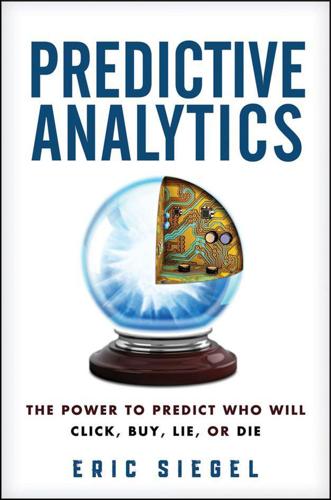
Predictive Analytics: The Power to Predict Who Will Click, Buy, Lie, or Die
by
Eric Siegel
Published 19 Feb 2013
As Black Swan author Nassim Taleb put it in his suitably titled book, Fooled by Randomness, “Nowhere is the problem of induction more relevant than in the world of trading—and nowhere has it been as ignored!” Thus the occasional overzealous yet earnest public claim of economic prediction based on factors like women’s hemlines, men’s necktie width, Super Bowl results, and Christmas day snowfall in Boston. The culprit that kills learning is overlearning (aka overfitting). Overlearning is the pitfall of mistaking noise for information, assuming too much about what has been shown within data. You’ve overlearned if you’ve read too much into the numbers, led astray from discovering the underlying truth.
…
Hollywood glamorizes a future in which we chat freely with the computer like a well-informed friend. In Star Trek IV: The Voyage Home (1986), our heroes travel back in time to a contemporary Earth and are confounded by its primitive technology. Our brilliant space engineer Scotty, attempting to make use of a Macintosh computer, is so accustomed to computers understanding the spoken word that he assumes its mouse must be a microphone. Patiently picking up the mouse as if it were a quaint artifact, he jovially beckons, “Hello, computer!” 2001: A Space Odyssey’s smart and talkative computer, HAL, bears a legendary, disputed connection in nomenclature to IBM (just take each letter back one position in the alphabet); however, author Arthur C.
…
See black box trading Allen, Woody Allstate AlphaGenius Amazon.com employee security access needs machine learning and predictive models Mechanical Turk personalized recommendations sarcasm in reviews American Civil Liberties Union (ACLU) American Public University System Ansari X Prize Anxiety Index calculating as ensemble model measuring in blogs Apollo 11 Apple, Inc. Apple Mac Apple Siri Argonne National Laboratory Arizona Petrified Forest National Park Arizona State University artificial intelligence (AI) about Amazon.com Mechanical Turk mind-reading technology possibility of, the Watson computer and Asimov, Isaac astronomy AT&T Research BellKor Netflix Prize teams Australia Austria automobile insurance crashes, predicting credit scores and accidents driver inatentiveness, predicting fraud predictions for Averitt aviation incidents Aviva Insurance (UK) AWK computer language B backtesting.
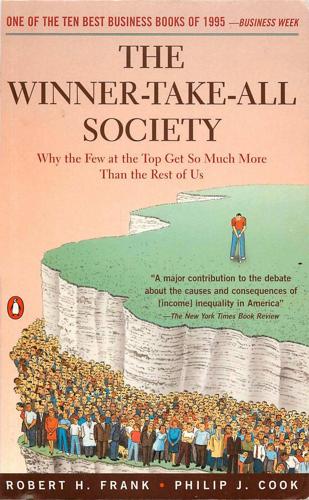
The Winner-Take-All Society: Why the Few at the Top Get So Much More Than the Rest of Us
by
Robert H. Frank, Philip J. Cook
Published 2 May 2011
We might be tempted to object, however, that the winners' moment in the spotlight will surely be a little brighter the more competitors they have to defeat on their way to the top. To be sure, winning in a big arena confers greater prestige than winning in a small one. But suppose the number of contestants in every arena were suddenly to fall by half. Even if the absolute quality of play were to fall a bit, the World Cup, the Super Bowl, the Tour de France, the World Series, the U.S. Open, and the NBA finals would still be major media events. Al though the recognition that accompanies a winning perfonnance de pends on the importance of the arena in which it occurs, importance is measured in relative, not absolute, terms-hence our claim that the status component of the tournament is a zero-sum contest.
…
History is replete with similar winner-take-all battles between rival technologies. In electric power transmission, the contest was between alternating-current methods and direct-current methods. In video recording it was between Beta and VHS. With nuclear reactors, light water-, gas-, heavy-water-, and sodium-cooled designs were the main competitors. Unix, Macintosh, MS-DOS, Windows, and OS-2 have been the most important rival operating systems for personal comput ers. And digital technology battled analog technology in the race to bring high-definition television to market. Fashions, too, often compete in winner-take-all markets. In the world of haute couture, designers often stake their survival on con flicting hunches about hem lengths and lapel widths.
…
One is that these programs seem to attract more and better students. After winning the NCAA basketball championship in 1983 , for example, North Carolina State University experienced a 40 percent rise in applications for admission.15 Boston College applica tions went up from 12,500 in 1984 to 1 6,200 in 1985 after Doug Flu tie won the Heisman llophy for the 1984 season. 16 With more applicants, a school can be more selective. One study has shown that the SAT scores of a school's entering freshmen rise when the school's within-conference winning percentage rises.17 But viewed from the perspective of higher education as a whole, the private incentive to invest in athletics in order to attract better stu dents is clearly too large.
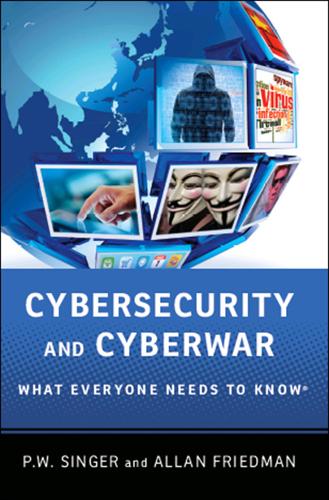
Cybersecurity: What Everyone Needs to Know
by
P. W. Singer
and
Allan Friedman
Published 3 Jan 2014
The topic was why he thought cybersecurity and cyberwar was so important. And yet, when he could only describe the problem as “all this cyber stuff,” he unintentionally convinced us to write this book. Both of us are in our thirties and yet still remember the first computers we used. For a five-year-old Allan, it was an early Apple Macintosh in his home in Pittsburgh. Its disk space was so limited that it could not even fit this book into its memory. For a seven-year-old Peter, it was a Commodore on display at a science museum in North Carolina. He took a class on how to “program,” learning an entire new language for the sole purpose of making one of the most important inventions in the history of mankind print out a smiley face.
…
An attacker could do this either by depriving users of a system that they depend on (such as how the loss of GPS would hamper military units in a conflict) or by merely threatening the loss of a system, known as a “ransomware” attack. Examples of such ransoms range from small-scale hacks on individual bank accounts all the way to global blackmail attempts against gambling websites before major sporting events like the World Cup and Super Bowl. Beyond this classic CIA triangle of security, we believe it is important to add another property: resilience. Resilience is what allows a system to endure security threats instead of critically failing. A key to resilience is accepting the inevitability of threats and even limited failures in your defenses.
…
The victim has to weigh the potential cost of fighting a well-organized attack versus paying off the potential attacker. Websites with time-dependent business models, such as seasonal sales, are particularly vulnerable. One study reported that, “In 2008, online casinos were threatened with just such an [extortion] attack, timed to disrupt their accepting wagers for the Super Bowl unless the attackers were paid 40,000 dollars.” Of course, gambling itself is illegal in many jurisdictions, making it just one of many illicit activities that have extended into cyberspace. What makes these activities relevant to cybersecurity is their virtualization challenges territorial definitions.
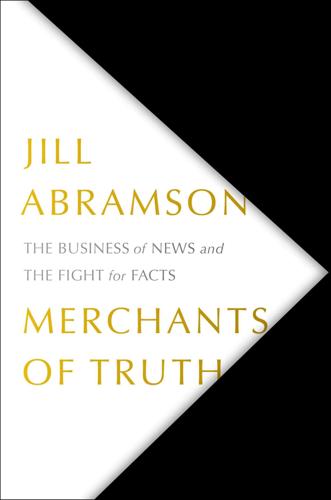
Merchants of Truth: The Business of News and the Fight for Facts
by
Jill Abramson
Published 5 Feb 2019
The Post, seemingly rescued by Bezos, was trying to restore its reputation, hurt by years of cost-cutting and staff reductions that the Graham family couldn’t prevent. As for the new digital competitors, the question was whether they were ready to step up to be our guardians of truth. They considered themselves disruptors, hammering the power structure as if it were the Big Brother screen in Apple’s legendary “1984” TV commercial. Some of them didn’t even believe that editors needed to be gatekeepers. They were sometimes hasty in putting news “out there” and letting readers decide whether something was true. Their headlines were hyped, although recently their desire to be serious news providers had improved quality.
…
“He had a good sense of what powerful people would be interested in.” To get a sense of what interested everyone else, the small paid staff had only to look to Google’s constantly updated log of the most popular searches. When February rolled around, for example, Google identified a surge of the query “What time is the Super Bowl?” The Huffington Post’s search-traffic analyst alerted the newsroom staff, who nimbly whipped up a post that answered the question on everyone’s mind. That post, in turn, appeared atop the list of results Google fetched, giving Huffington’s site a windfall of visitors, who represented advertising revenue in crude form.
…
They knew the world of online video was wide open. When they searched the web for video clips of two highly publicized events, they found nothing. One was the tsunami that ravaged coastal communities along the Indian Ocean in 2004; the other was Janet Jackson’s infamous “wardrobe malfunction” during the Super Bowl halftime show earlier that year. Both were indelibly imprinted on the collective memory of anyone with a cable hookup, but online there was hardly a trace of either besides written accounts and some still photography. That spring the site opened itself to video uploading, this time without the stipulation that videos be romantic.
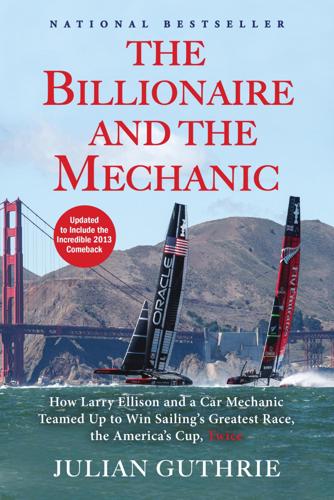
The Billionaire and the Mechanic: How Larry Ellison and a Car Mechanic Teamed Up to Win Sailing's Greatest Race, the Americas Cup, Twice
by
Julian Guthrie
Published 31 Mar 2014
Steve explained that everything that had been developed at NeXT Computer, and everything learned about graphical user interface for the Macintosh, was being applied to the iPhone. Larry responded, “Good answer. That just might work.” More recently, Larry and Steve had talked about Steve’s yacht being completed in Holland. Her name was now Venus, not Aqua. The two had spent years working on her, having started the process by studying the clean lines of a Wally 50m sailboat. Venus was magnificent, with forty-foot-long glass walls, reminding Larry of a floating Apple store. Steve had been looking forward to finishing the boat and taking his family out on her maiden voyage.
…
Norbert gave one of his mechanics a pat on the back and asked about his family before talk gravitated to football. Norbert was a die-hard San Francisco 49ers fan, but he was impressed by the come-from-behind story of the St. Louis Rams, a team that had been losing for nearly a decade and was suddenly on fire. The mechanics talked about the chances of the Rams making it to the Super Bowl. Another mechanic, looking up from under the hood of a car, asked “Norbini” if he’d done any good fishing over the weekend. Norbert, known to love to fish though he hated to sail, said he planned to head out on the bay in coming weeks. During the early summer salmon were caught near the Golden Gate and off the coast of Marin, south of Bolinas.
…
Oracle’s underlying business was strong—the company made over $800 million in operating profit and had a 35 percent operating margin in its second fiscal quarter—but the markets were crashing and Oracle’s stock price was crashing along with them. Nearly half of the Internet companies created since 1995 were gone, casualties of the dot-com bust, which wiped out an estimated $5 trillion in market capitalization. Pets.com began in February 1999 and closed in November 2000, after buying a $1.2 million Super Bowl ad and burning through $300 million in investment capital. Webvan, the Foster City–based grocery home-delivery service created by executives who had no experience in supermarkets—yet attracted funding from companies including Goldman Sachs, Benchmark Capital, Sequioa Capital, and Yahoo—filed for bankruptcy in 2001 after burning through hundreds of millions of dollars to buy a fleet of trucks, build automated warehouses, and expand aggressively nationwide.

Evil Geniuses: The Unmaking of America: A Recent History
by
Kurt Andersen
Published 14 Sep 2020
I remember being in a Des Moines hotel room covering the Democratic caucuses for Time, feeling so state-of-the-art to be filing a story about Hart, a so-called Atari Democrat, through a twenty-eight-pound portable computer connected to a shoebox-size dial-up modem to which we’d docked a curly-corded desktop telephone handset. Just a few weeks earlier, in January 1984, Apple had introduced the Macintosh. Its famous Super Bowl ad, based on George Orwell’s Nineteen Eighty-four, featured a heroine smashing the tyrants’ huge telescreen, a lone nonconformist underdog spectacularly defying the oppressive Establishment. It suited the moment and digital early adopters who were politically aware but not actually, specifically political, in a stylish little allegory with which everyone from Ayn Rand fans to Hart fans to Deadheads might identify.
…
Millions of individual home loans were thrown together, ground up, nicely packaged, and sold to investors in bite-size pieces as financial sausages—nobody really knew what was in any given mortgage-backed security, but they were hot and tasted good. Their main promoter became vice-chairman of Salomon Brothers, the biggest bond-trading firm in the world, who by 1984 was claiming that just that one sausage-extruding part of his firm “made more money than all the rest of Wall Street combined.” No wonder he was giddy: a new federal law in 1984 declared by fiat that mortgage-backed securities were now as safe as U.S. government bonds, the ultimate low-risk guarantee, as long as one of those big private rating companies gave the particular sausage its seal of approval.
…
The one genuinely new pop cultural genre, hip-hop, made an explicit, unapologetic point of quoting old songs. Science fiction, the cultural genre that is all about imagining the future, got a new subgenre in the 1990s that was considered supercool because it was set in the past—steampunk. And commercialized futurism also became oddly familiar and nostalgic. Apple devices of the twenty-first century and glassy, supersleek Apple stores feel “contemporary” in the sense that they’re like props and back-on-Earth sets from 2001: A Space Odyssey, the 2000s as they were envisioned in the ’60s, the moment before nostalgia took over everything. The nostalgia division of the fantasy-industrial complex began merchandising in precincts beyond entertainment, from fake-old cars like Miatas and PT Cruisers to retail chains like Restoration Hardware selling stylish fake-old things.
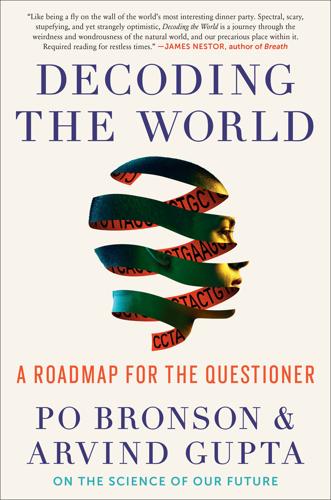
Decoding the World: A Roadmap for the Questioner
by
Po Bronson
Published 14 Jul 2020
Passive and accepting. Yeah. I find that creepy. The message of all those shows is a warning against passiveness. Don’t be a sheep or this will happen to you. 5 Mail-Order CRISPR Kits Allow Absolutely Anyone to Hack DNA Scientific American CRISPR wasn’t the first way to edit the genome, just like the Apple Macintosh wasn’t the first computer. But there was something about CRISPR’s ease of use (at least the way it was portrayed in the media) that made it seem like it would lead to this great mass democratization of gene editing—the biological equivalent of every home having a desktop computer connected to the internet.
…
I’m just using the Green New Deal because it’s got the catchiest name. My hunch is that if we force ourselves to view health care reform through this lens, it’s going to reveal new insights—and perhaps change our priorities. I’m fully aware this is uncharted territory. It’s an experiment. To win Super Bowl LIII, the New England Patriots didn’t say, “Hey, let’s borrow the game plan the Lakers used from the Showtime era!” And to beat back Al Qaeda, Gen. Stanley McChrystal didn’t say, “Let’s try Steve Jobs’ plan to create the iPhone.” I know, it’s outrageous. Healing the planet can’t possibly teach us anything about healing our bodies!
…
If Hallinan’s array picks up an aurora, they’ll know life could be there. In fact, the planet we talk most about visiting, Mars, is a cautionary tale. Mars very likely had life on it several billion years ago. But it lost its magnetic field when its molten core died out. Gravity plummeted, and the solar wind blew away its atmosphere. Hammered by gamma rays, life on the surface of Mars disappeared from sight. So even if we create a colony on Mars, we’d have to live under a lead shield, or be torn apart by radiation. Regularly, the sun fires off coronal mass ejections, a billion tons of plasma hurtled our way at more than a million miles per hour, Hallinan describes.
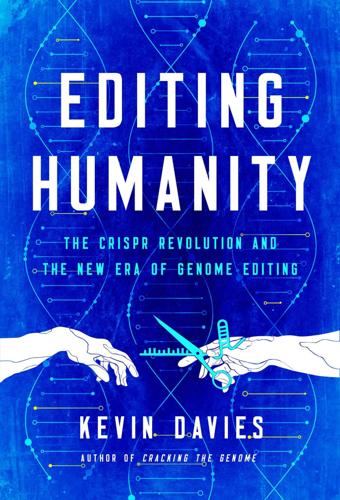
Editing Humanity: The CRISPR Revolution and the New Era of Genome Editing
by
Kevin Davies
Published 5 Oct 2020
“Oh wow, I’ve never seen this before, this is fantastic.”25 Manny hasn’t needed a blood transfusion in the nine months since the therapy. Williams hopes for similar results in his next patients, including twenty-six-year-old Brunel Etienne Jr., who started chemotherapy shortly after attending the Super Bowl. The tickets were a gift from New England Patriots star Devin McCourty, who has a relative with SCD. Early success stories like these from medical centers in Boston or Stanford or the NIH are wonderful, but have little relevance for the millions of sufferers in Africa, where the impact of SCD is felt the hardest.
…
Peter Little. Genetic Destinies. New York: Oxford University Press, 2002. Mark Lynas. The Seeds of Science: Why We Got It So Wrong On GMOs. New York: Bloomsbury Sigma, 2018. Jeff Lyon and Peter Gorner. Altered Fates: Gene Therapy and the Retooling of Human Life. New York: W. W. Norton, 1995. Kerry Lynn Macintosh. Enhanced Beings: Human Germline Modification and the Law. New York: Cambridge University Press, 2018. John Maddox. What Remains to Be Discovered: Mapping the Secrets of the Universe, the Origins of Life, and the Future of the Human Race. New York: Free Press, 1998. Charles C. Mann. The Wizard and the Prophet: Two Groundbreaking Scientists and Their Conflicting Visions of the Future of Our Planet.
…
Meanwhile, studies by Merlin Crossley’s group in Sydney are developing an approach he calls “organic gene therapy,” using CRISPR-Cas9 to recapitulate specific HPFH mutations to boost HbF levels.6 Stanford’s Matthew Porteus has been on a quest to use genome editing in the clinic since the early 2000s.7 Using CRISPR-Cas9 to break the DNA before fixing the sequence, Porteus says, is like fixing the headlight on someone’s car by first busting the headlight with a hammer before repairing it. The goal is to ensure that about 20 percent of the stem cells repopulating the bone marrow are genetically fixed. That means harvesting some 500 million stem cells from any given patient. In a specialized facility, those cells are mixed with Cas9 and the AAV vector. The modified cells will be transplanted back into patients, after they have recovered from chemotherapy to make room for the modified stem cells.
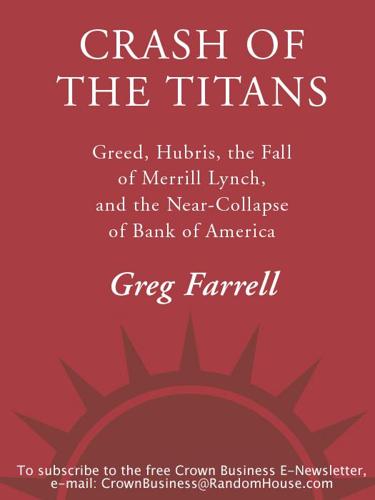
Crash of the Titans: Greed, Hubris, the Fall of Merrill Lynch, and the Near-Collapse of Bank of America
by
Greg Farrell
Published 2 Nov 2010
Lewis avoided explaining to his young daughter why her friend’s father, a commercial real estate developer, had a license plate on his car that consisted of six letters: FU NCNB. When Lewis tried to join the Young Presidents Organization in Dallas, he was sponsored by Roger Staubach, the beloved ex-quarterback of the Dallas Cowboys. It didn’t matter. The city’s love for Staubach, a star player who had led its team to Super Bowl victories, was outweighed by its leaders’ visceral hatred of Lewis and his Charlotte colleagues. After two years of such vehement rejection—at a time when the bank’s retail business in the Lone Star State was booming—Lewis came close to snapping. He and his wife, Donna, were having dinner one evening at a fashionable restaurant when Lewis overheard a remark from a neighboring table about NCNB.
…
ONE TEAM, SHARED VALUES, SHARED FUTURE 1 But on January 15, word started leaking out: “Bank of America to Get Billions in U.S. Aid; Sides Finalizing Terms for Fresh Bailout Cash,” by Dan Fitzpatrick, Damian Paletta, and Susanne Craig, The Wall Street Journal, Jan. 15, 2009. 2 On this morning, he got no further than the Financial Times: “Merrill Delivered Bonuses Before BofA Deal,” by the author and Julie MacIntosh, Financial Times, Jan. 22, 2009. CHAPTER 21. THE BOSTON MAFIA 1 not only had Lewis been consulting with the bank’s largest investors: “BofA Faces Pressure to Split Top Roles,” by Dan Fitzpatrick and Joann S. Lublin, The Wall Street Journal, April 17, 2009. 2 When Lewis returned from vacation after Labor Day: “In U.S.
…
In an emergency situation such as the one involving Lehman, Paulson and Geithner had assumed that the British would be supportive and allow the Barclays acquisition of Lehman to proceed, since it would benefit capital markets around the world. But the British weren’t playing along. Around 10:30, Paulson and Geithner broke the news to the Wall Street executives on the first floor. The group had been in the process of hammering out a $30 billion pool to support the Barclays deal, but the update from the regulators changed the dynamic in the room. Paulson returned upstairs, while Geithner urged the bankers to keep at it, in case the Barclays deal did come off. But he made it clear that Lehman was not going to be bailed out with federal money.
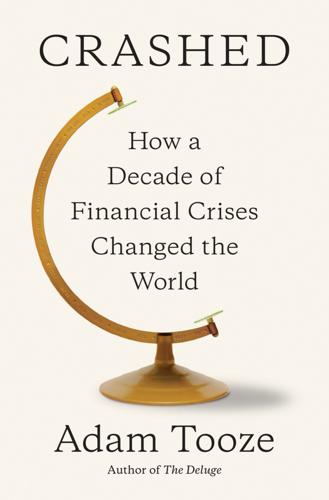
Crashed: How a Decade of Financial Crises Changed the World
by
Adam Tooze
Published 31 Jul 2018
These once great powerhouses of American industrialism were rescued by diverting funds originally allocated to the bank bailout. By 2013 both GM and Chrysler were back in profit. Like the rest of American big business, they weathered the storm and Chrysler celebrated its recovery in the way that corporate America does, by booking a slot to run a headline-grabbing commercial during the Super Bowl in February 2014. They wanted something that would make a splash and they commissioned the man to do it. The spot was written, directed and acted in person by Bob Dylan, the wizened bard of offbeat Americana. Against a backdrop of Hopperesque noir, Dylan delivered a striking piece of high-caliber nationalist kitsch: Is there anything more American than America?
…
“Citigroup Stock Sinks to an All-Time Low of 97 Cents,” May 4, 2009, http://www.huffingtonpost.com/2009/03/05/citigroup-stock-sinks-to_n_172167.html. 4. P. Wintour and J. Treanor, “RBS Bonuses to Reach £775m Despite Treasury Tough Talk,” Guardian, February 17, 2009, 5. B. White, “What Red Ink? Wall Street Paid Hefty Bonuses,” New York Times, January 28, 2009. 6. G. Farrell and J. Macintosh, “Merrill Delivered Bonuses Before BofA Deal,” Financial Times, January 21, 2009. 7. “Obama’s Statement on AIG,” New York Times, March 16, 2009. 8. K. Guha and E. Luce, “Greenspan Backs Bank Nationalization,” Financial Times, February 17, 2009. 9. “Nationalization: Is It the Only Answer to Save Banks?
…
What the most influential voters and voices in German public opinion wanted was simple: discipline all around. In 2006 a commission was set up to devise a new federal fiscal settlement. The idea, following the Swiss example of 2001, was to adopt a “debt brake” to block any further expansion of debt at the Bund, Länder or Commune level. Hammering out the multilevel political deal was slow work. But Steinbrück and the Federal Ministry of Finance were sanguine. As the global economic horizon began to darken in 2007–2008, the German finance ministry was projecting a budget surplus by 2011.23 Of course, national politics and the drama of reunification gave a particular hue to the German discussions.
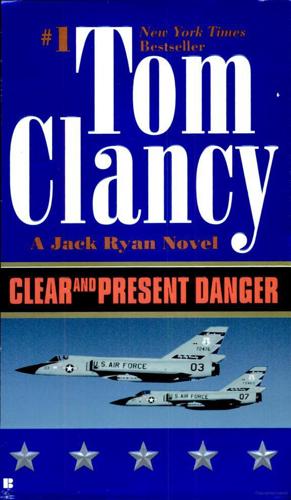
Clear and Present Danger
by
Tom Clancy
Published 2 Jan 1989
"We're not sure, but probably an encipherment algorithm." "Ah! Russian communications systems? The Sovs getting sophisticated on us?" "You don't need to know that," O'Day pointed out. "You guys are no fun at all," the man said as he slid the disk into the drive. The computer to which it was attached was a new Apple Macintosh IIx, each of whose expander slots was occupied by a special circuit board, two of which the technician had personally designed. O'Day had heard that he'd work on an IBM only if someone put a gun to his head. The programs he used for this task had been designed by other hackers to recover data from damaged disks.
…
Davidoff's good - I mean, he's really good in front of a jury - but so's the defense guy, Stuart. The local DEA hates his guts, but he's an effective son of a bitch. The law is pretty muddled. What'll the judge say? Depends on the judge. What'll the jury say - depends on what the judge says and does. It's like putting a bet down on the next Super Bowl right now, before the season starts, and that doesn't even take into account what'll happen in the U.S. Court of Appeals after the trial's over in District Court. Whatever happens, the Coasties are going to get raped. Too bad. No matter what, Davidoff is going to tear each of 'em a new asshole for getting him into this mess."
…
"I promised the American people that we'd do something about this problem," the President observed crossly. "And we haven't accomplished shit." "Sir, you cannot deal with threats to national security through police agencies. Either our national security is threatened or it is not." Cutter had been hammering that point for years. Now, finally, he had a receptive audience. Another grunt: "Yeah, well, I said that, too, didn't I?" "Yes, Mr. President. It's time they learned a lesson about how the big boys play." That had been Cutter's position from the beginning, when he'd been Jeff Pelt's deputy, and with Pelt now gone it was his view that had finally prevailed.